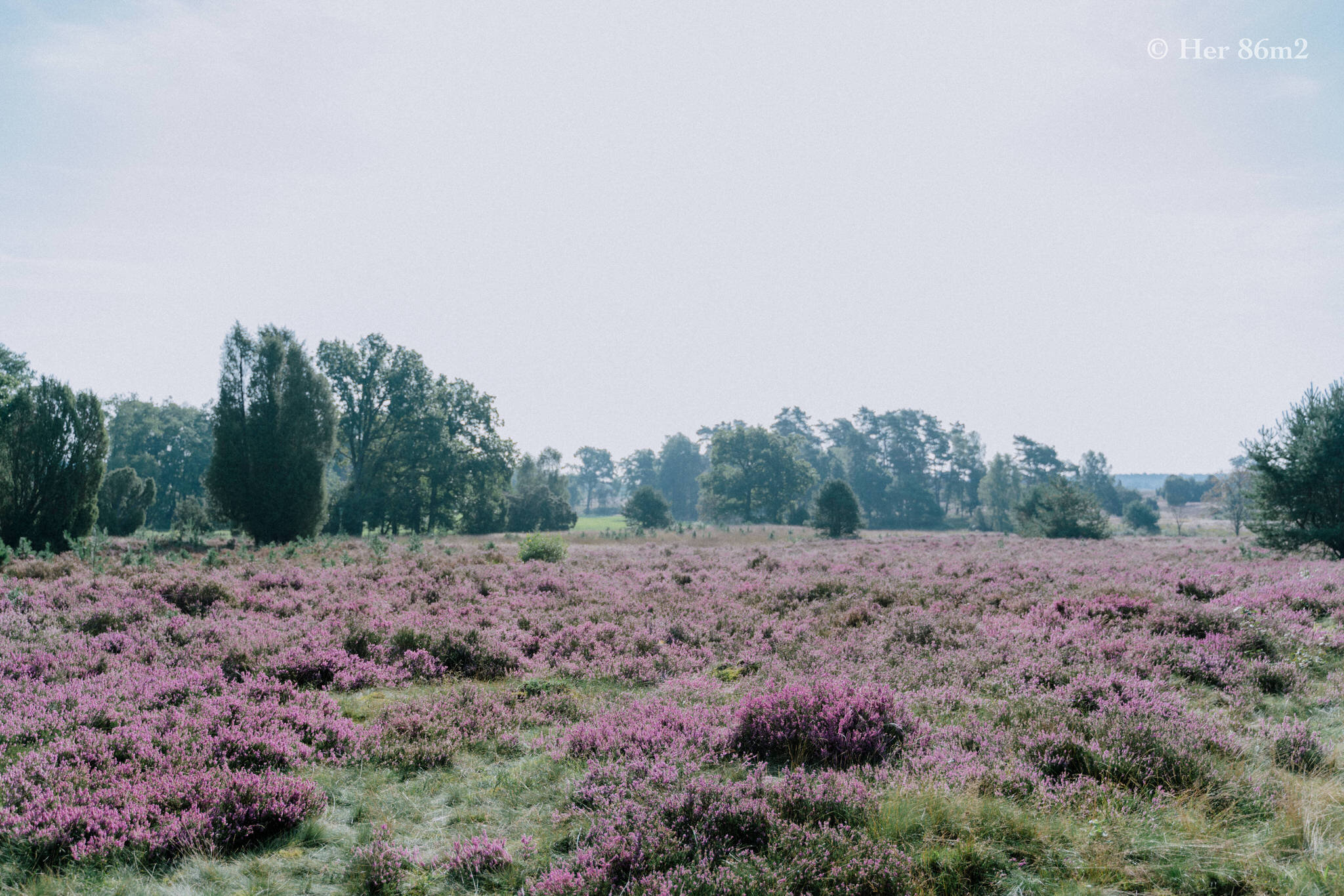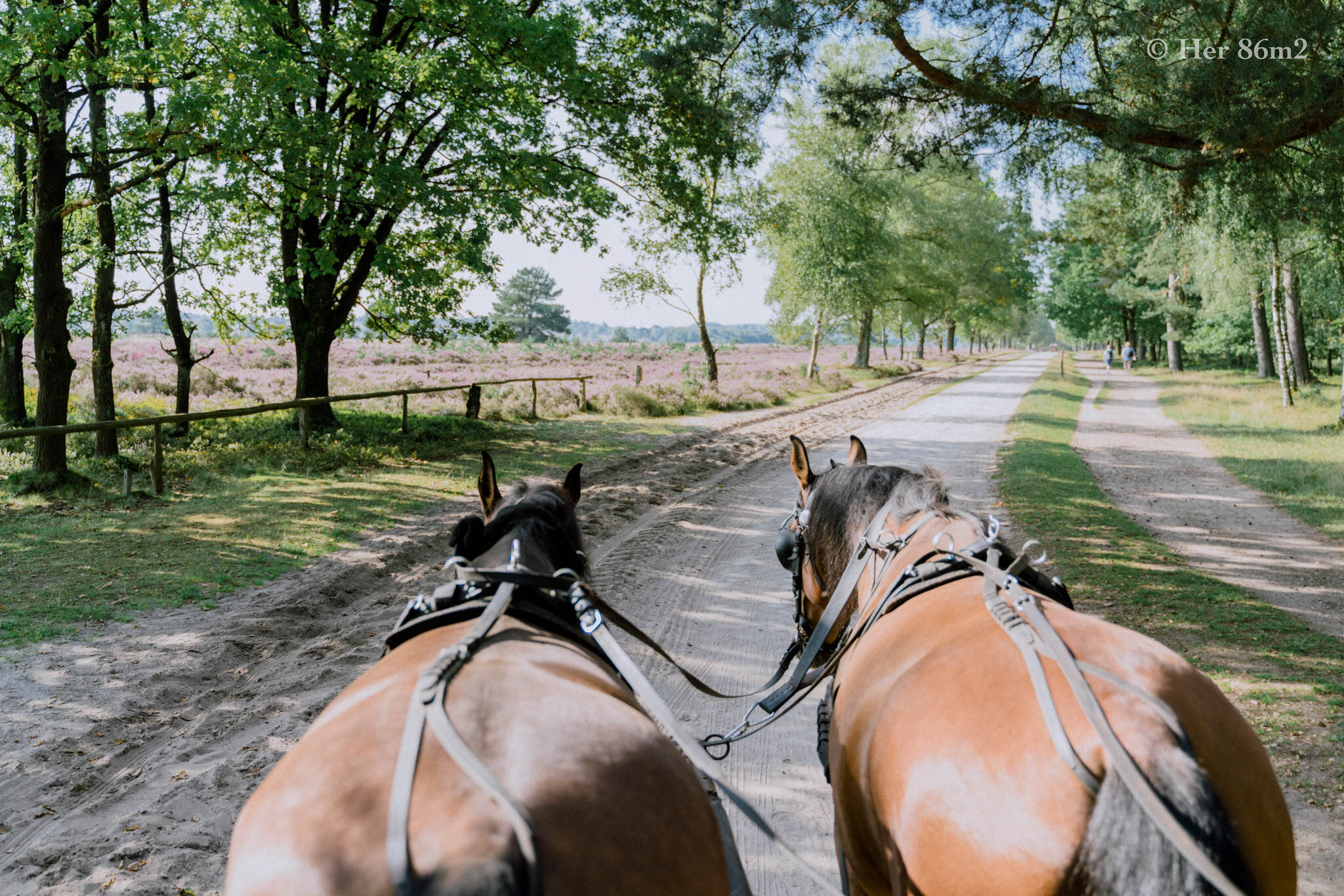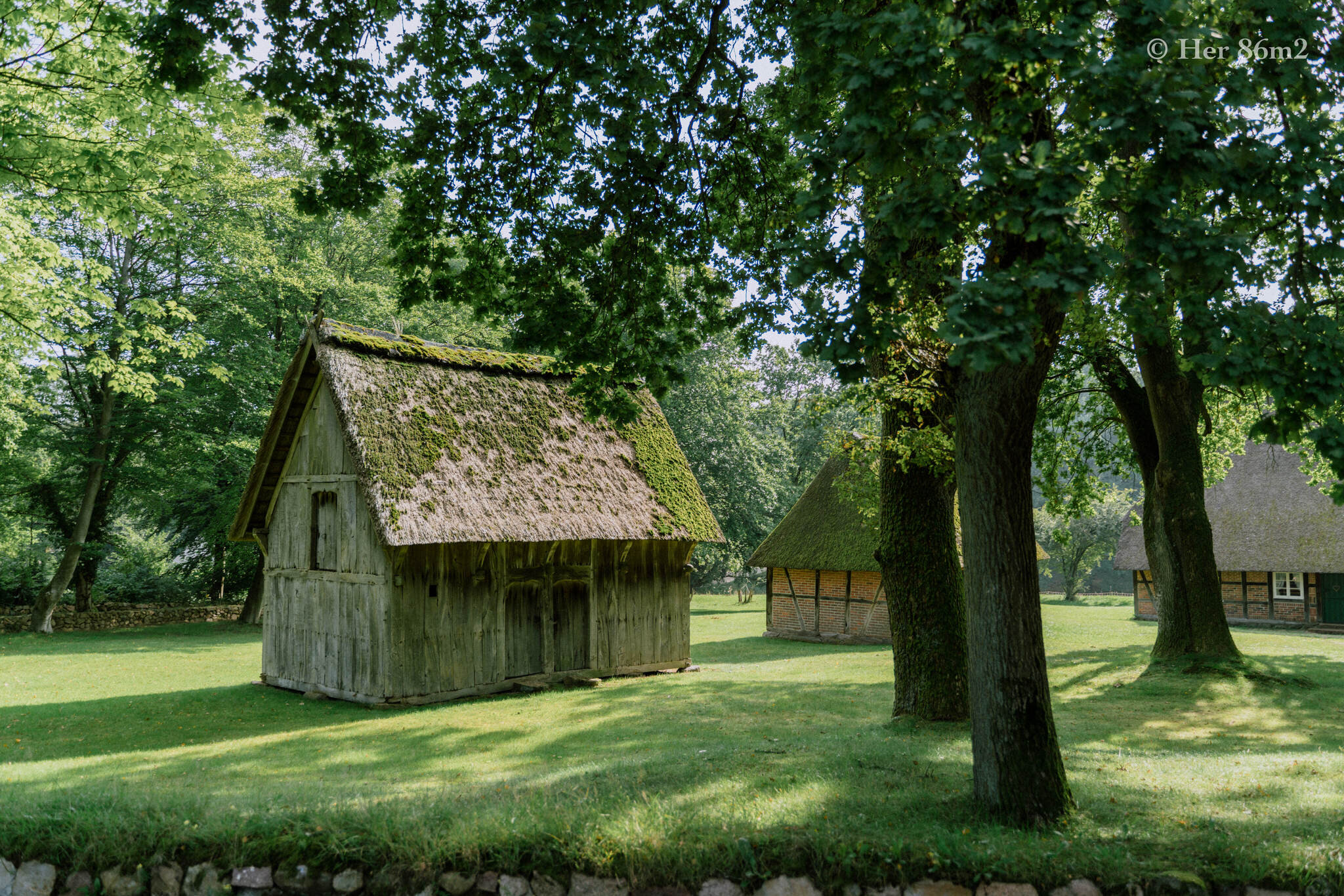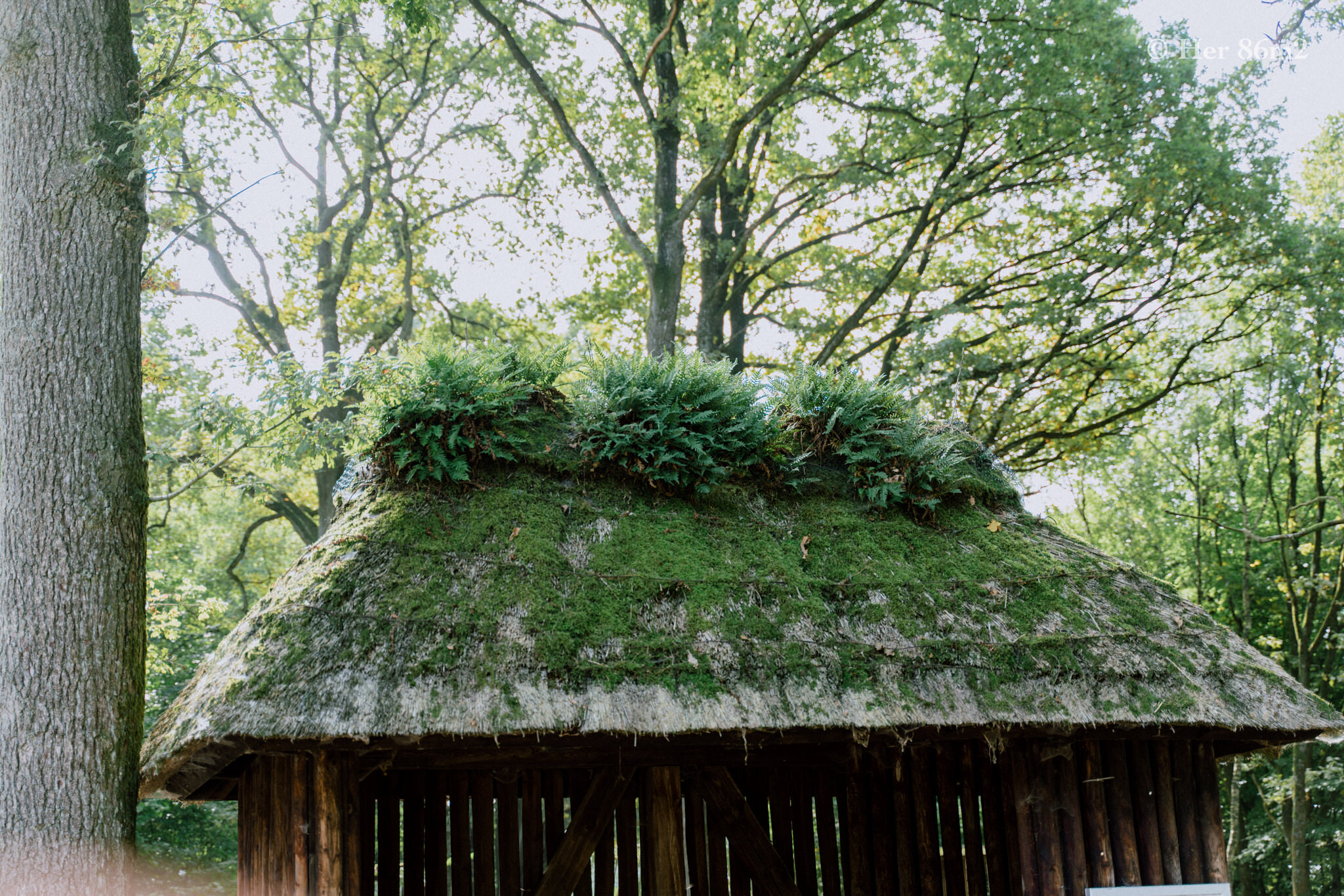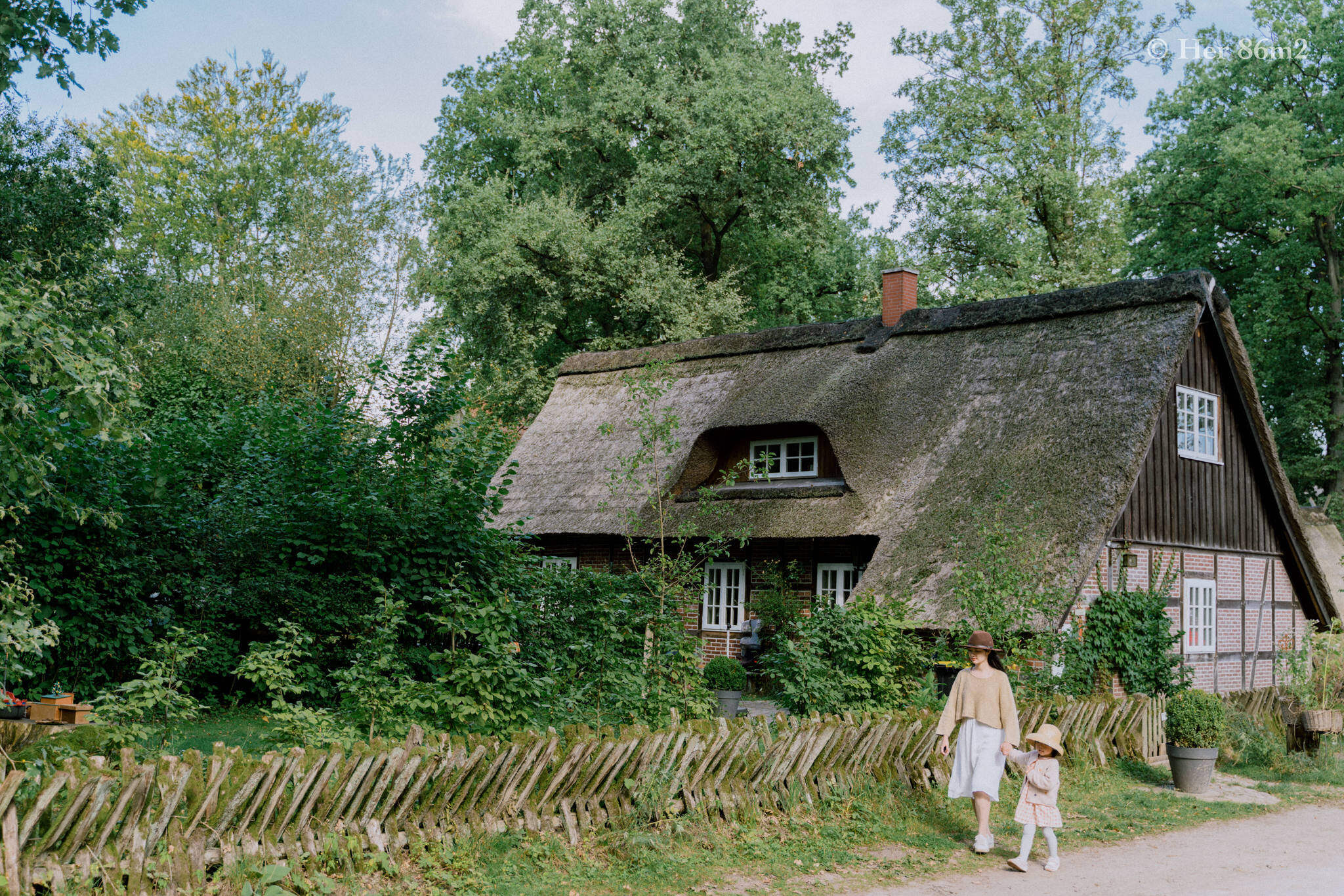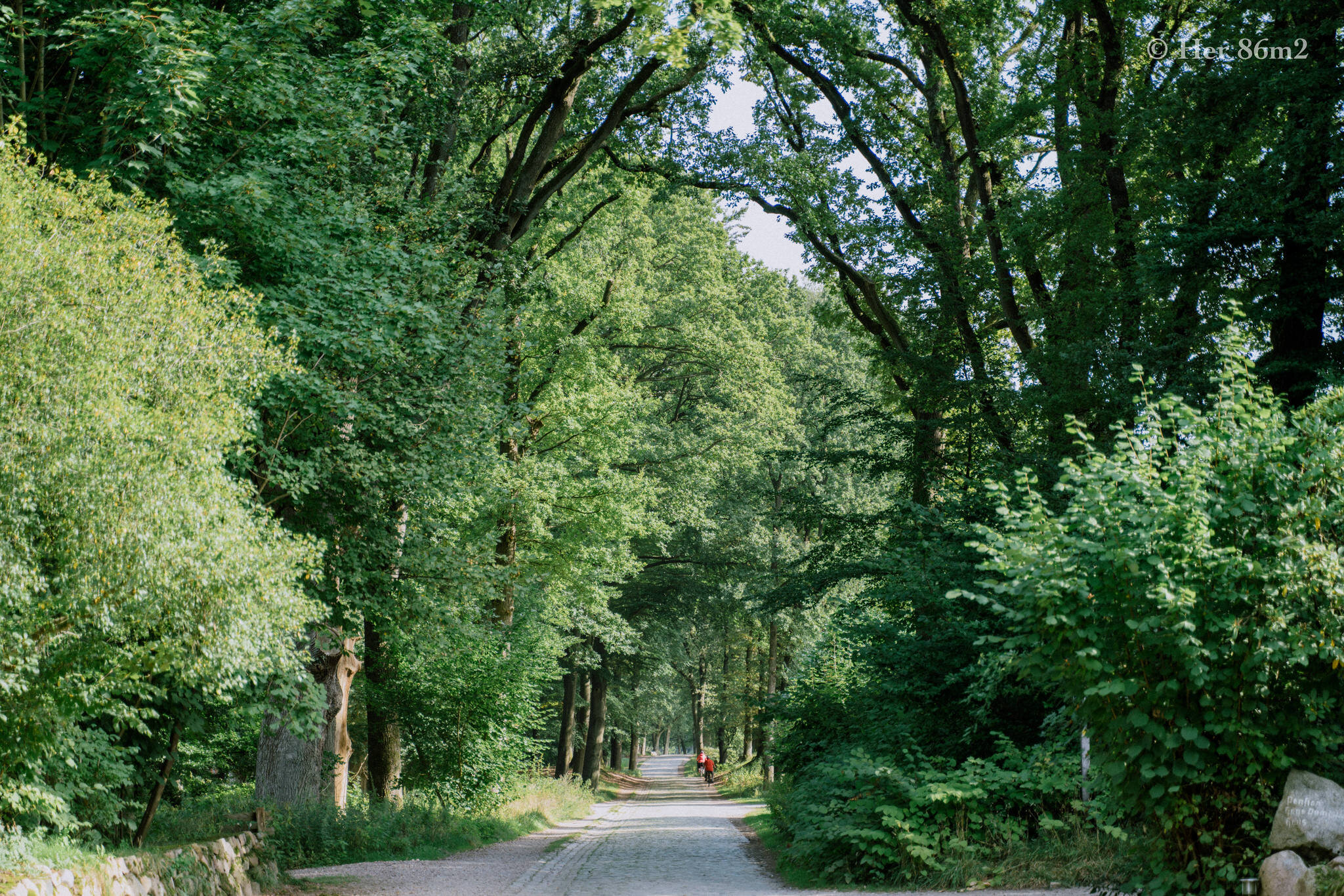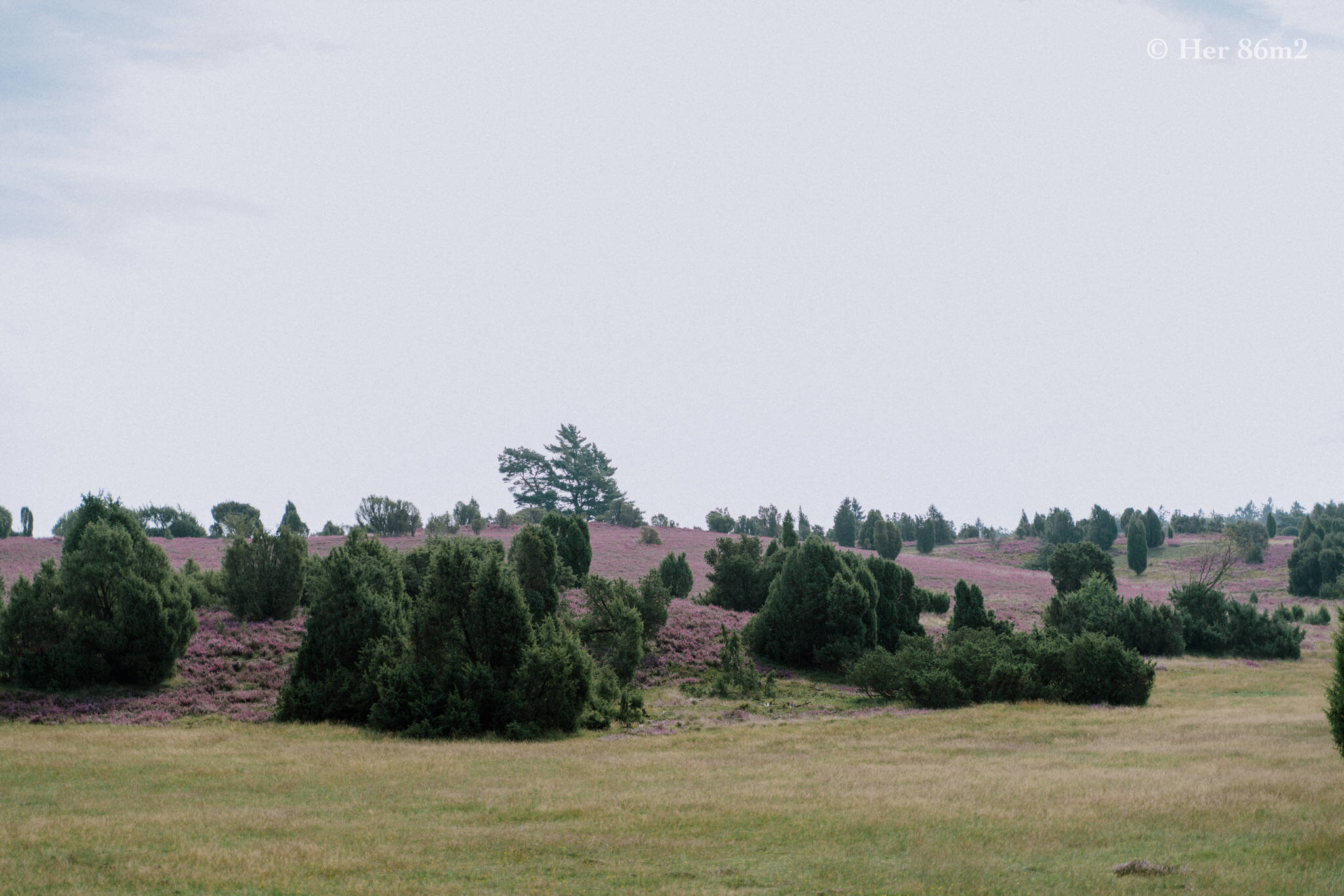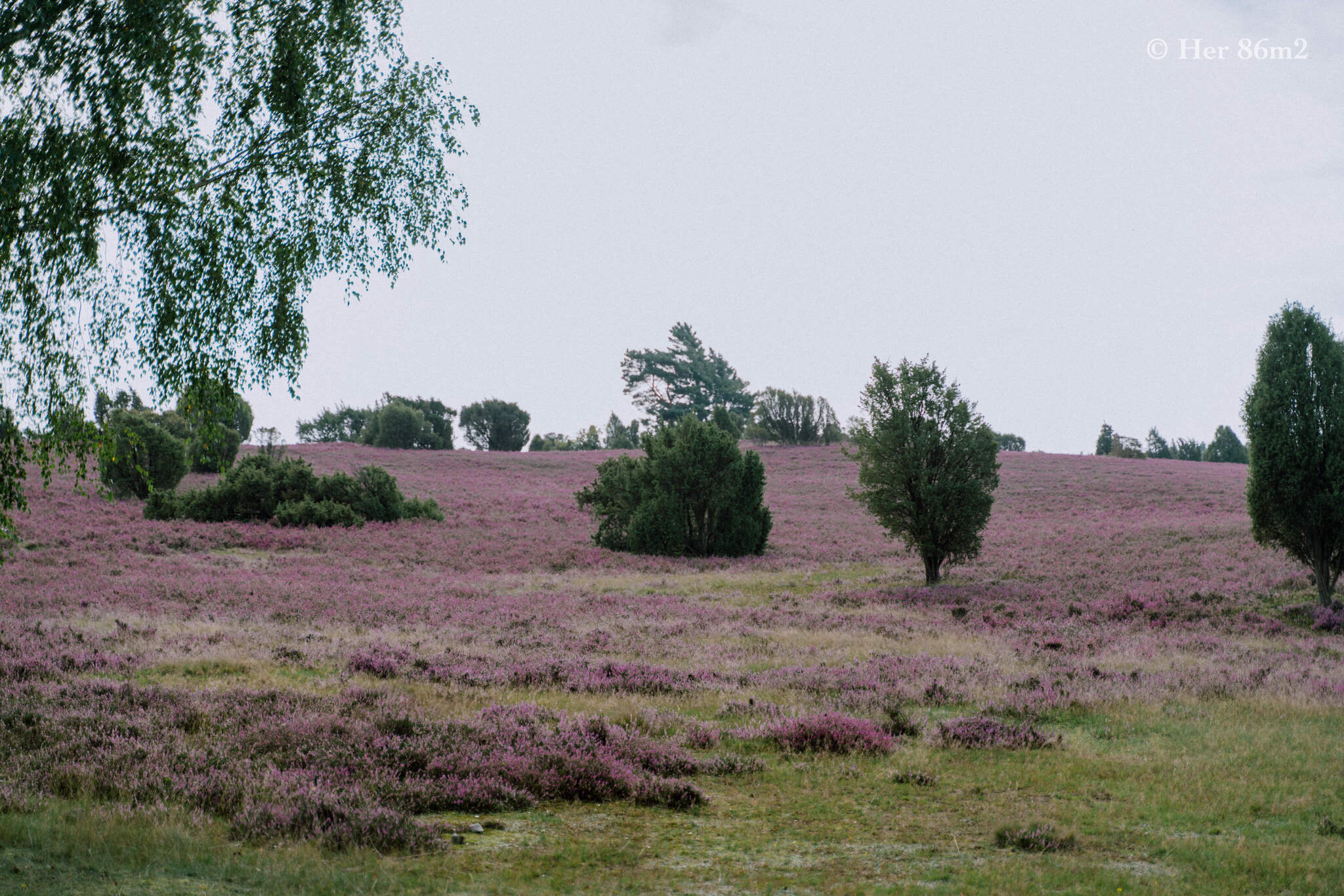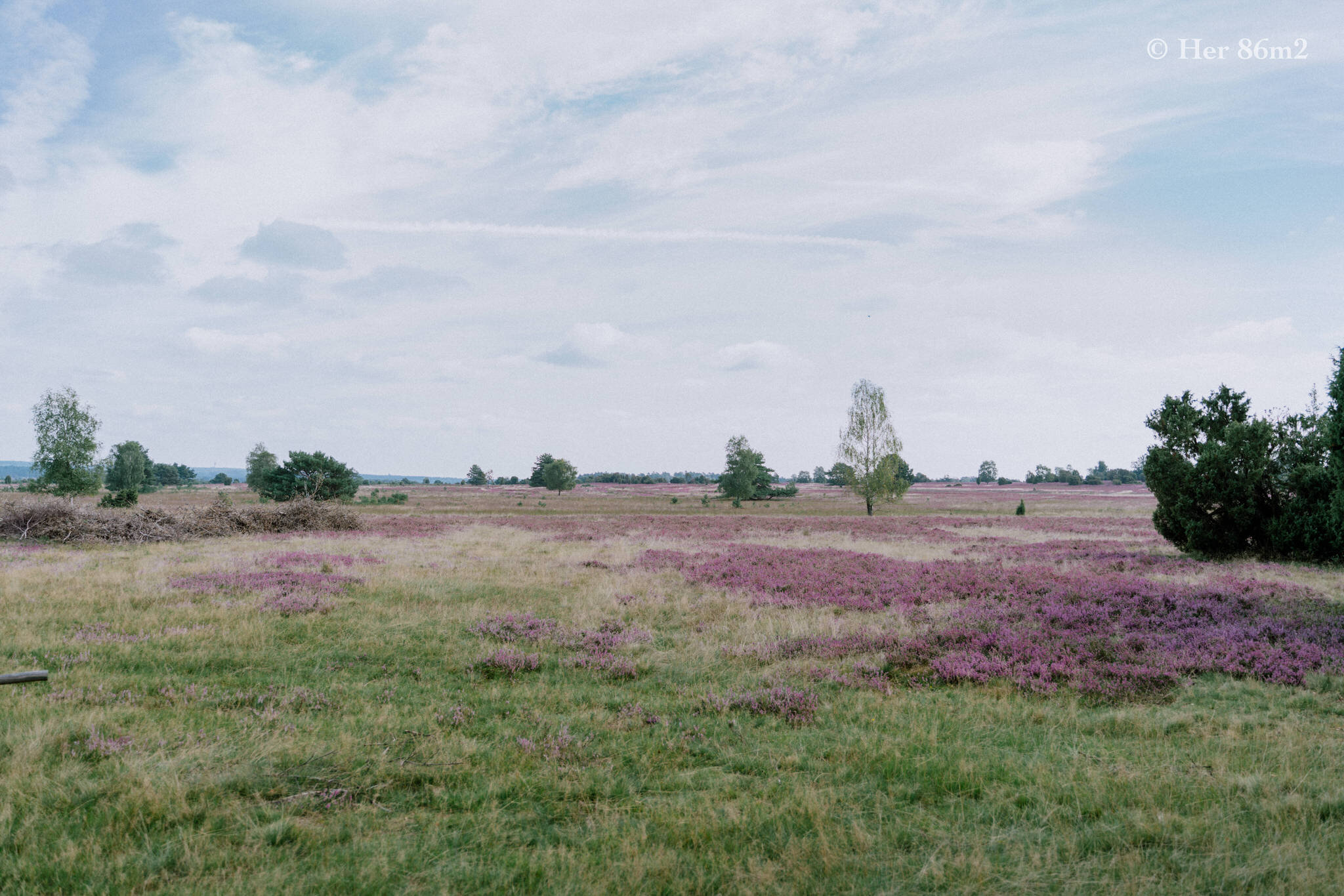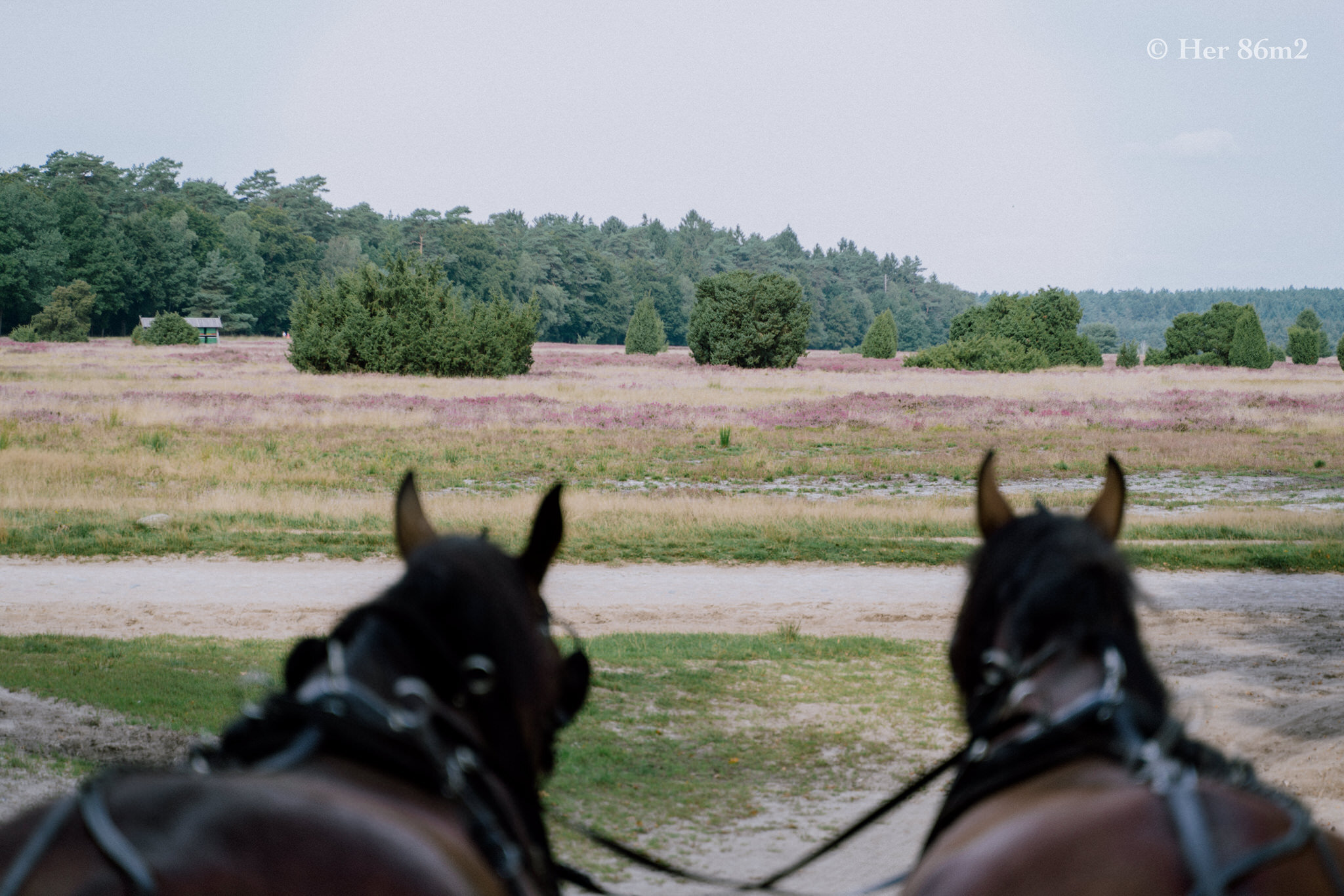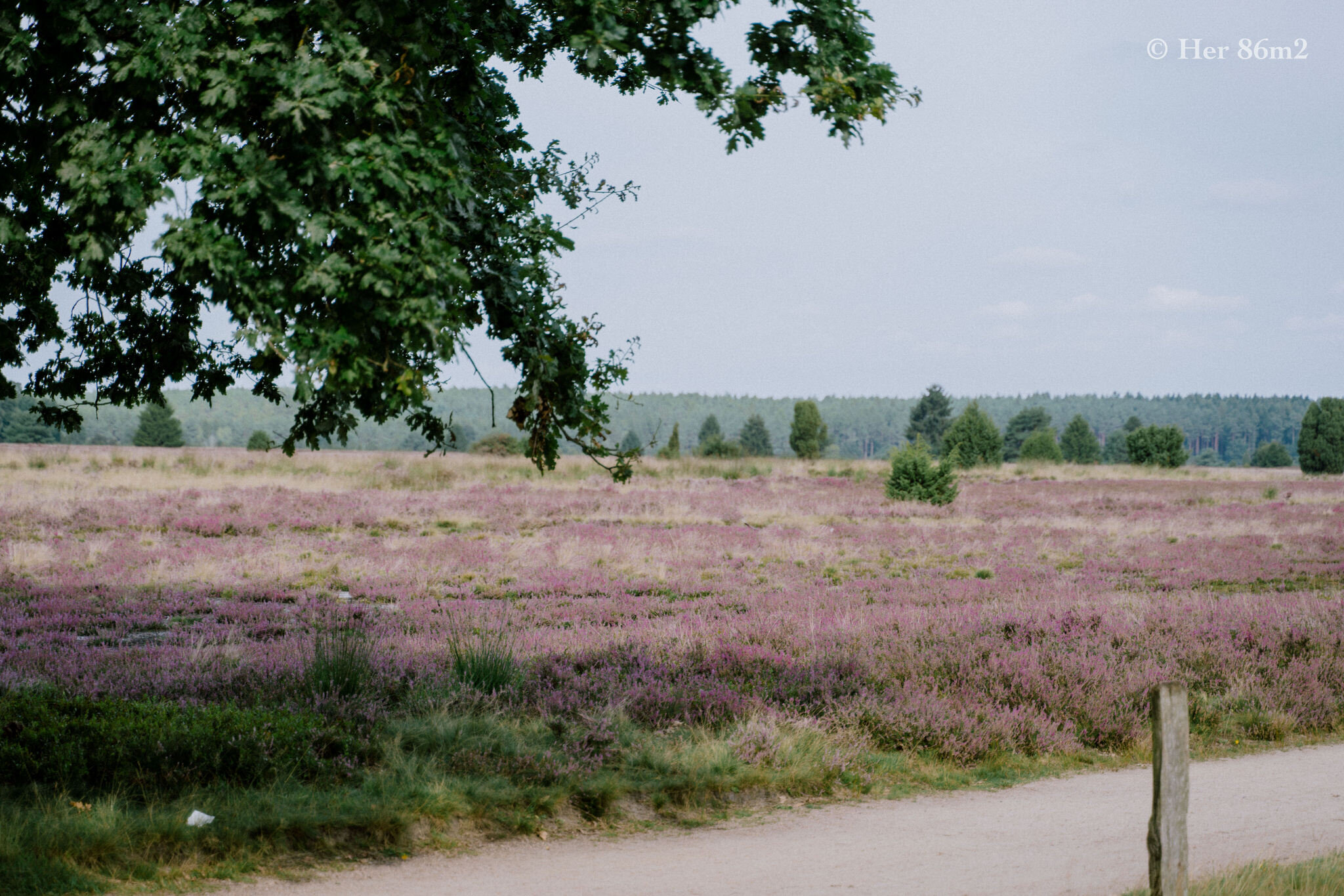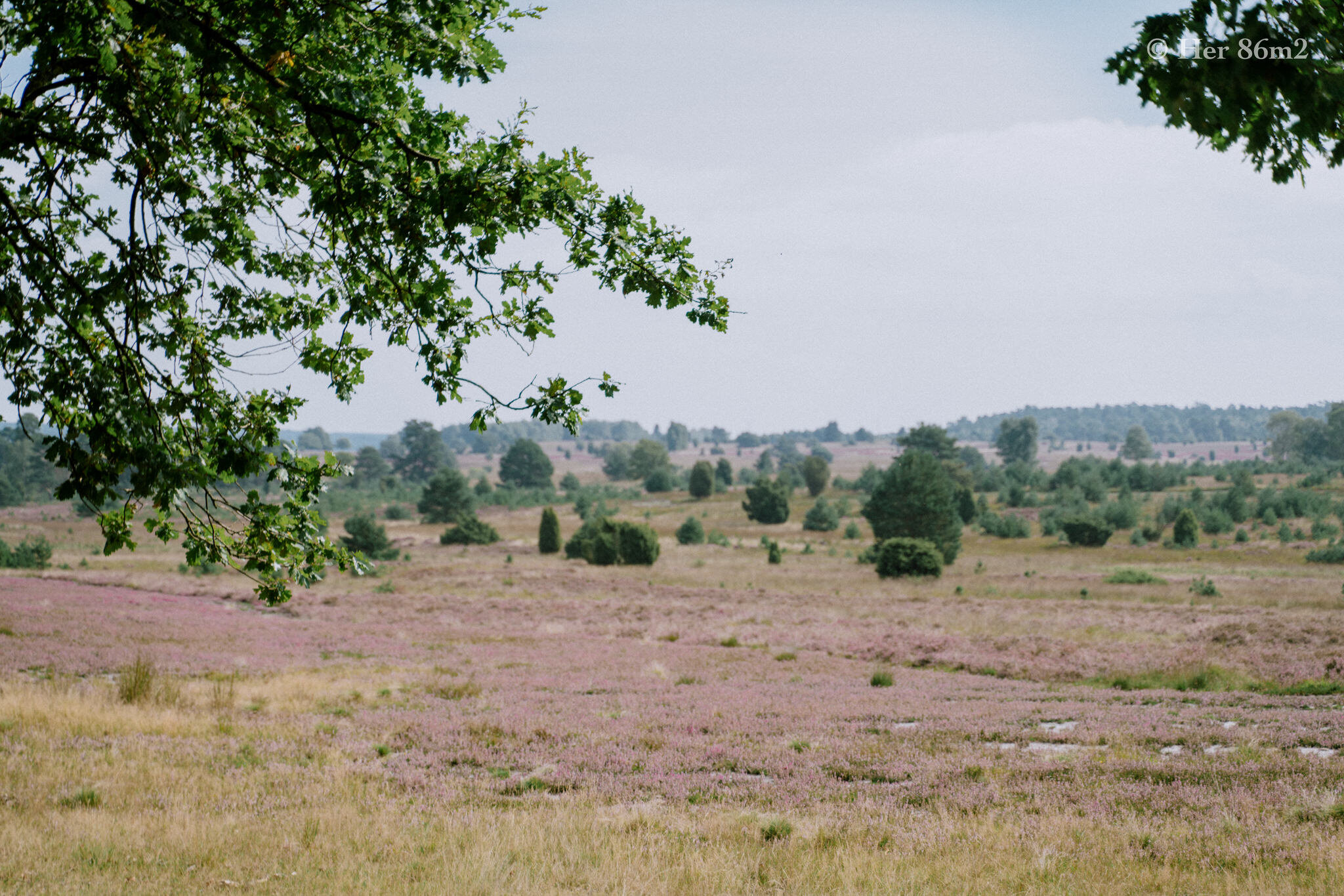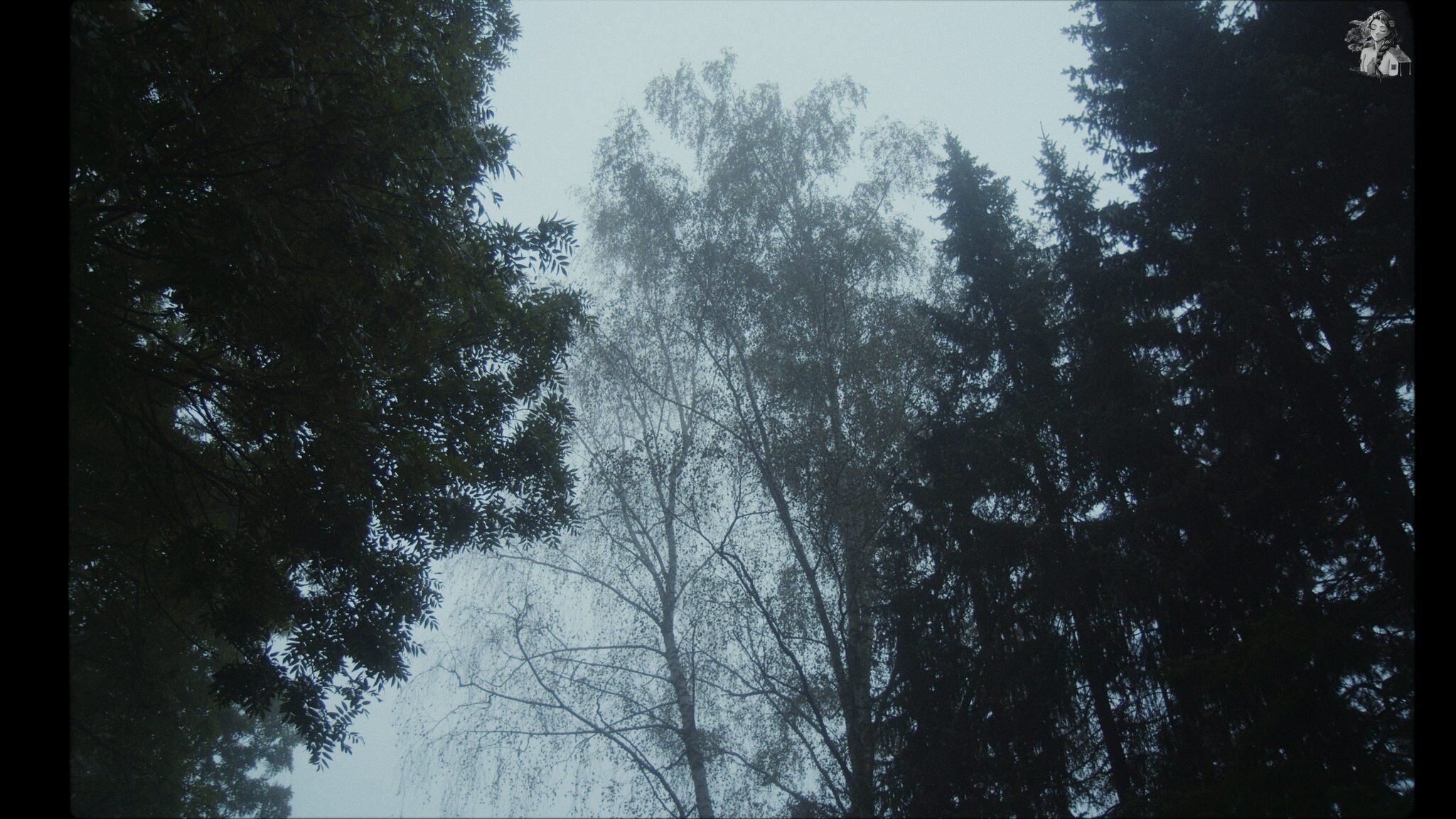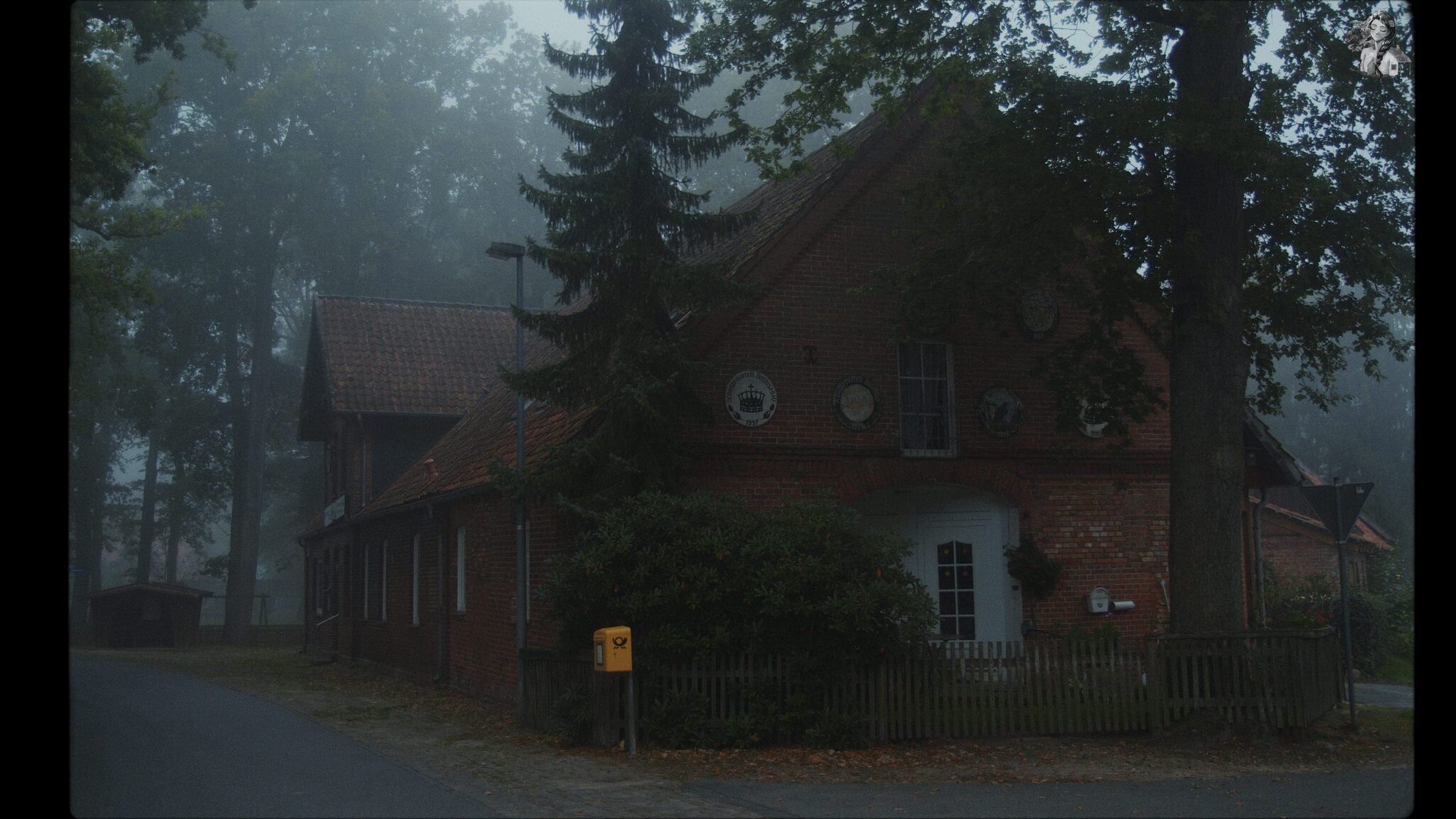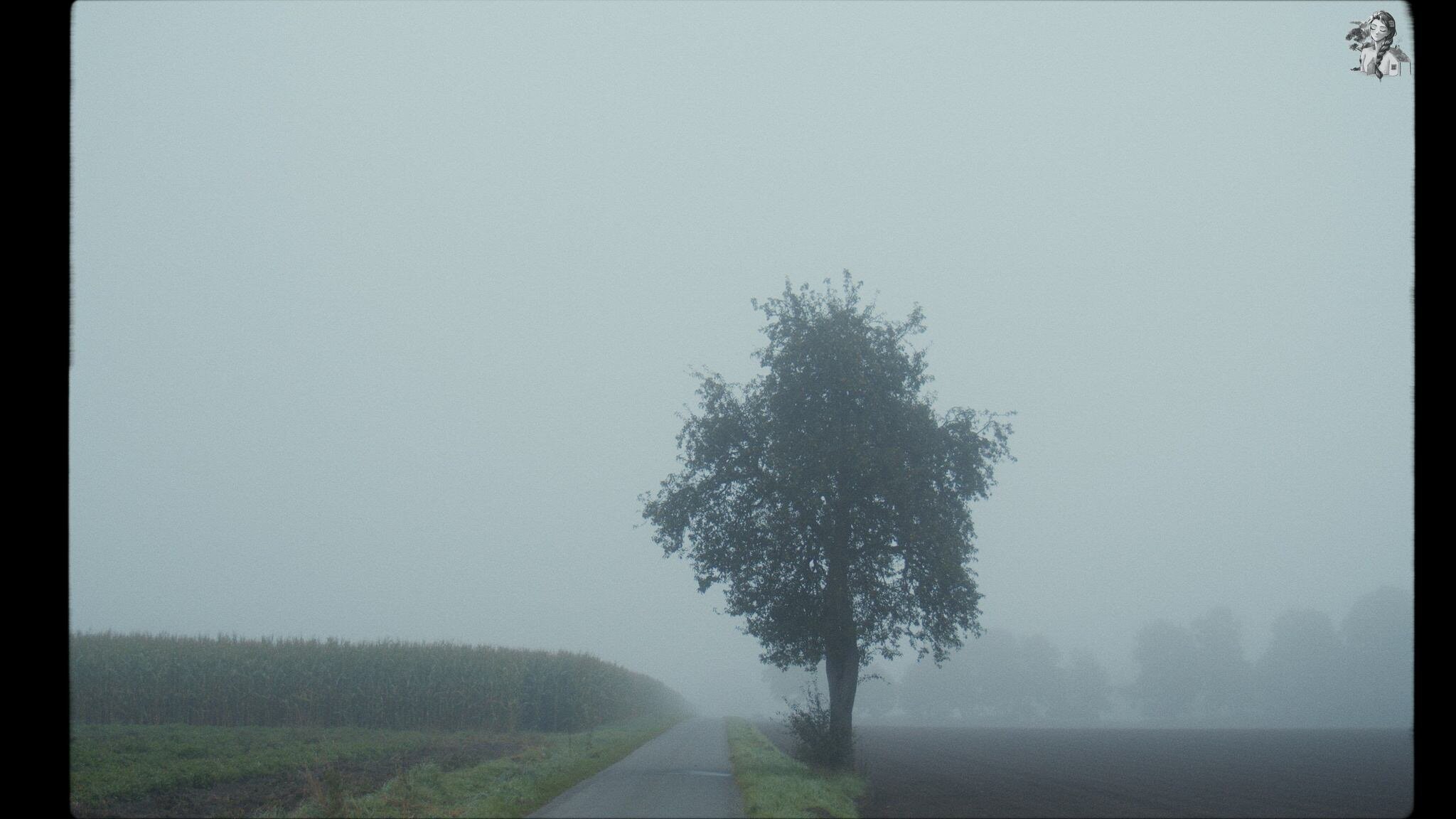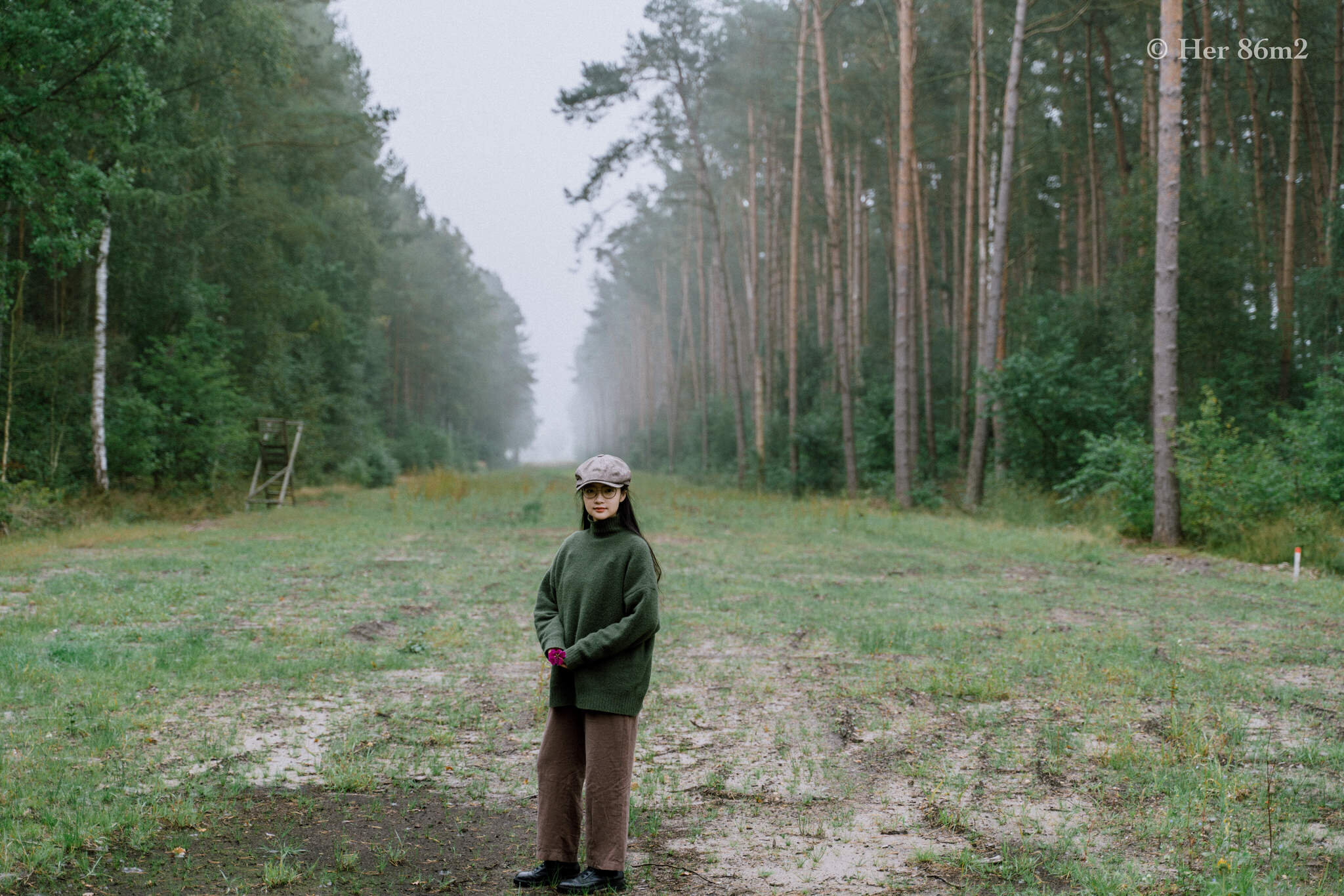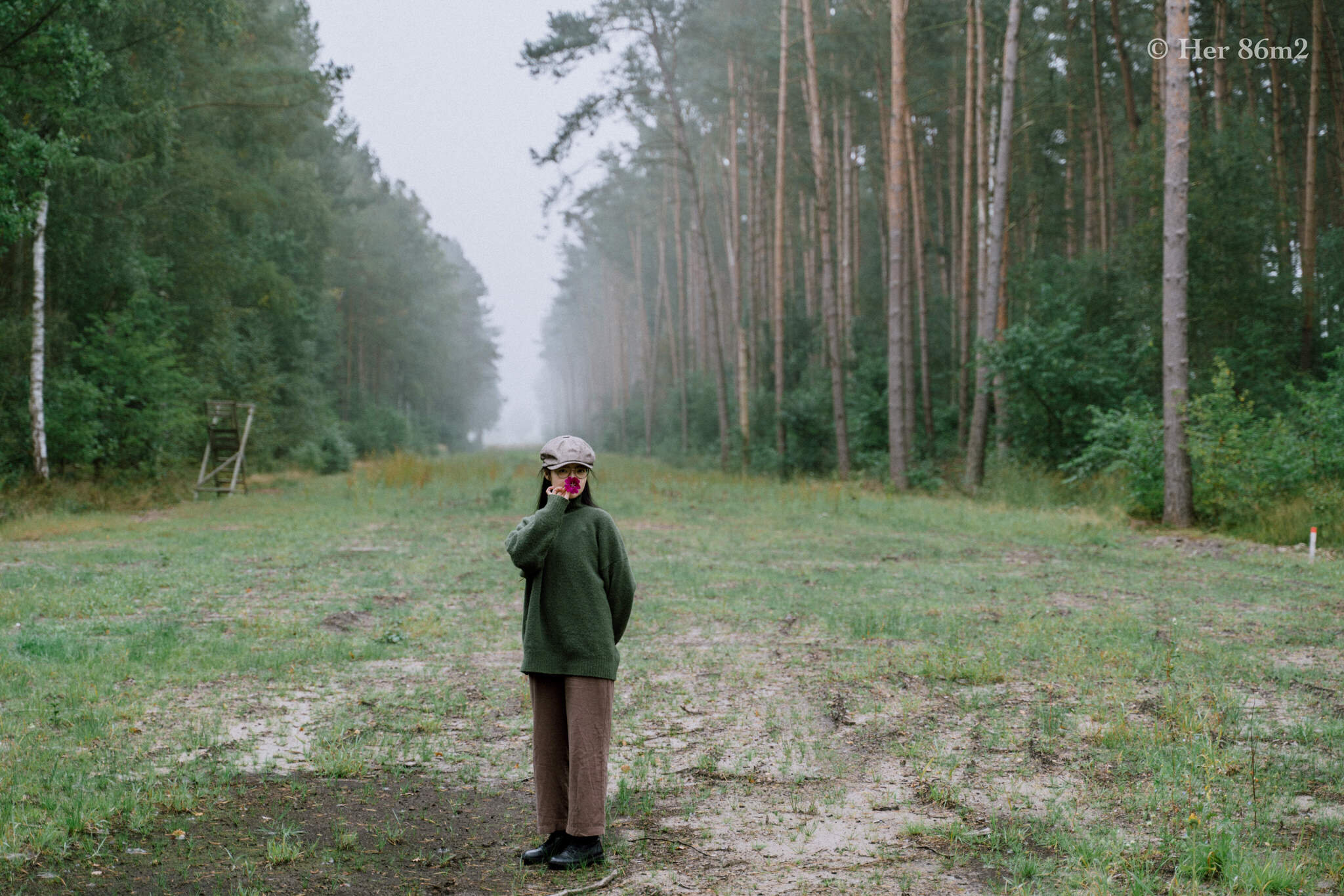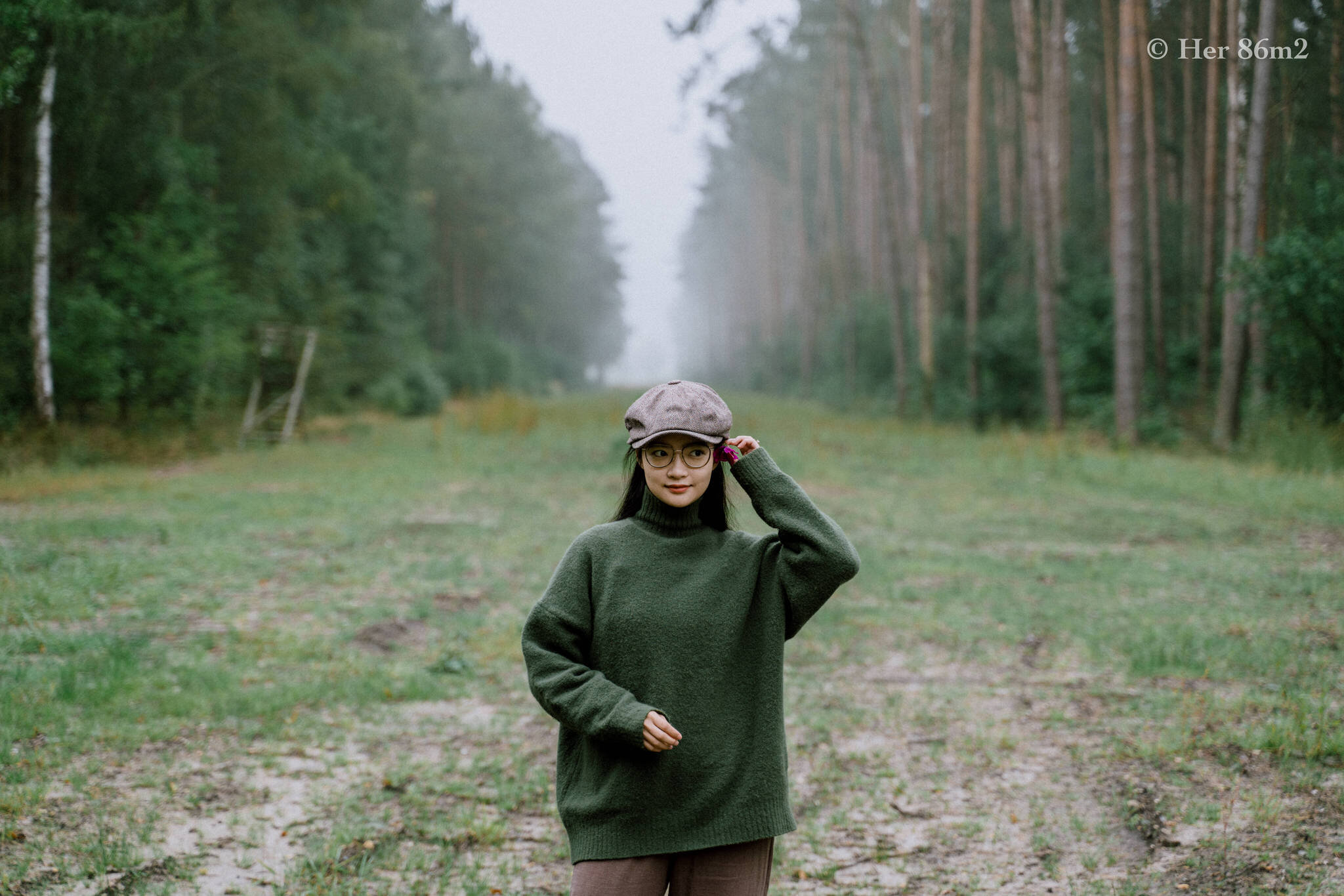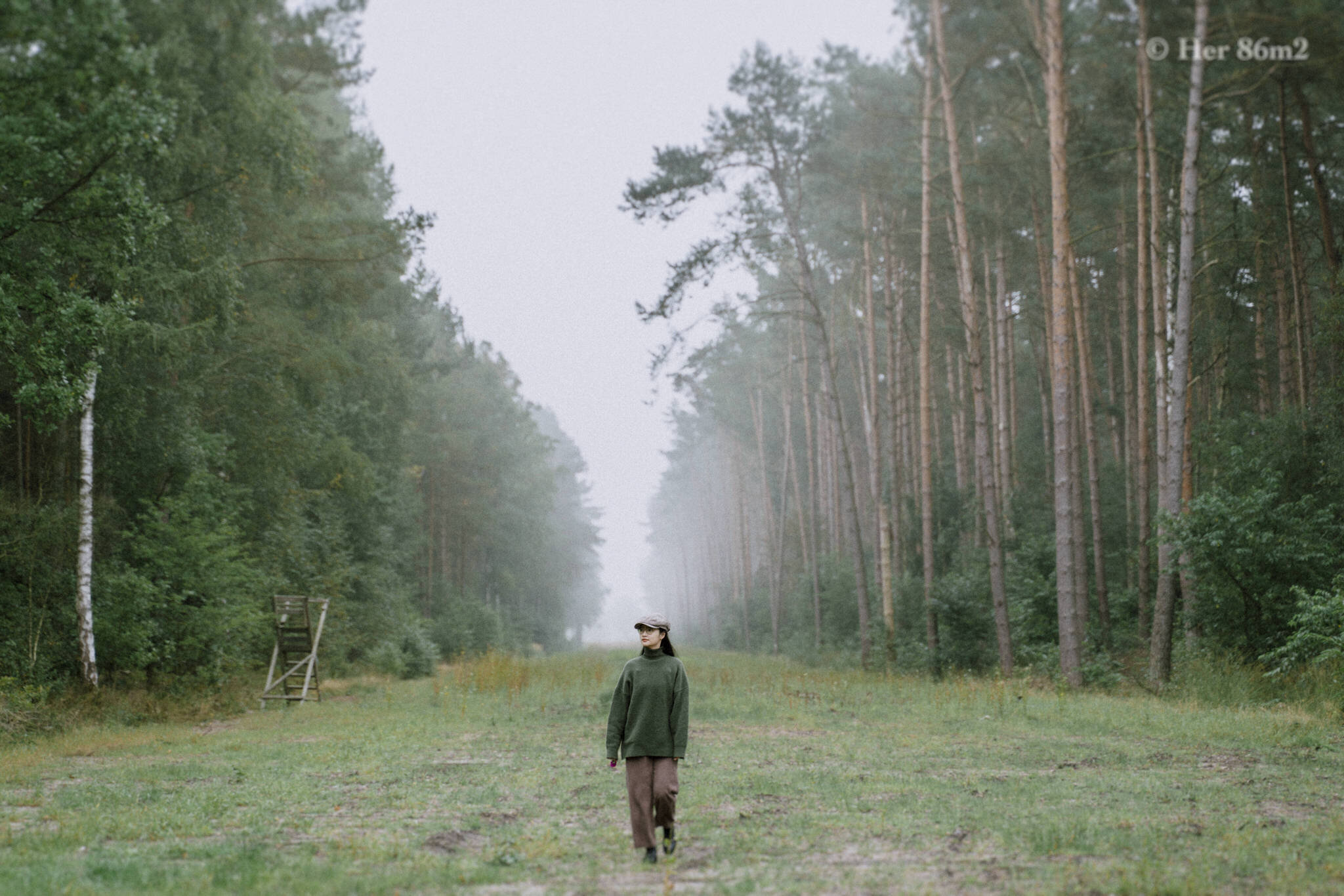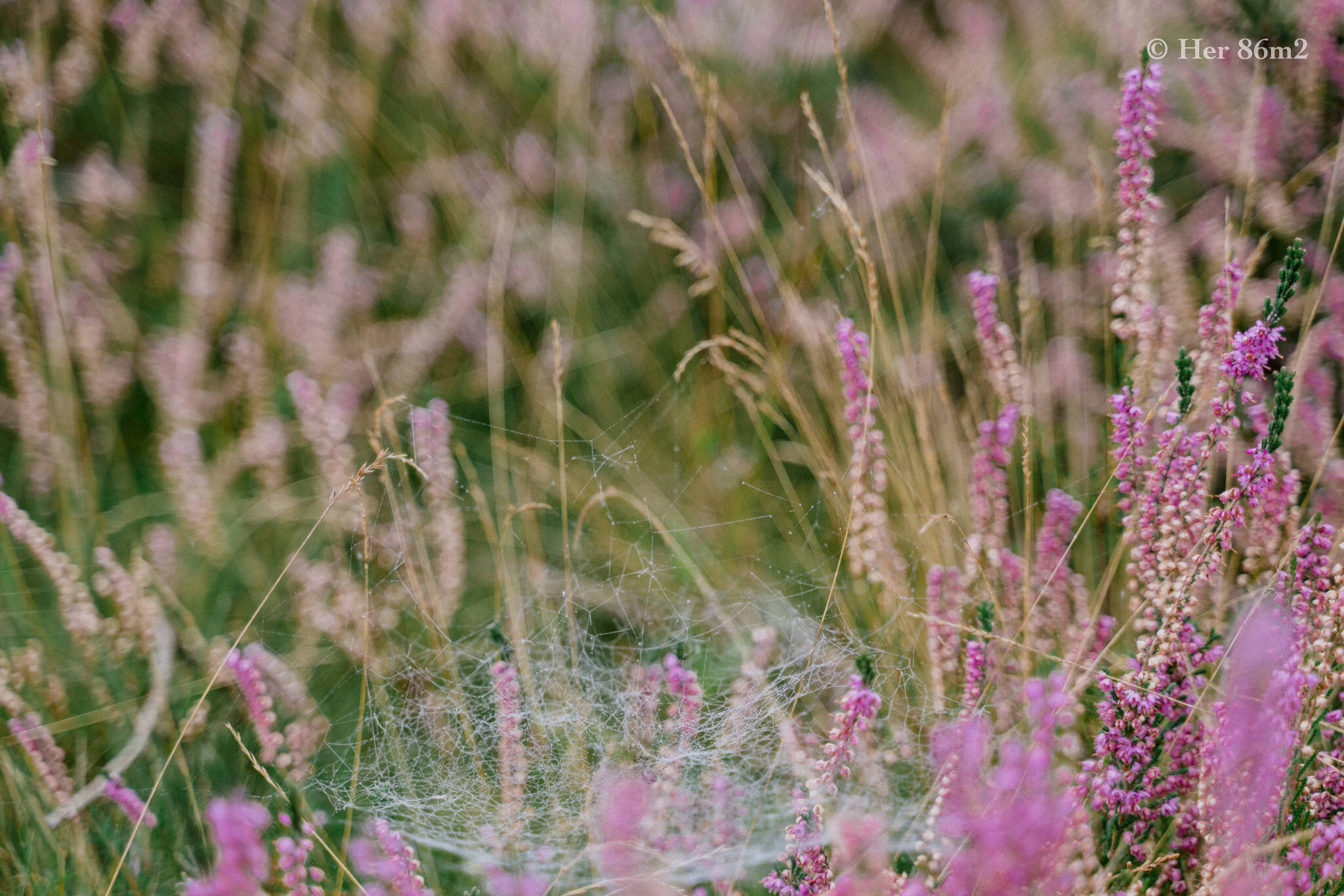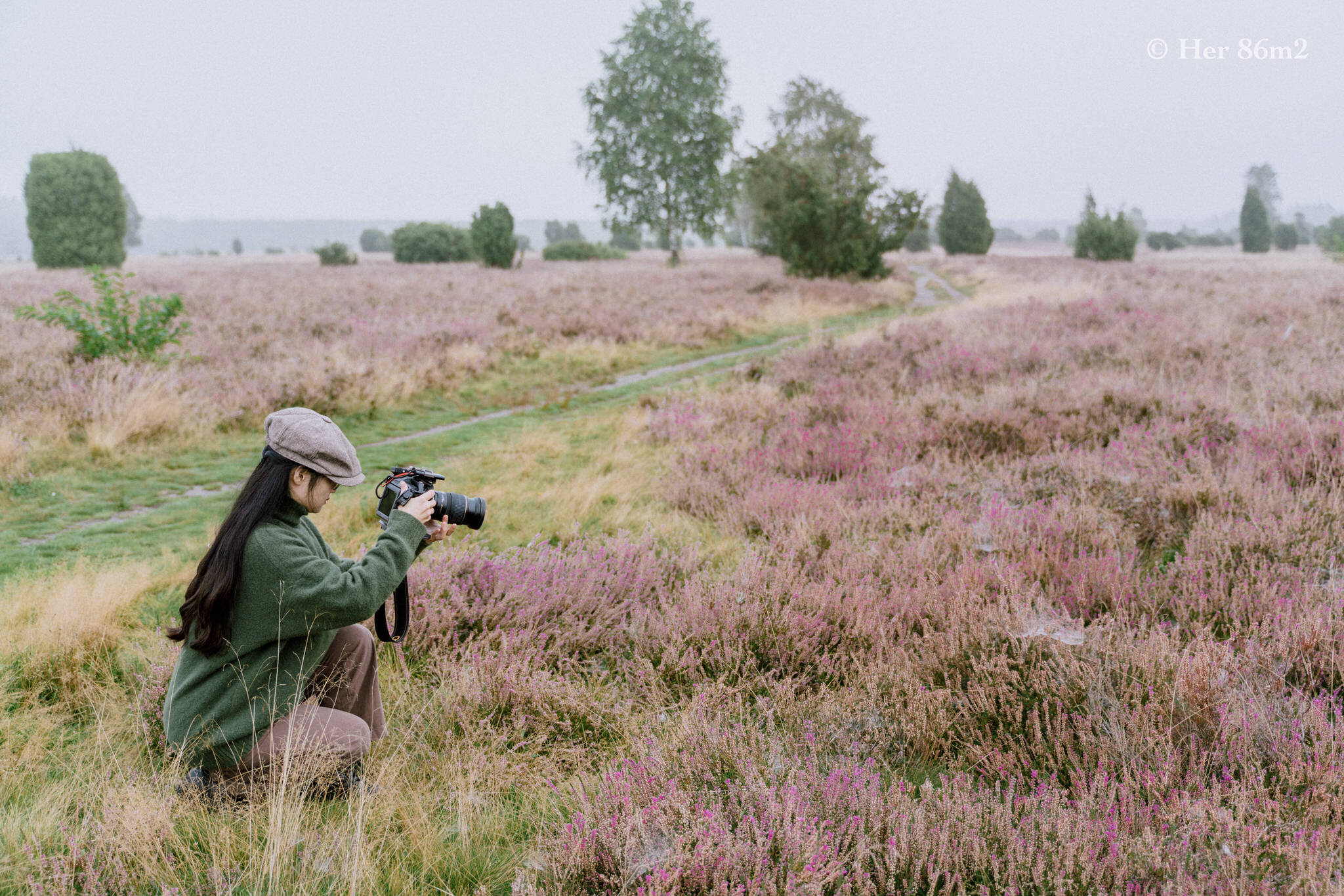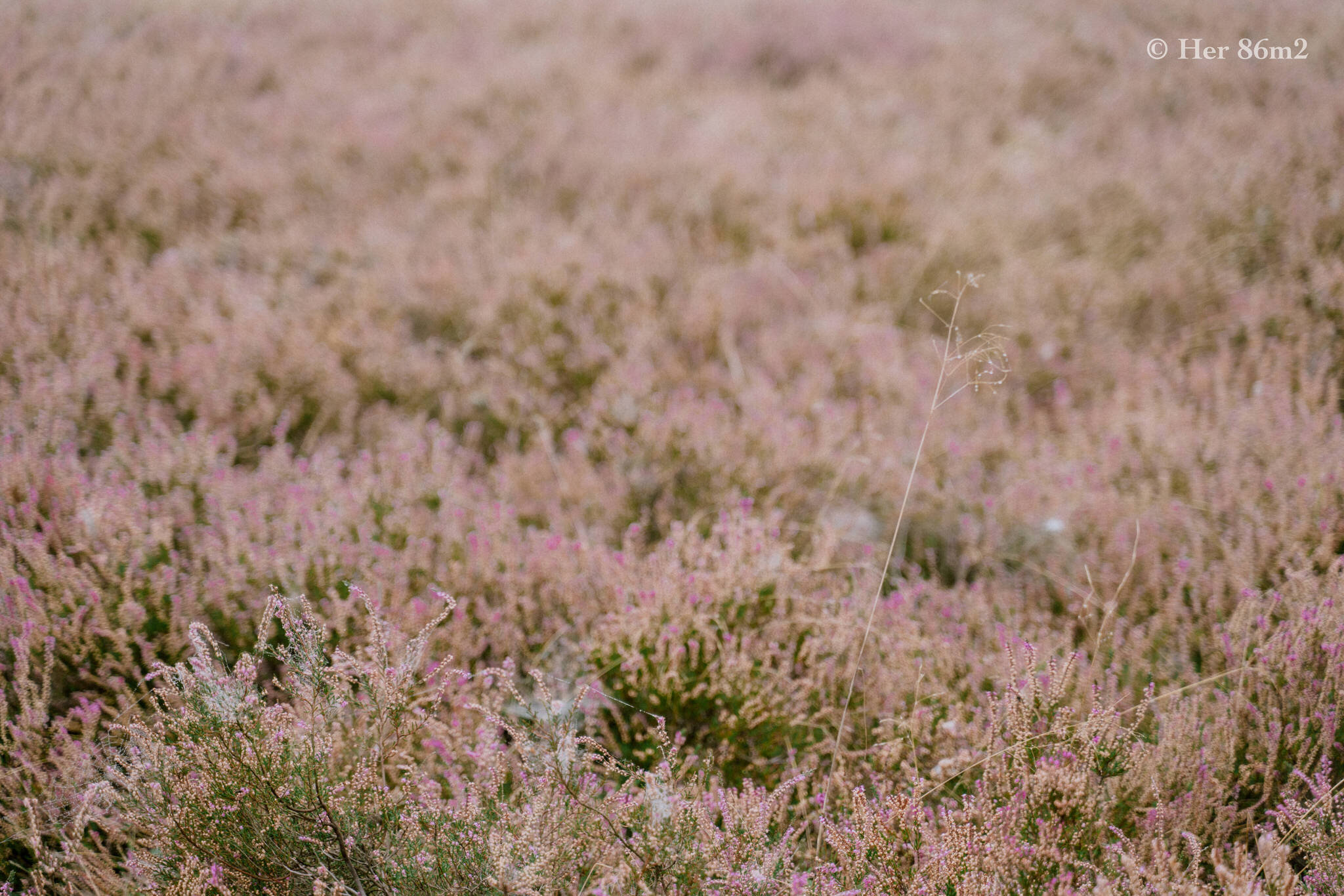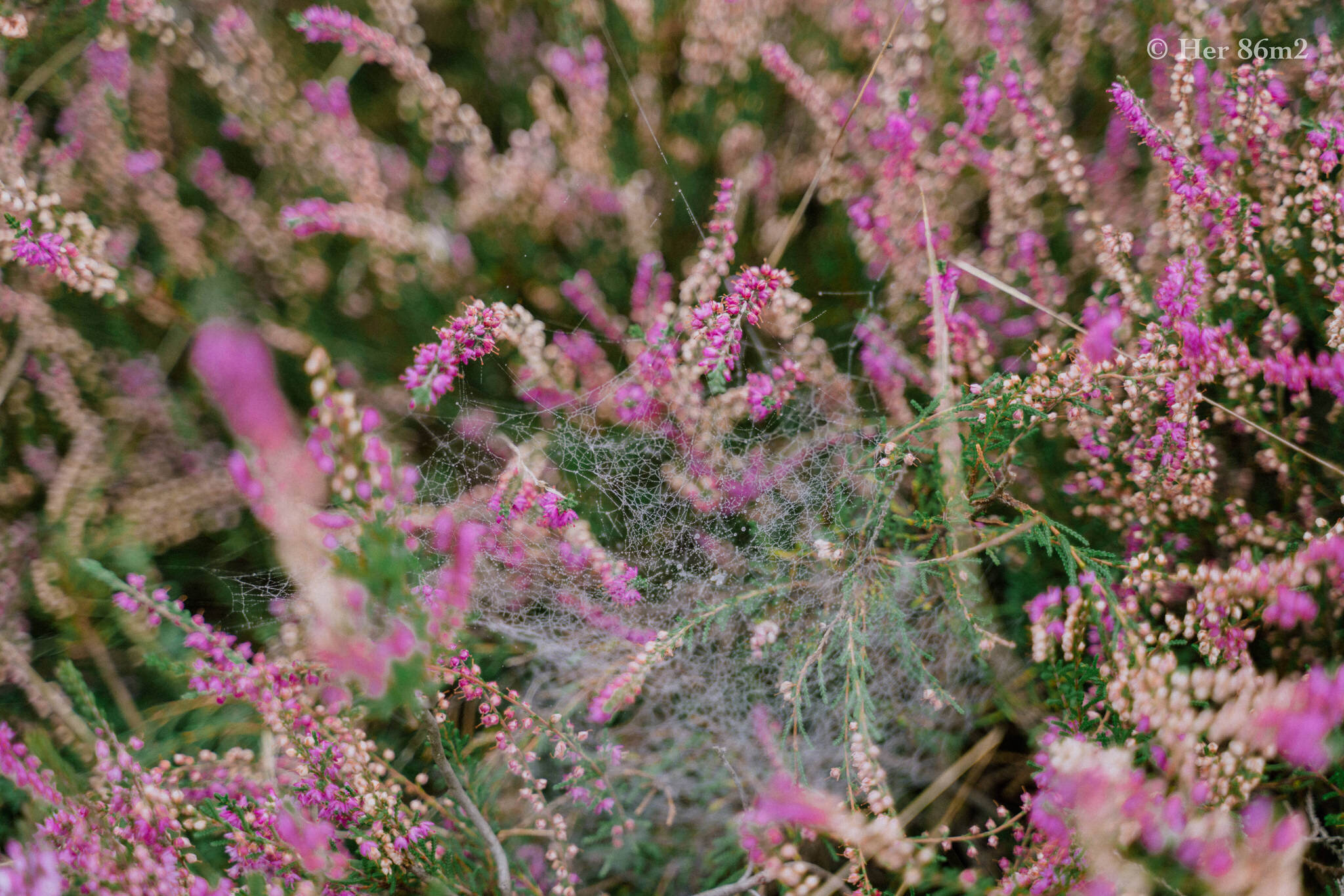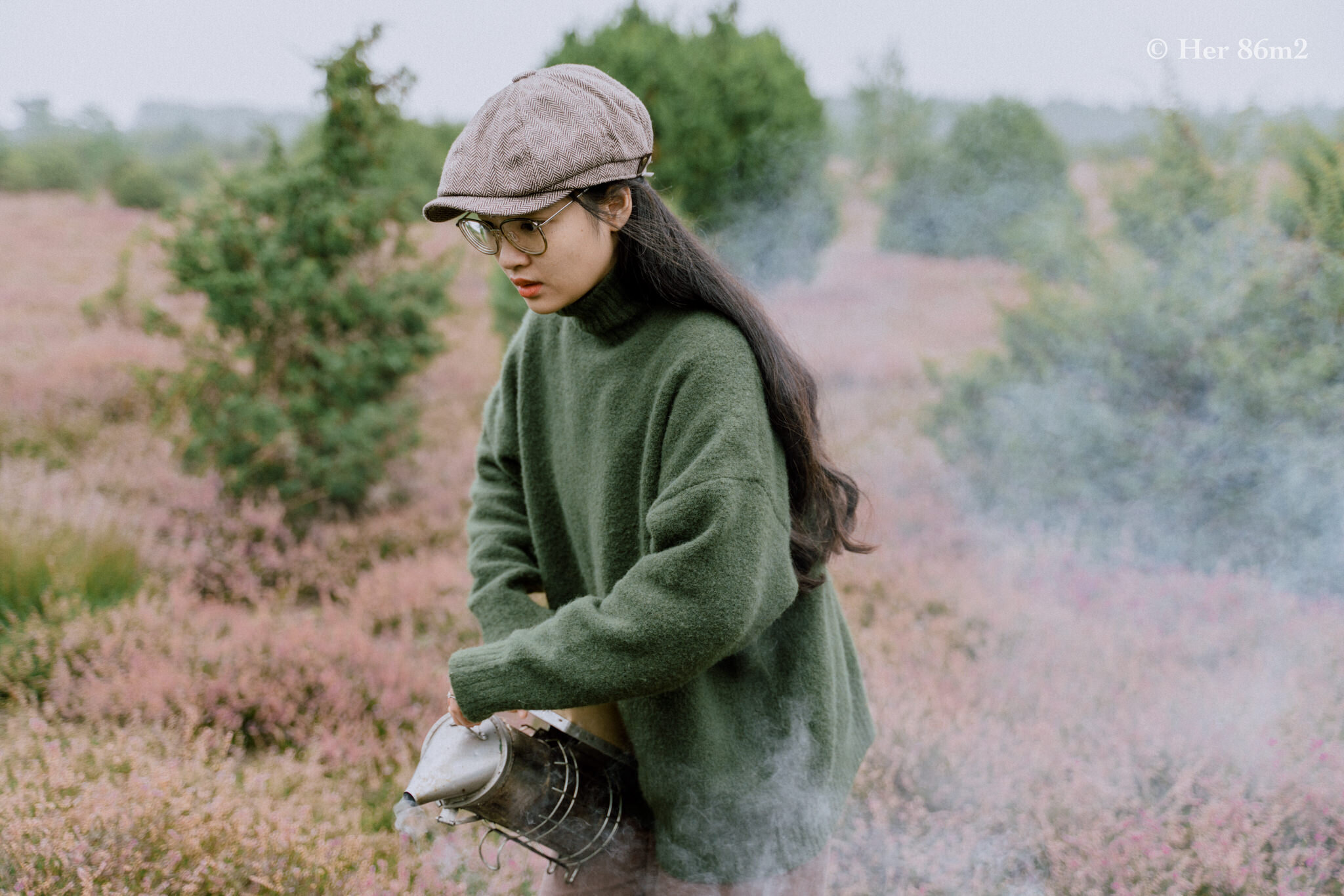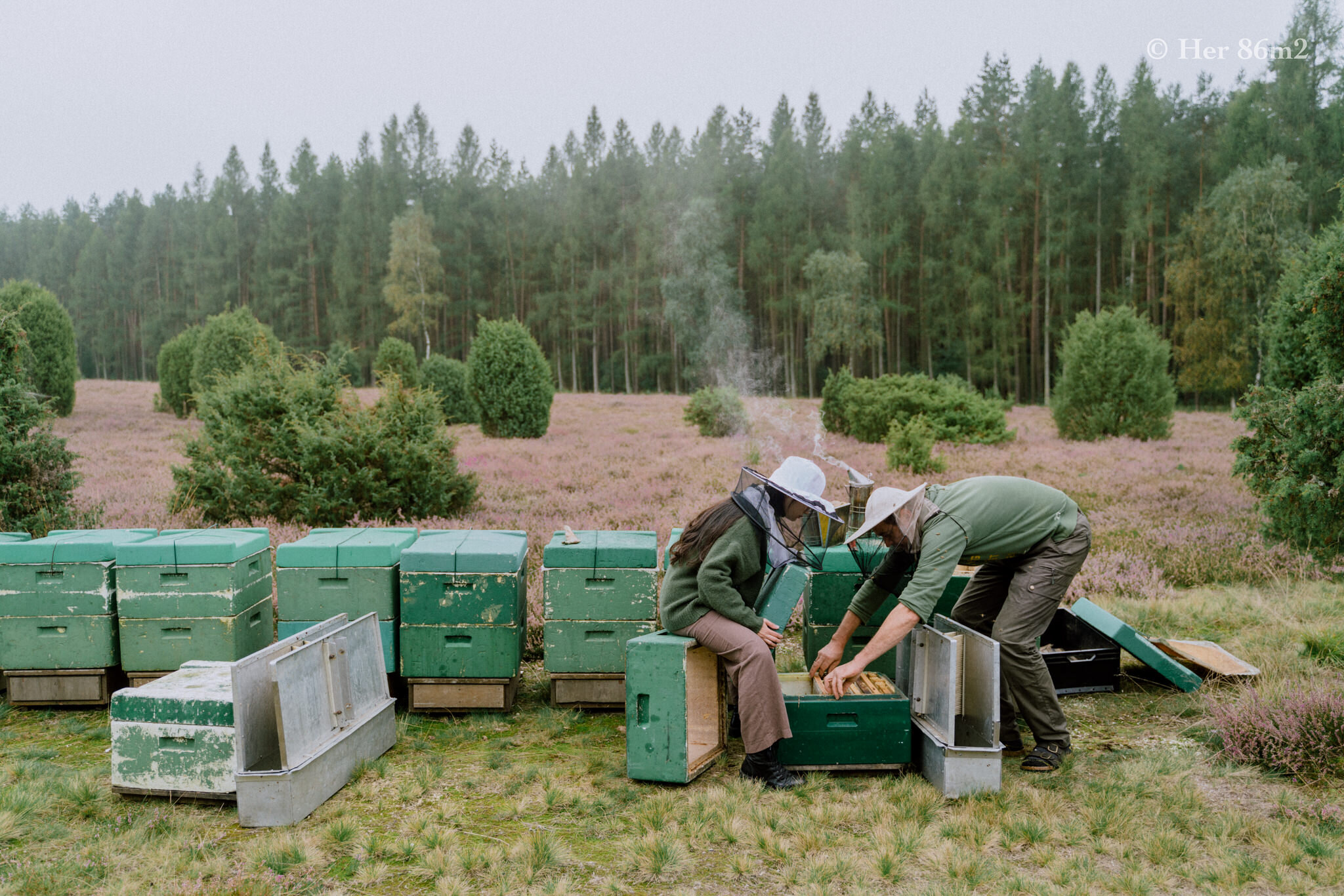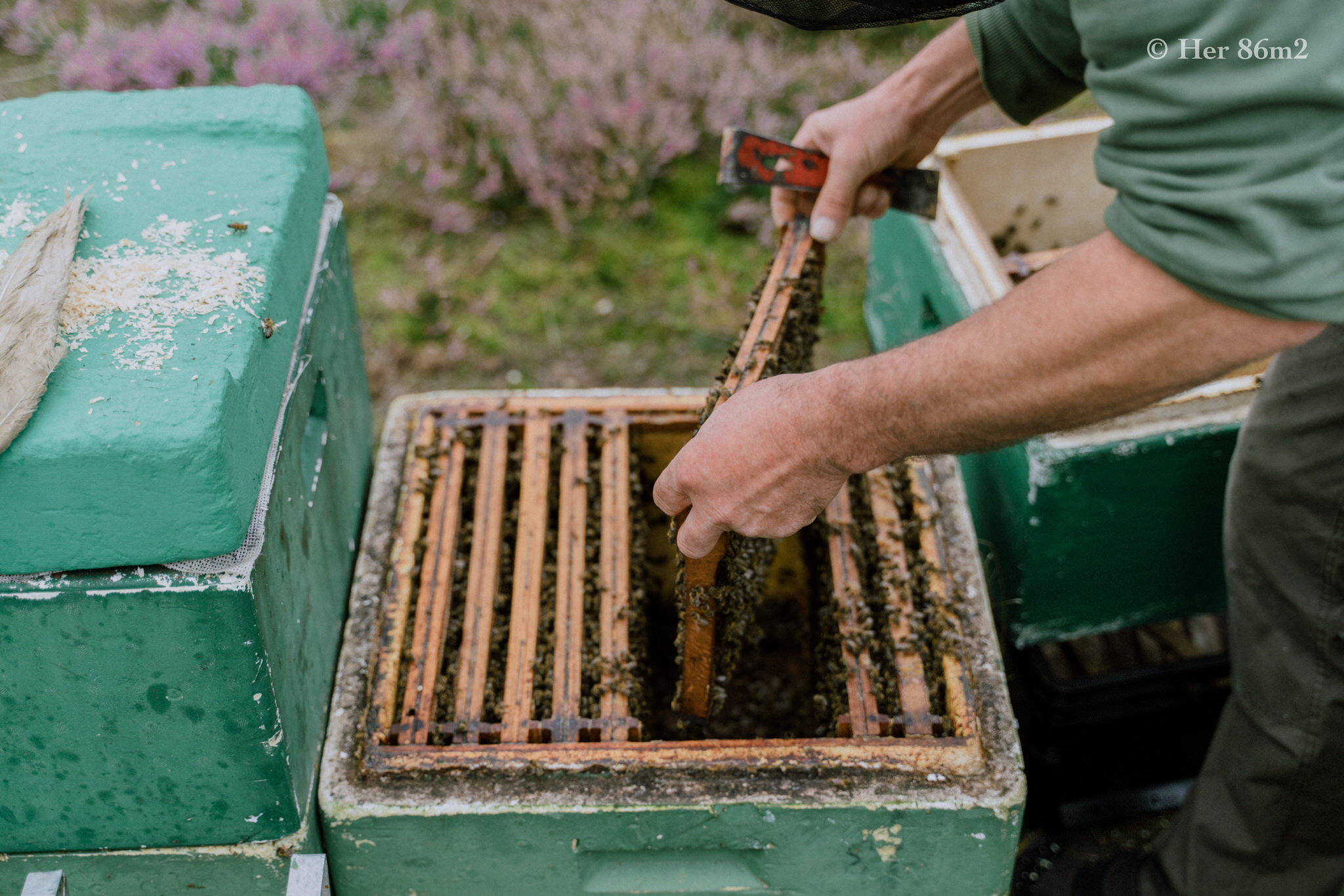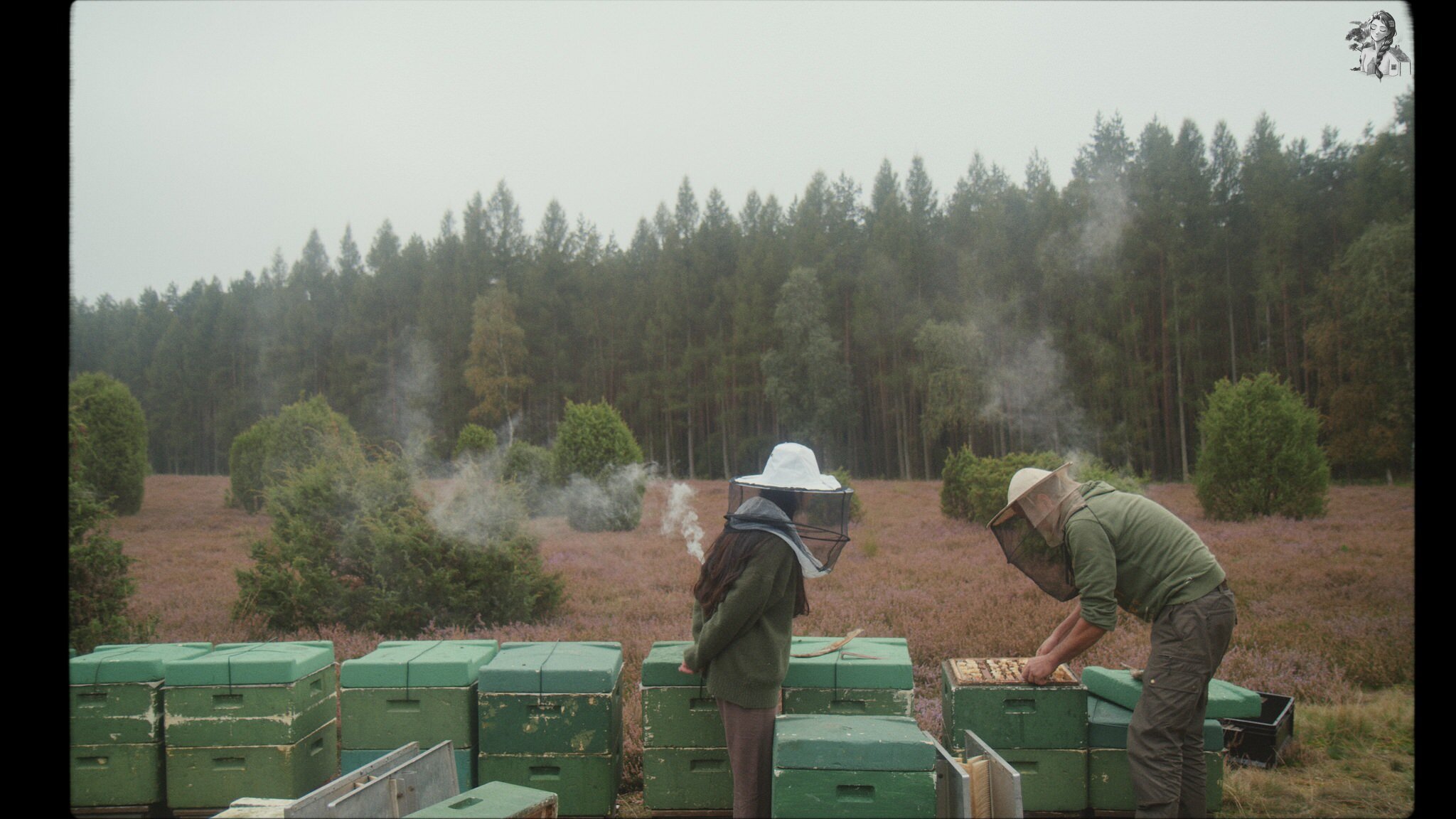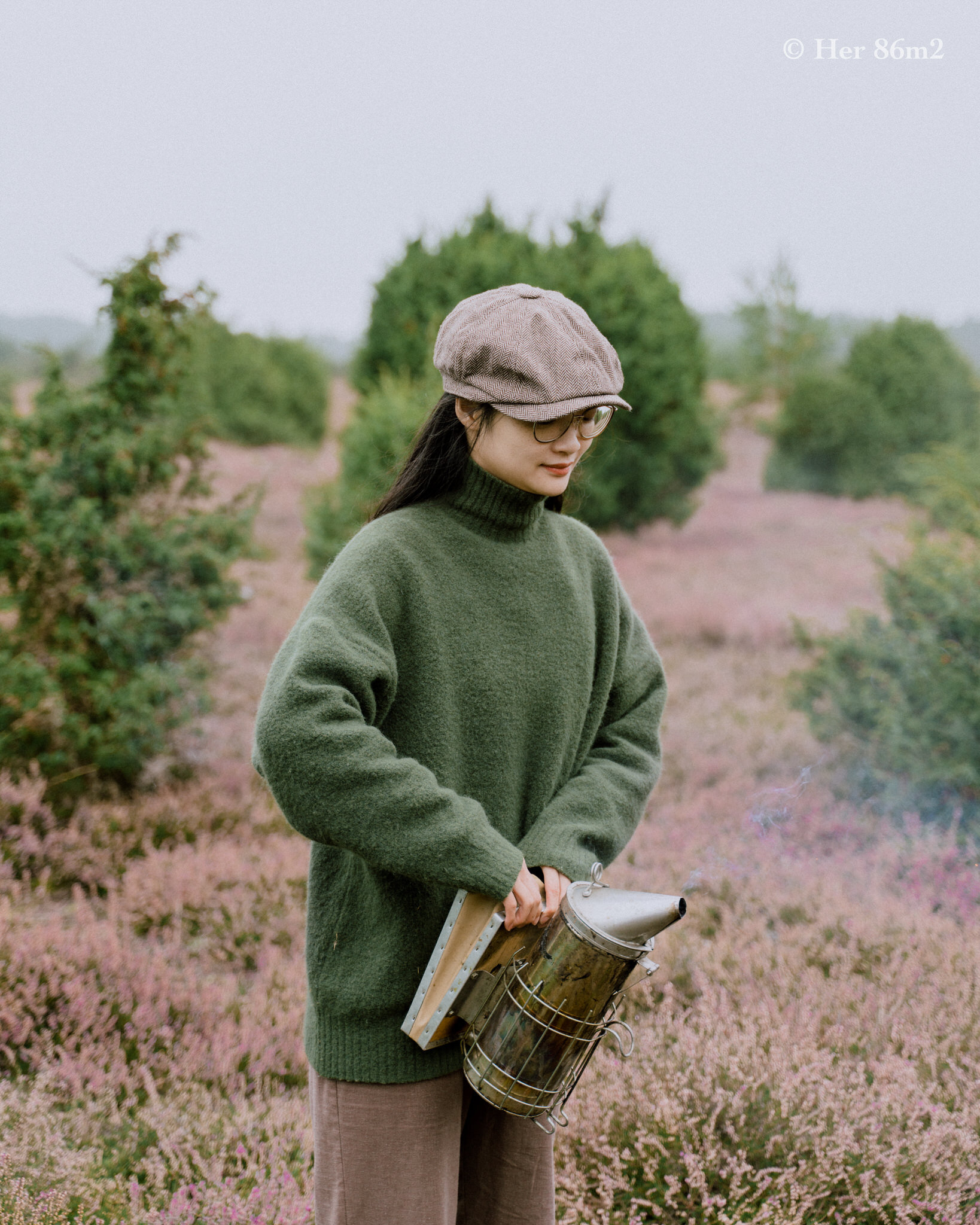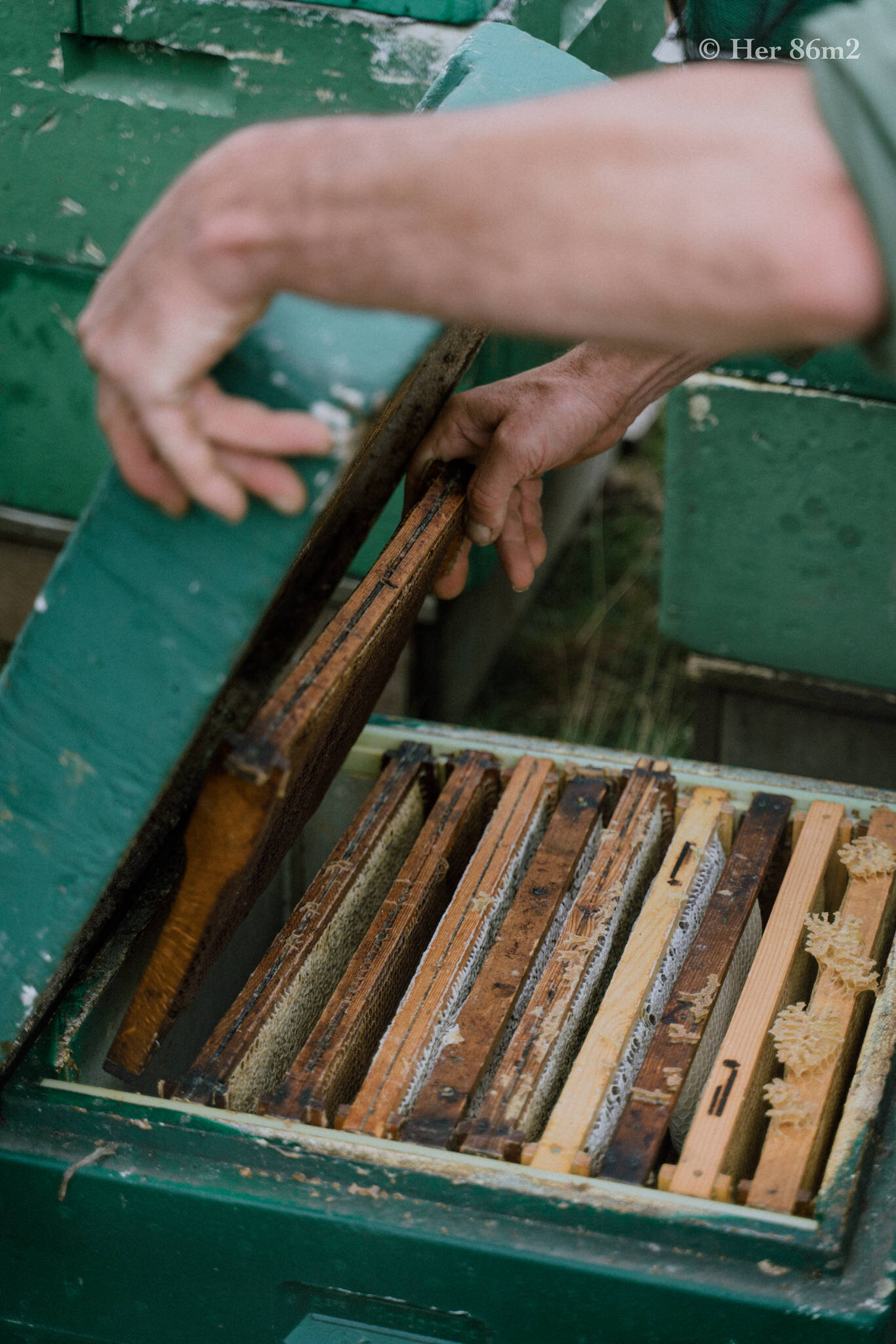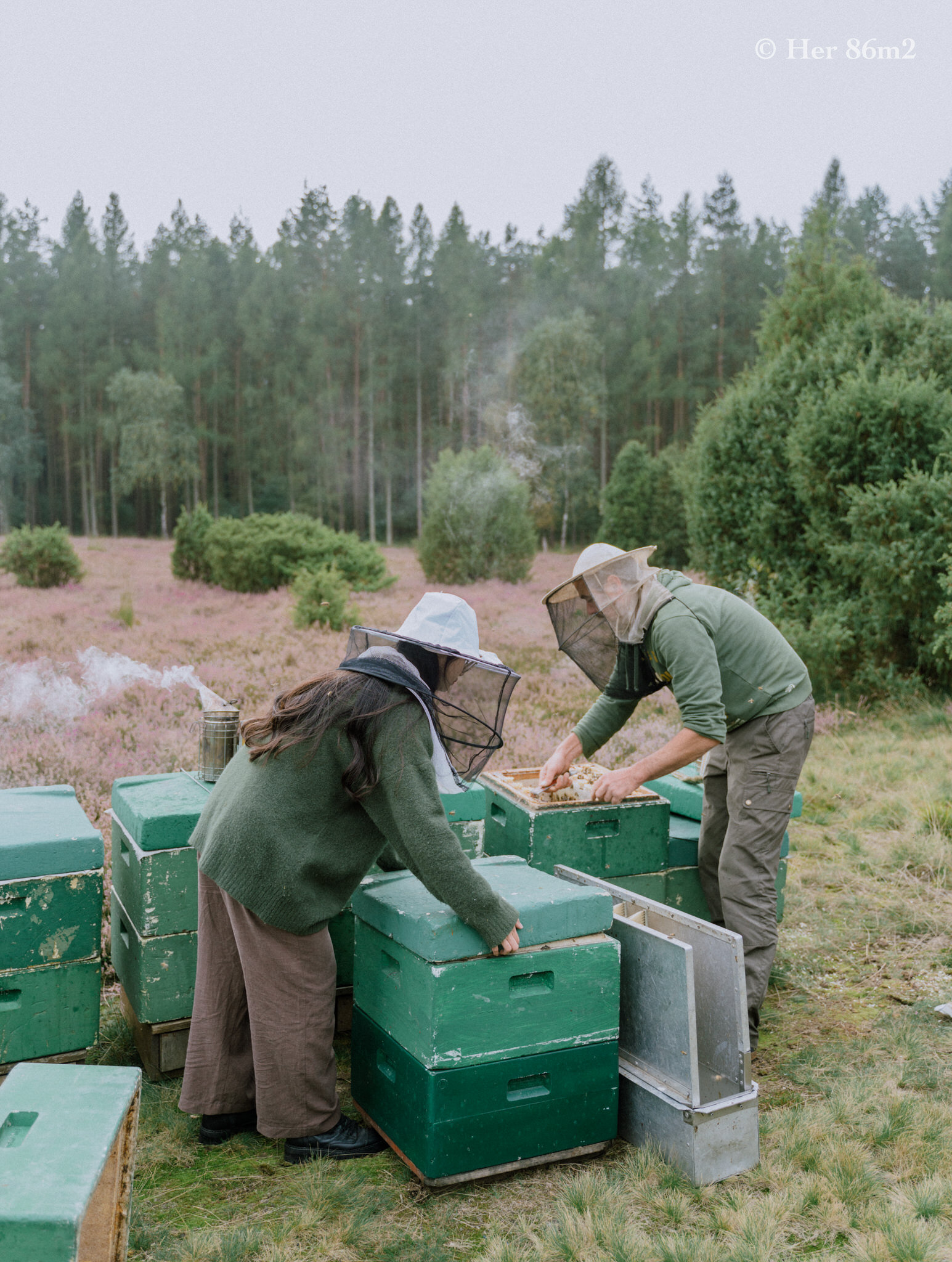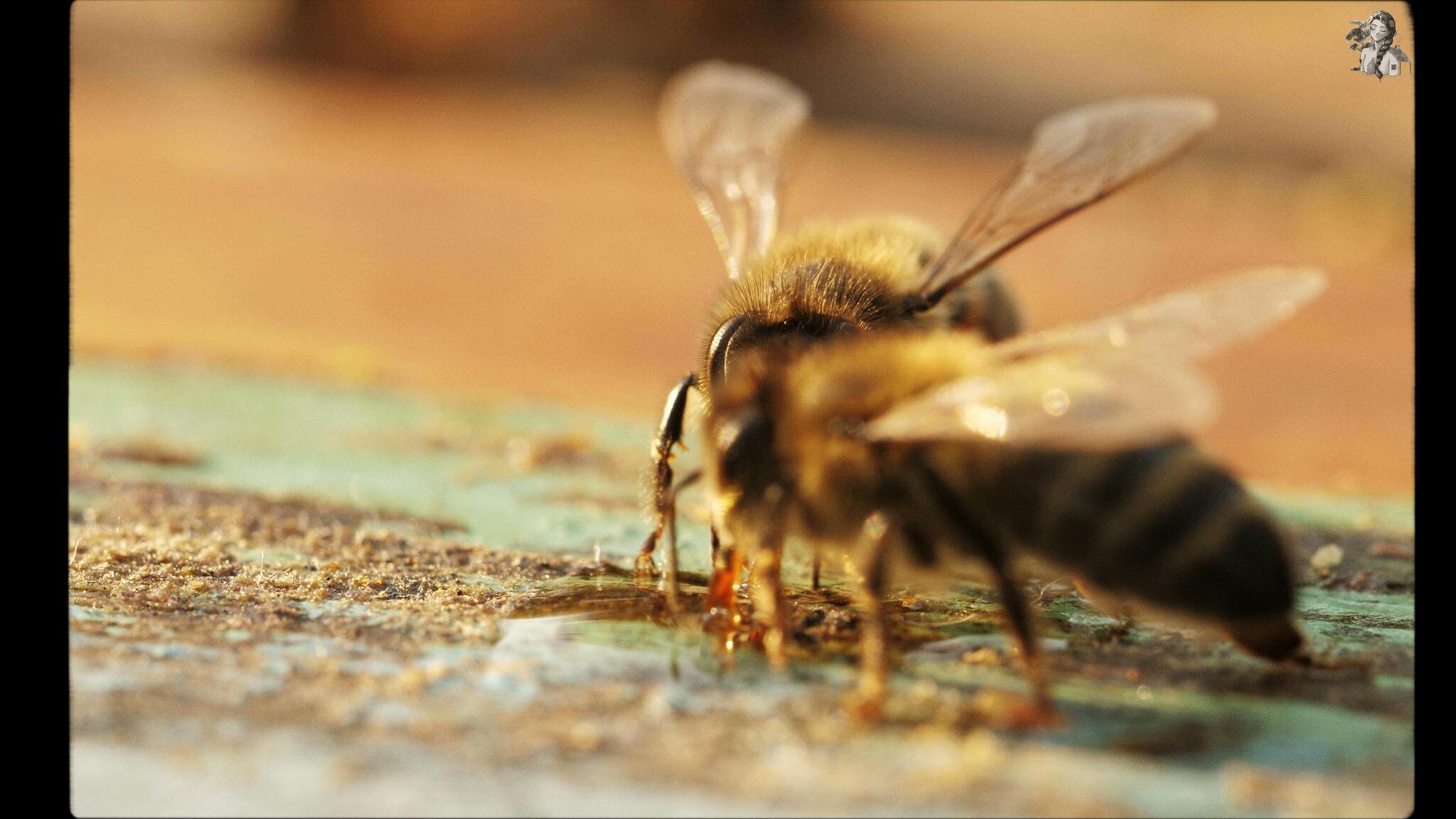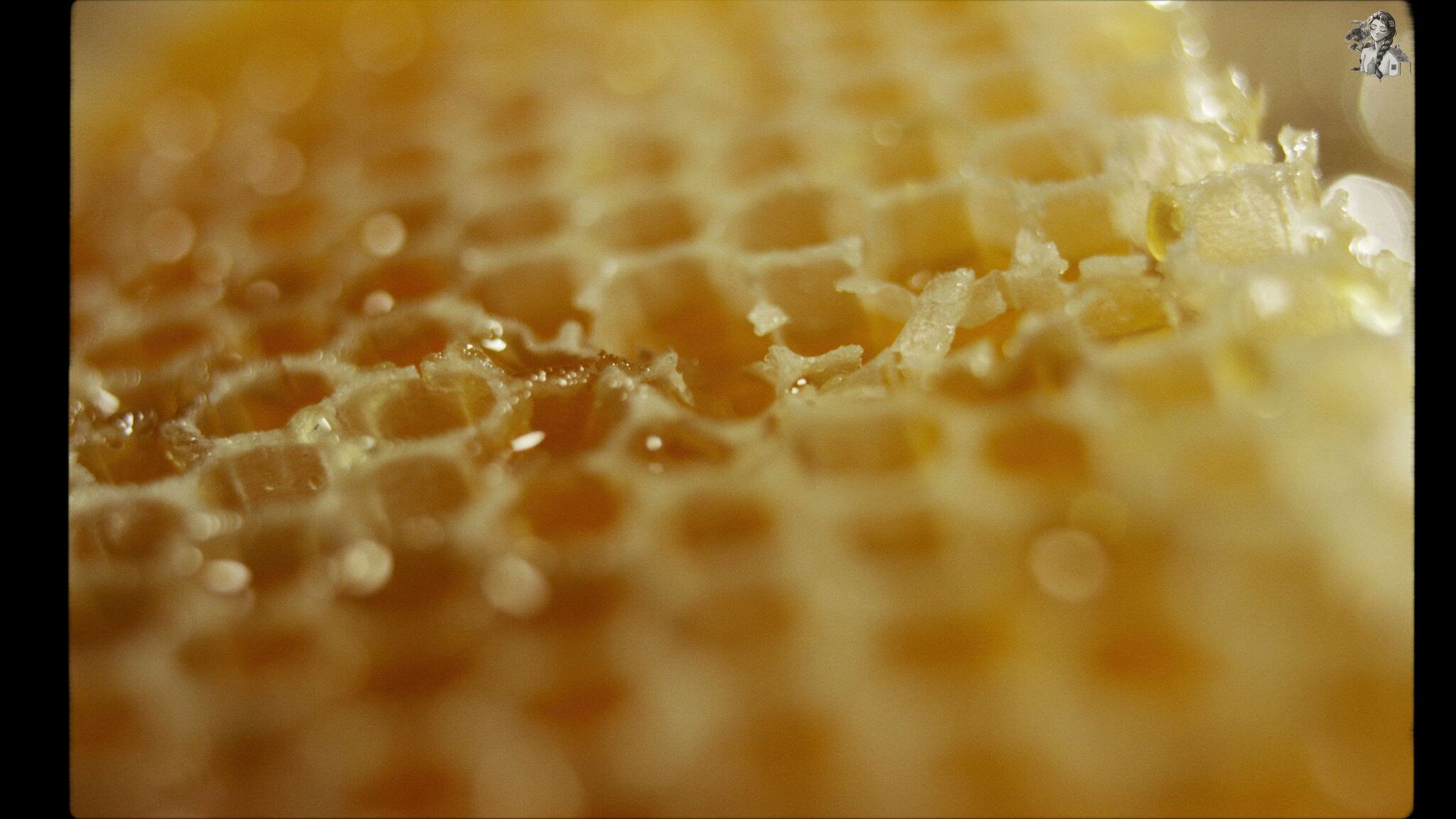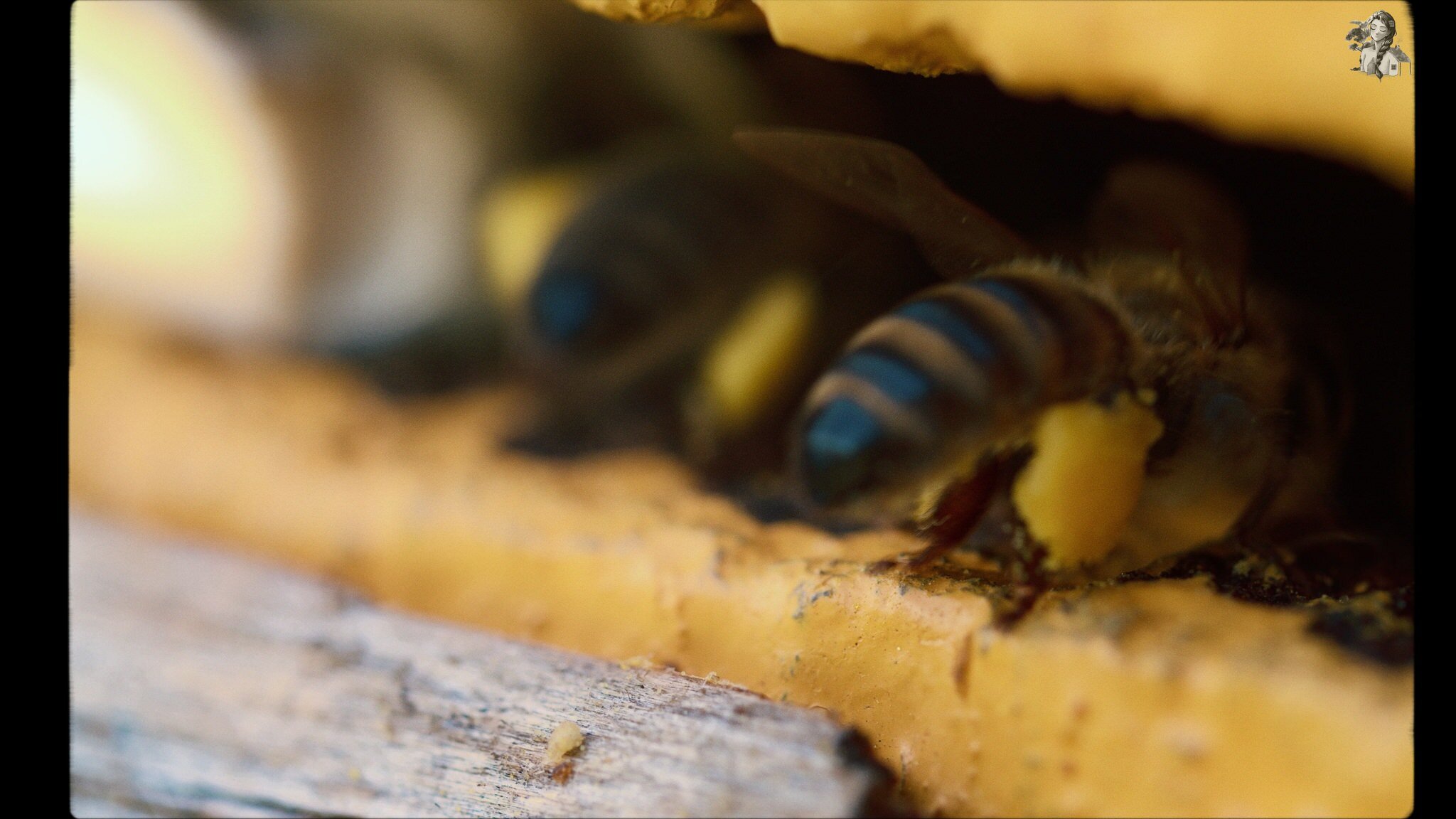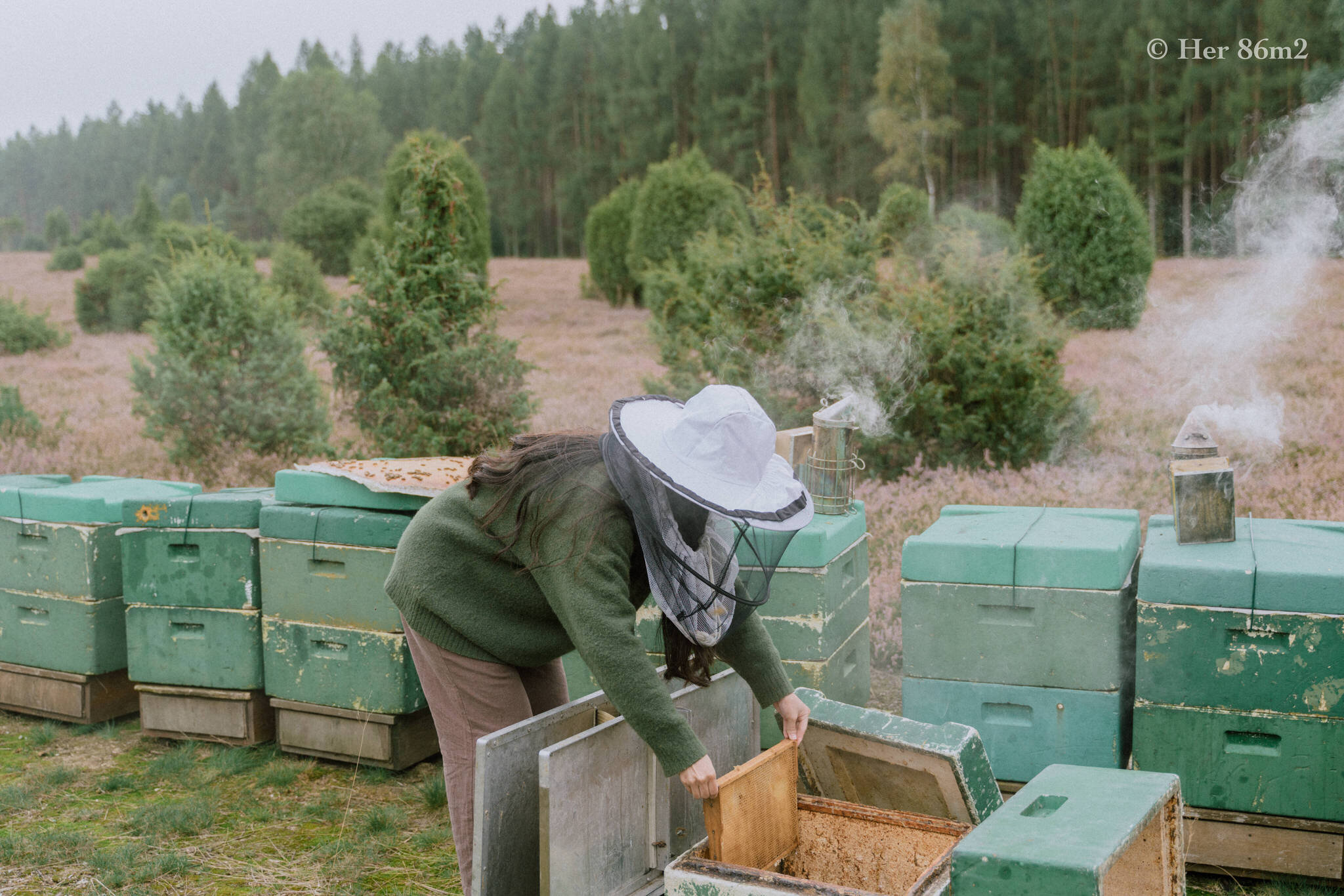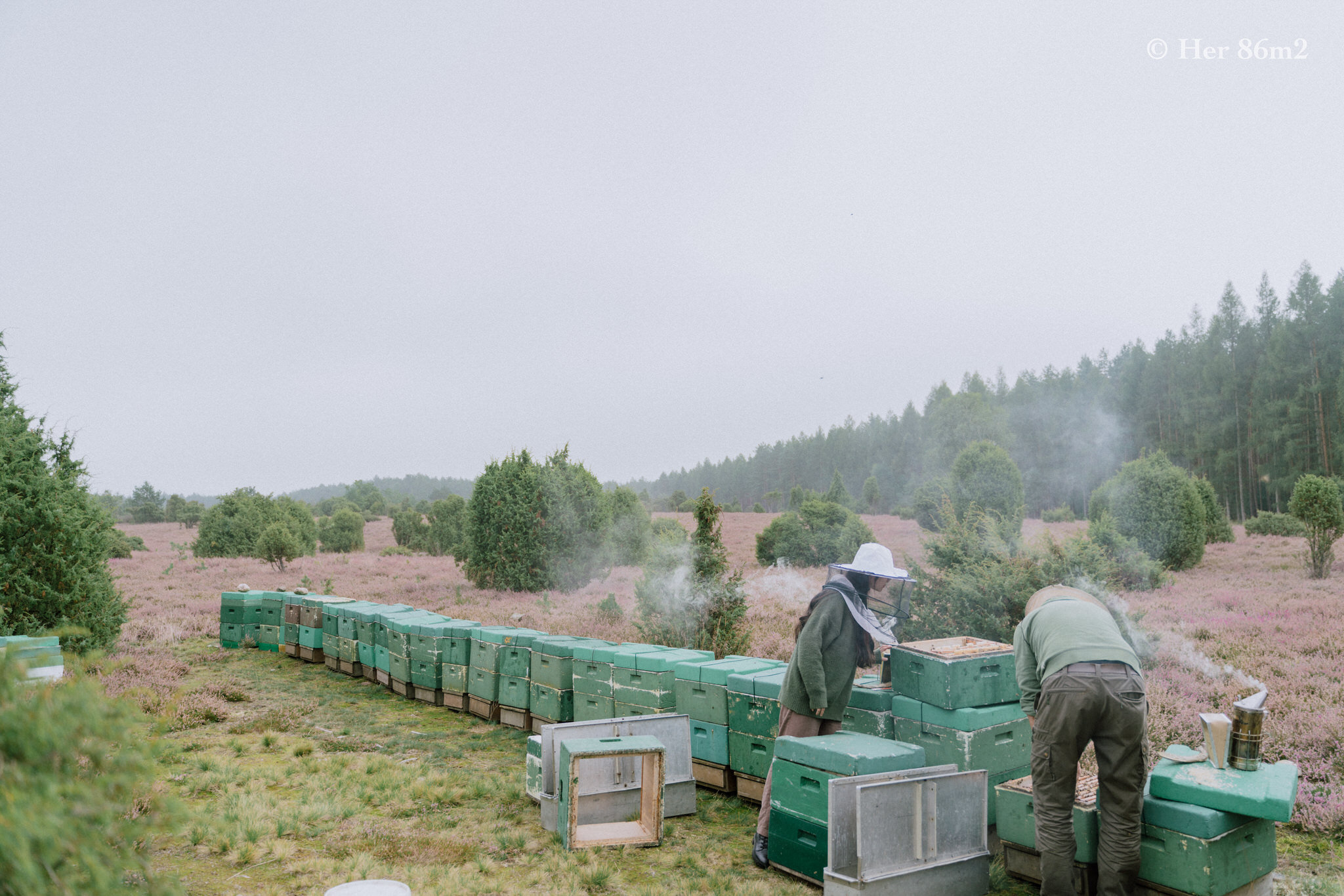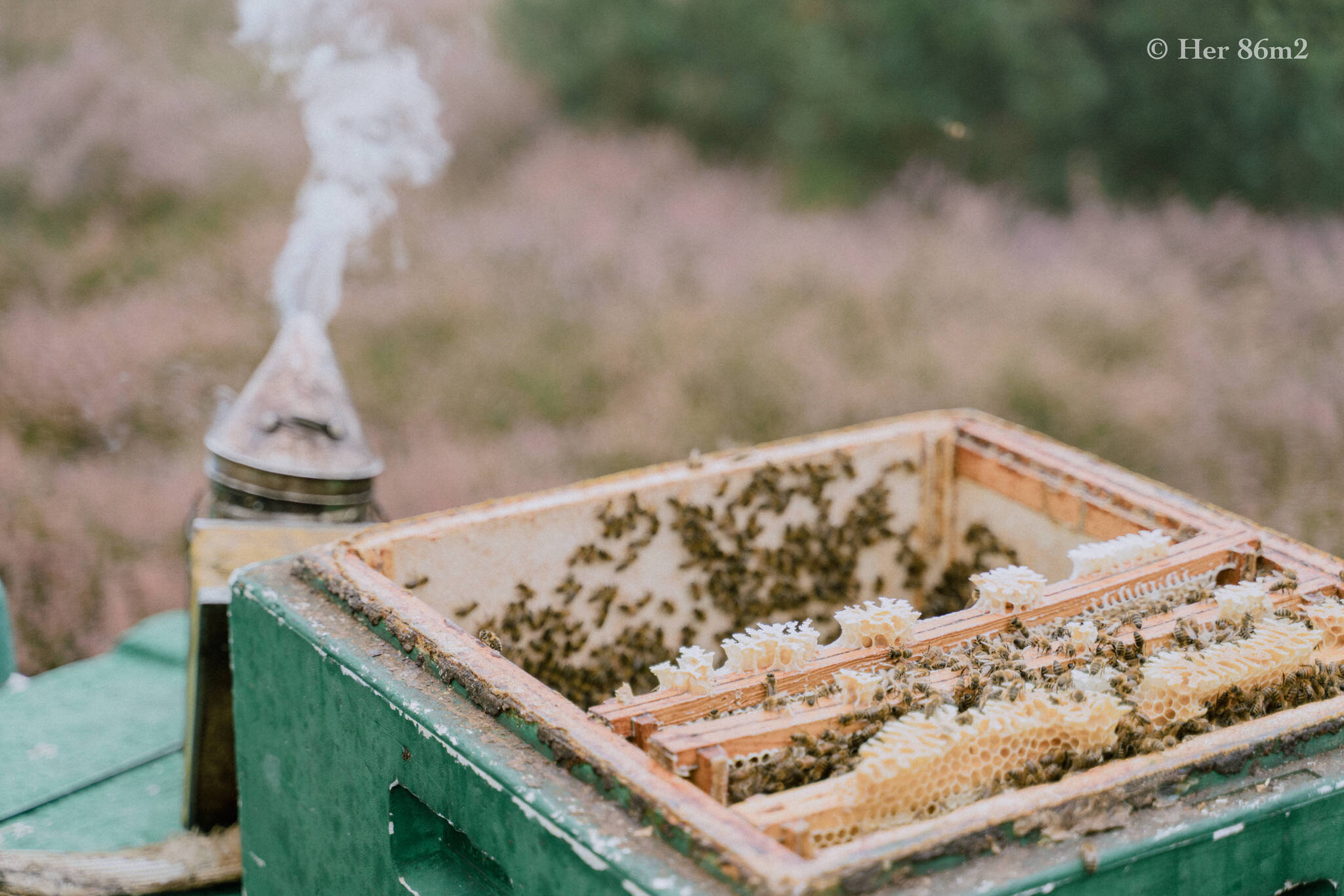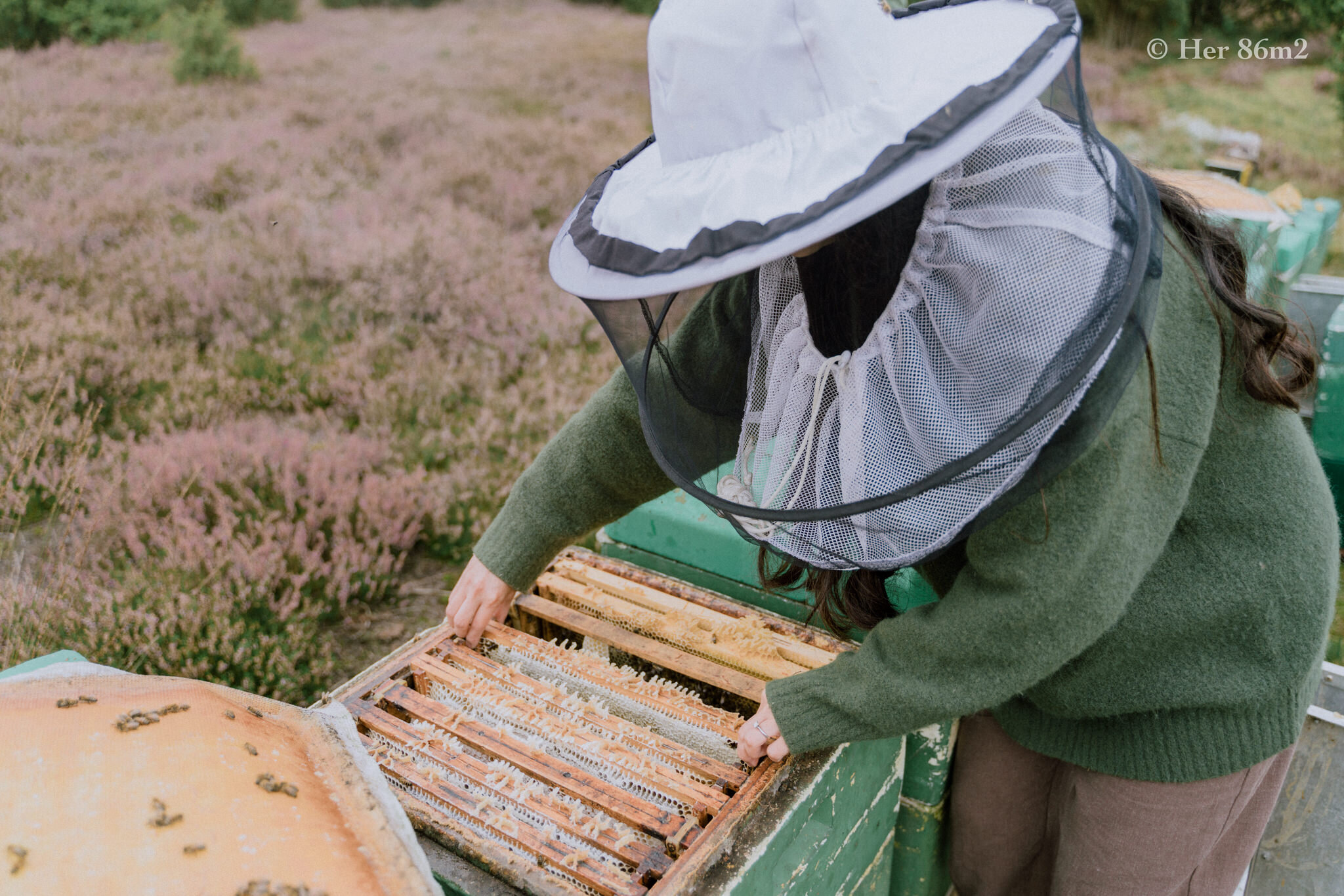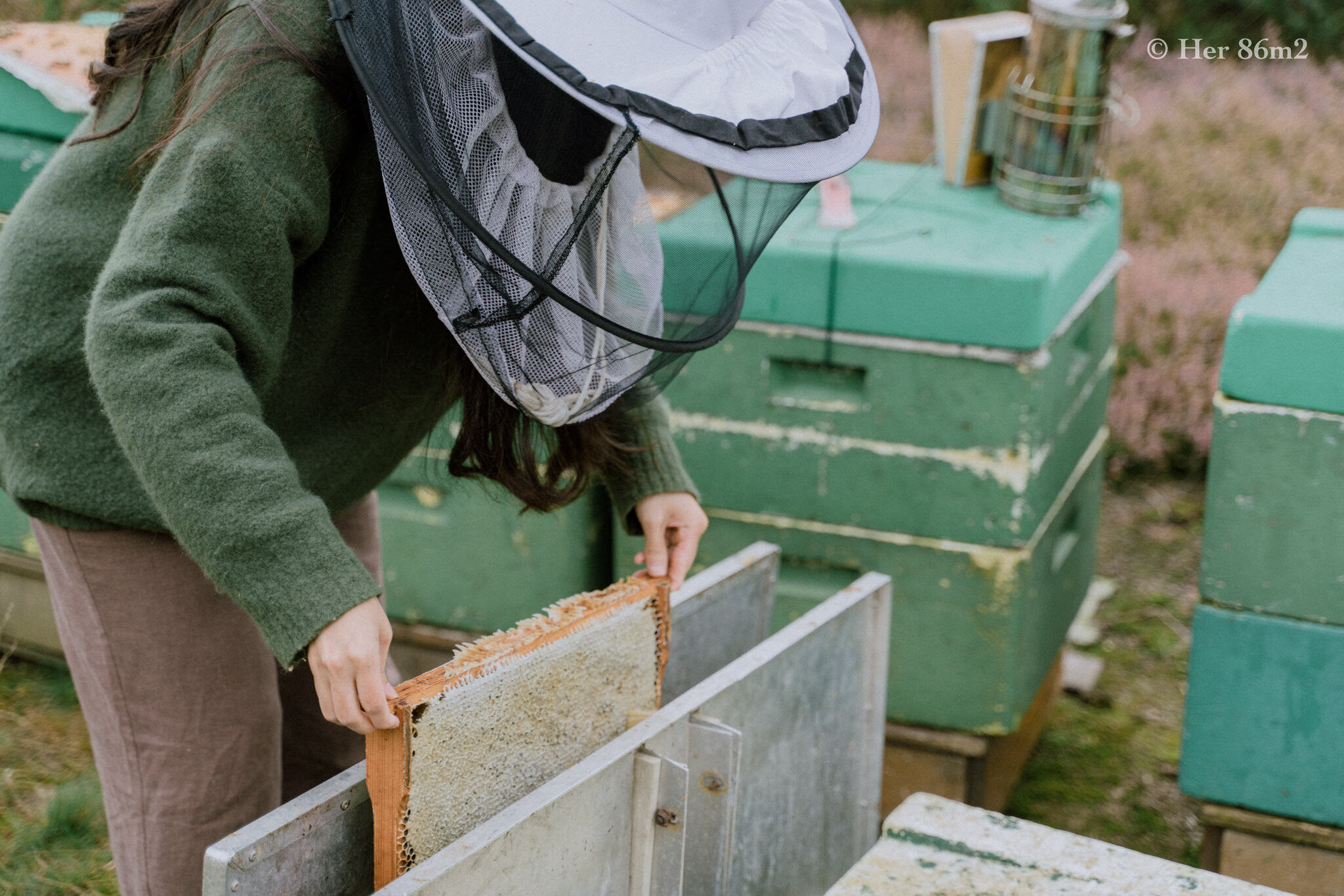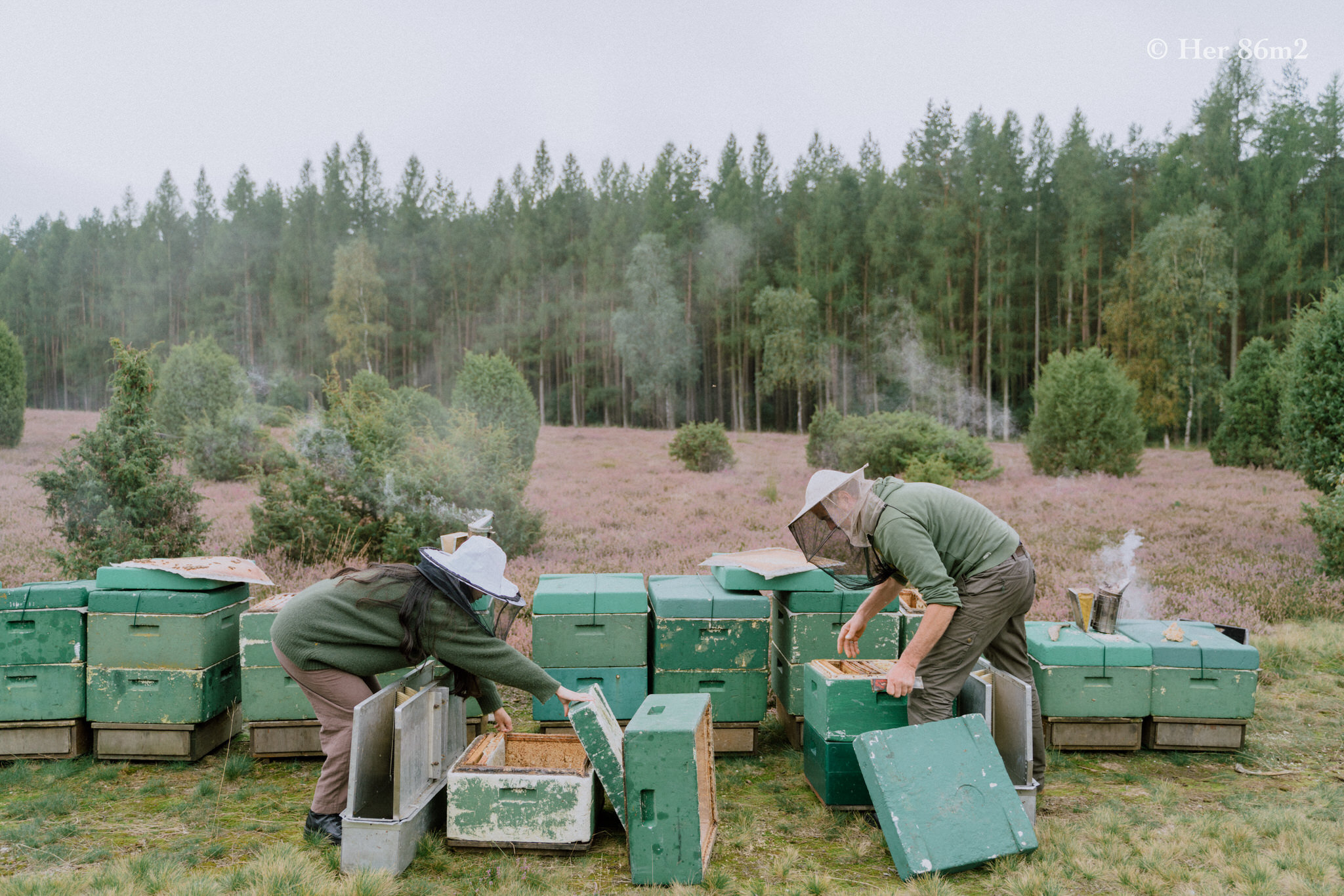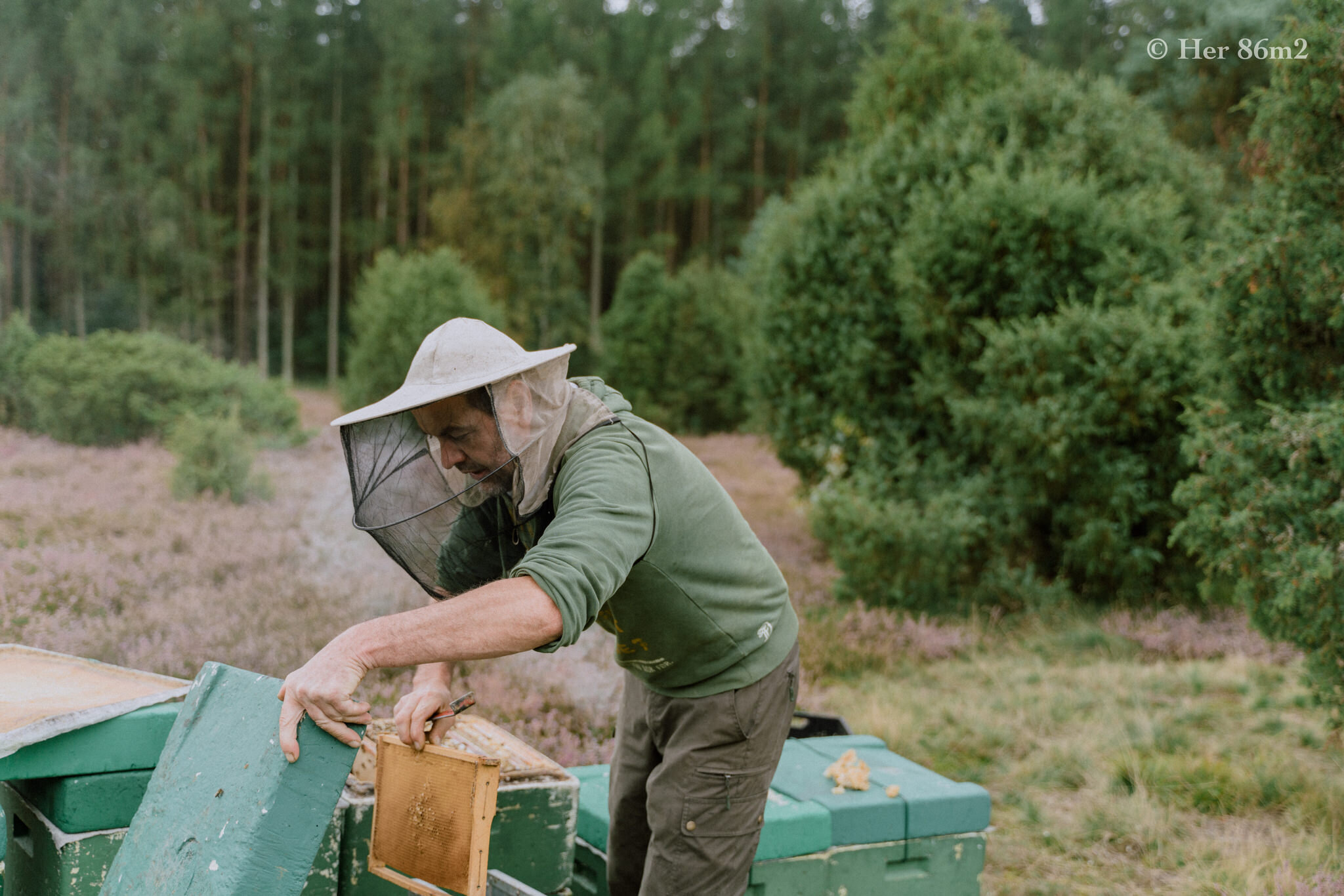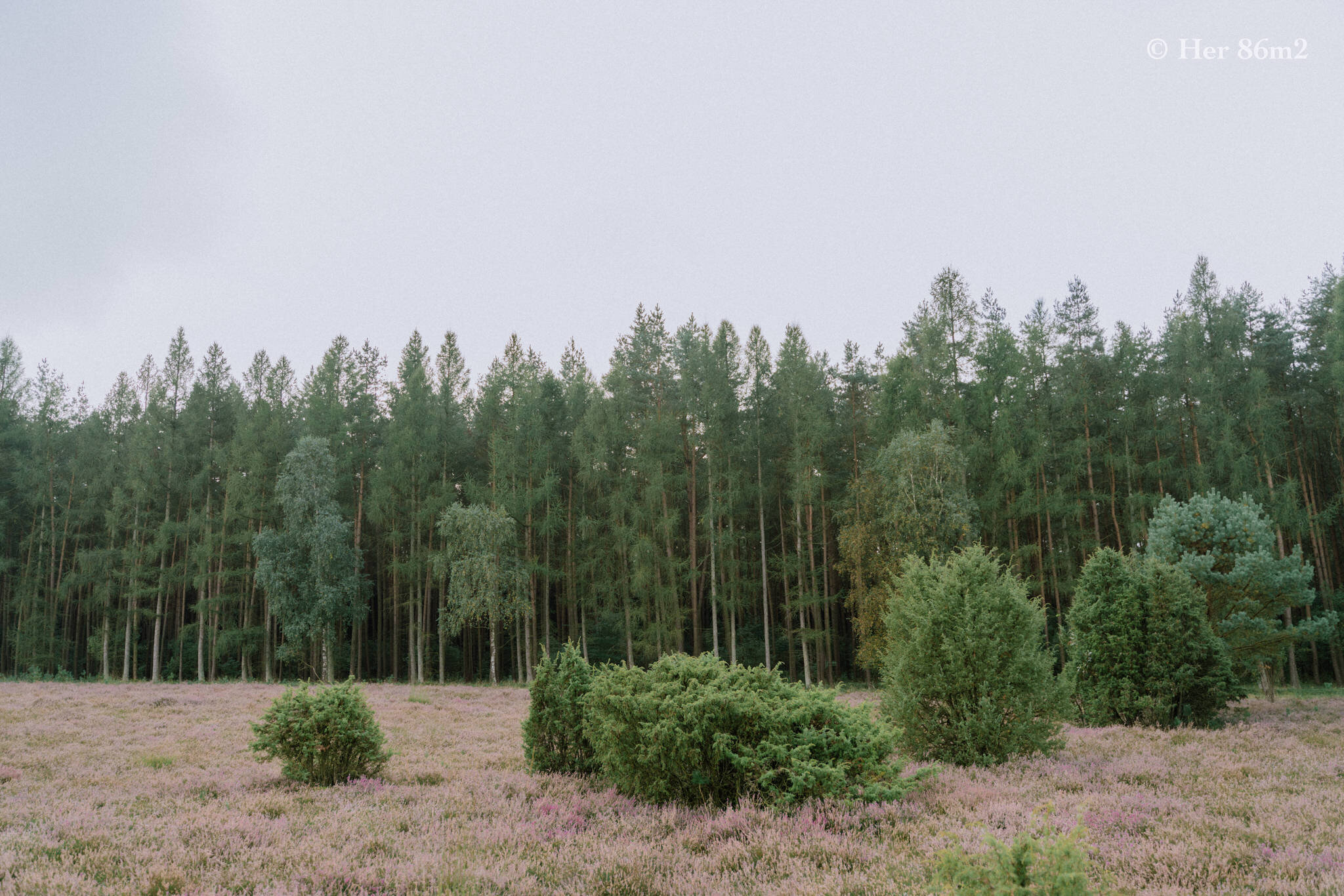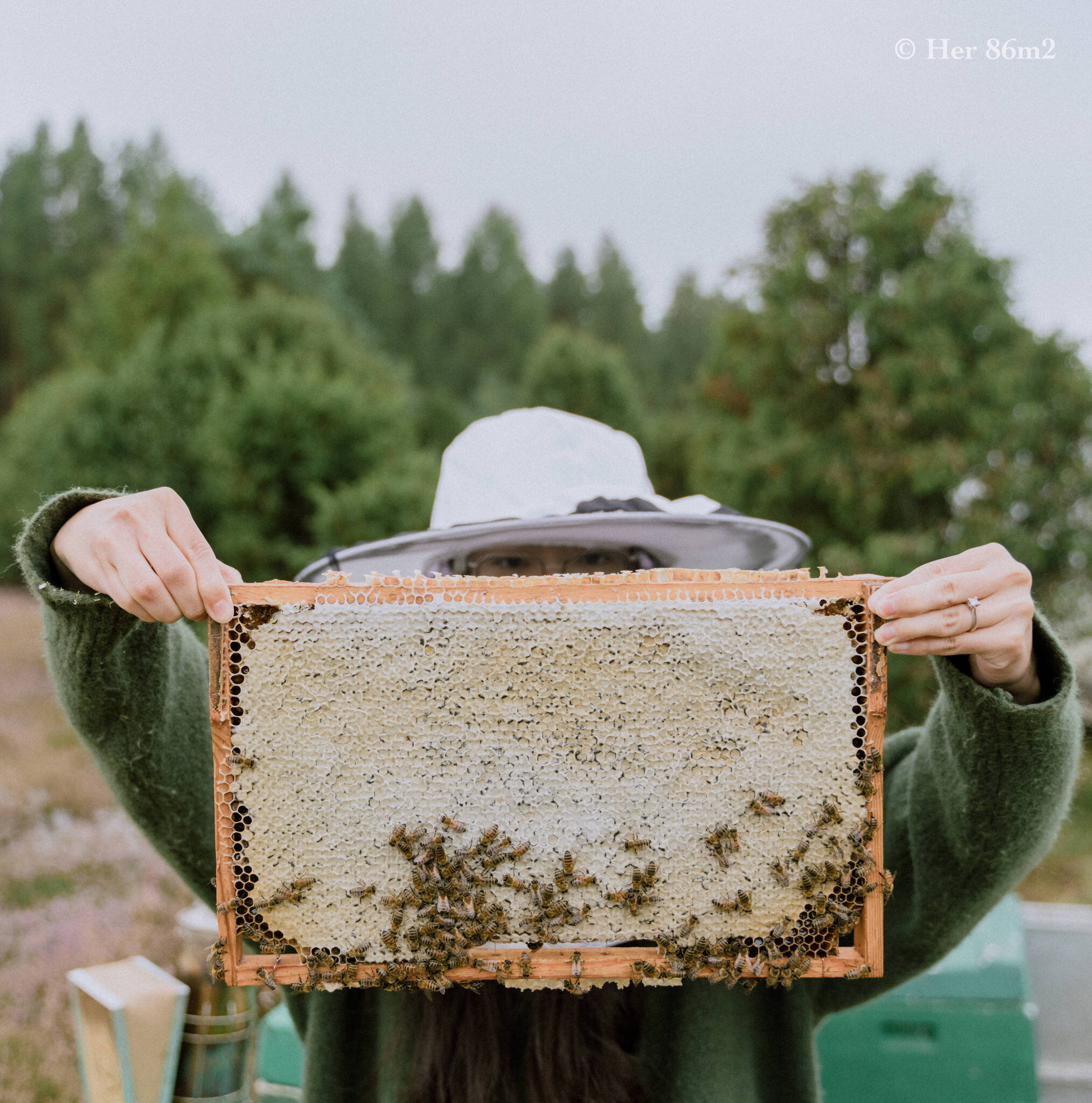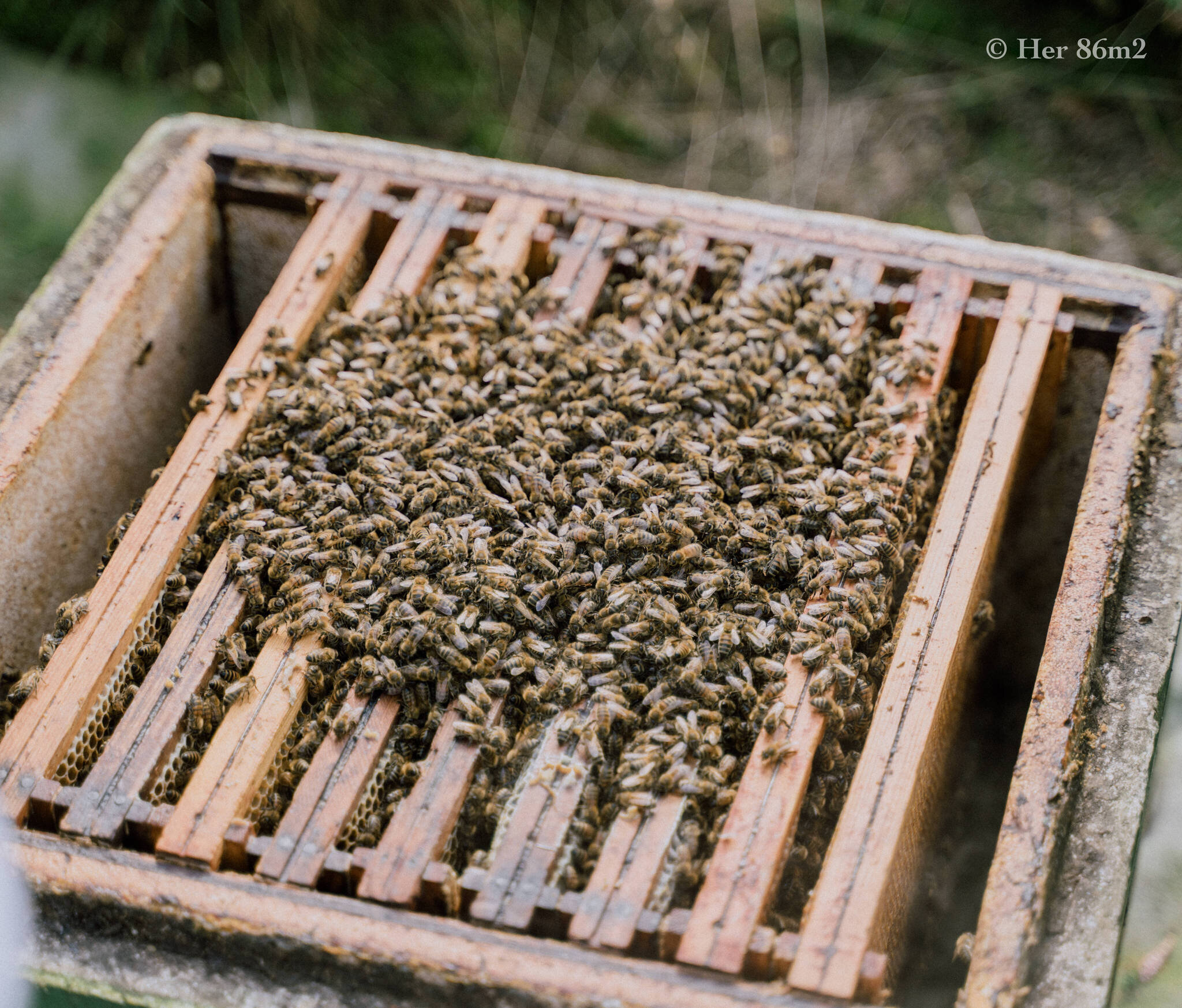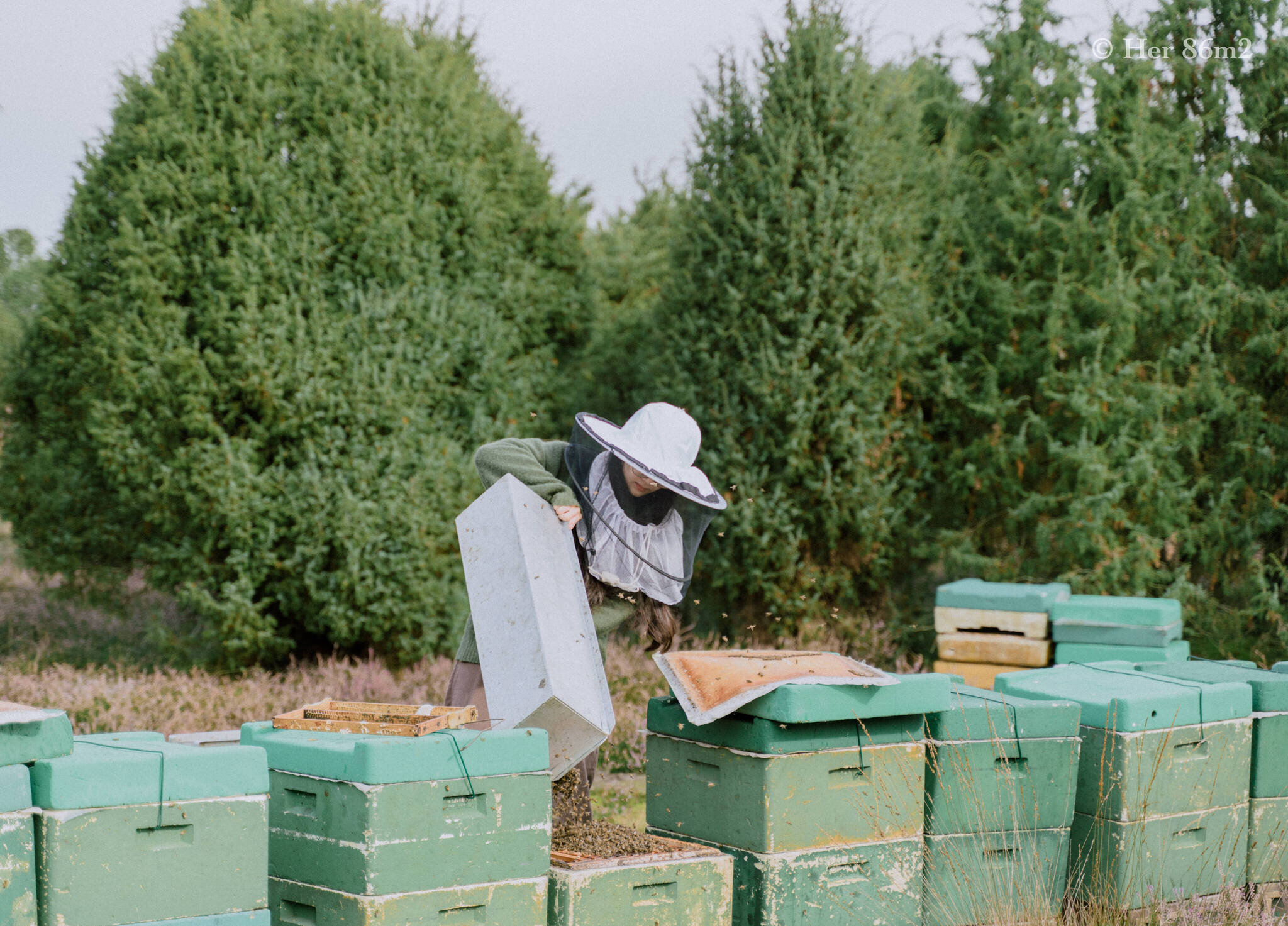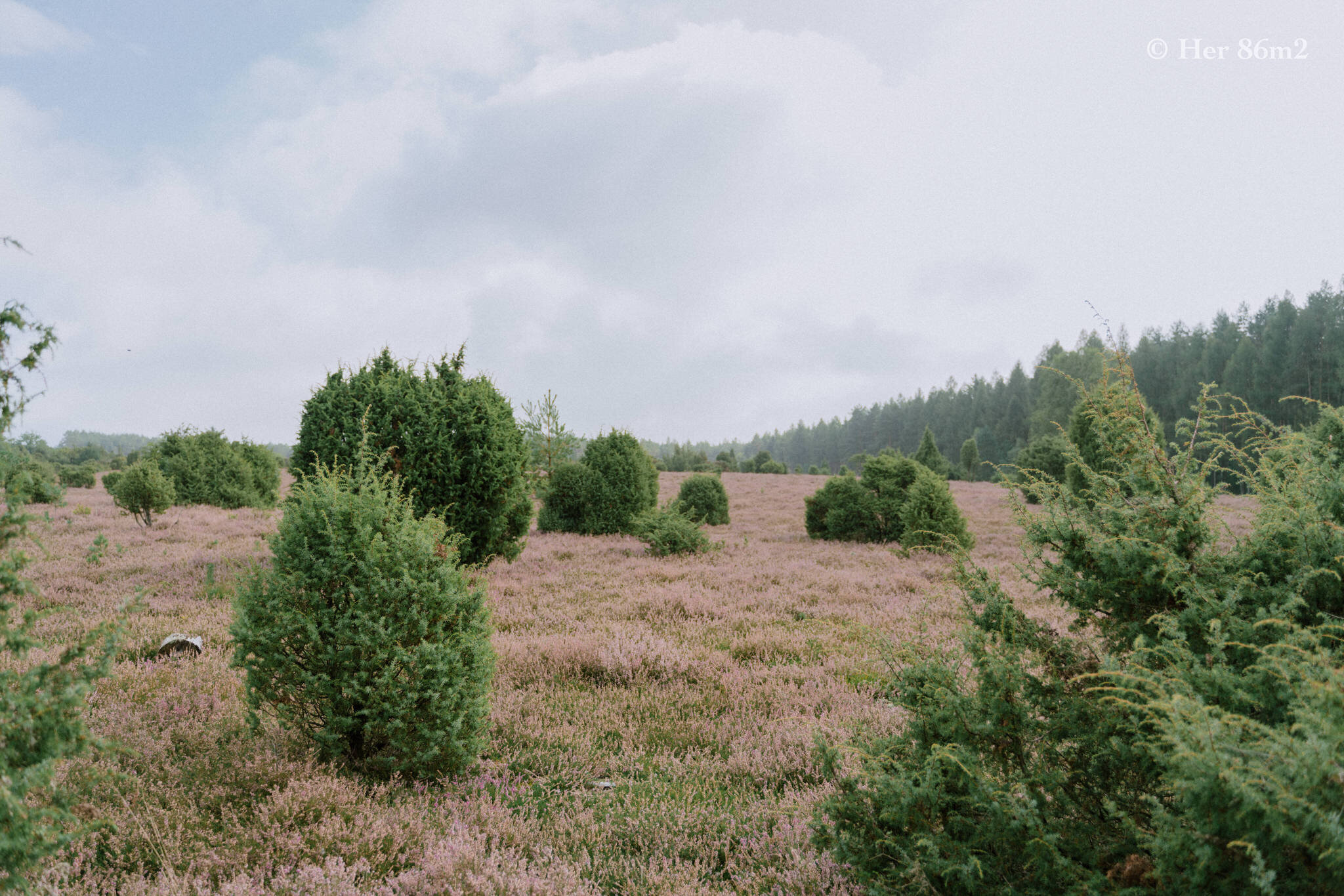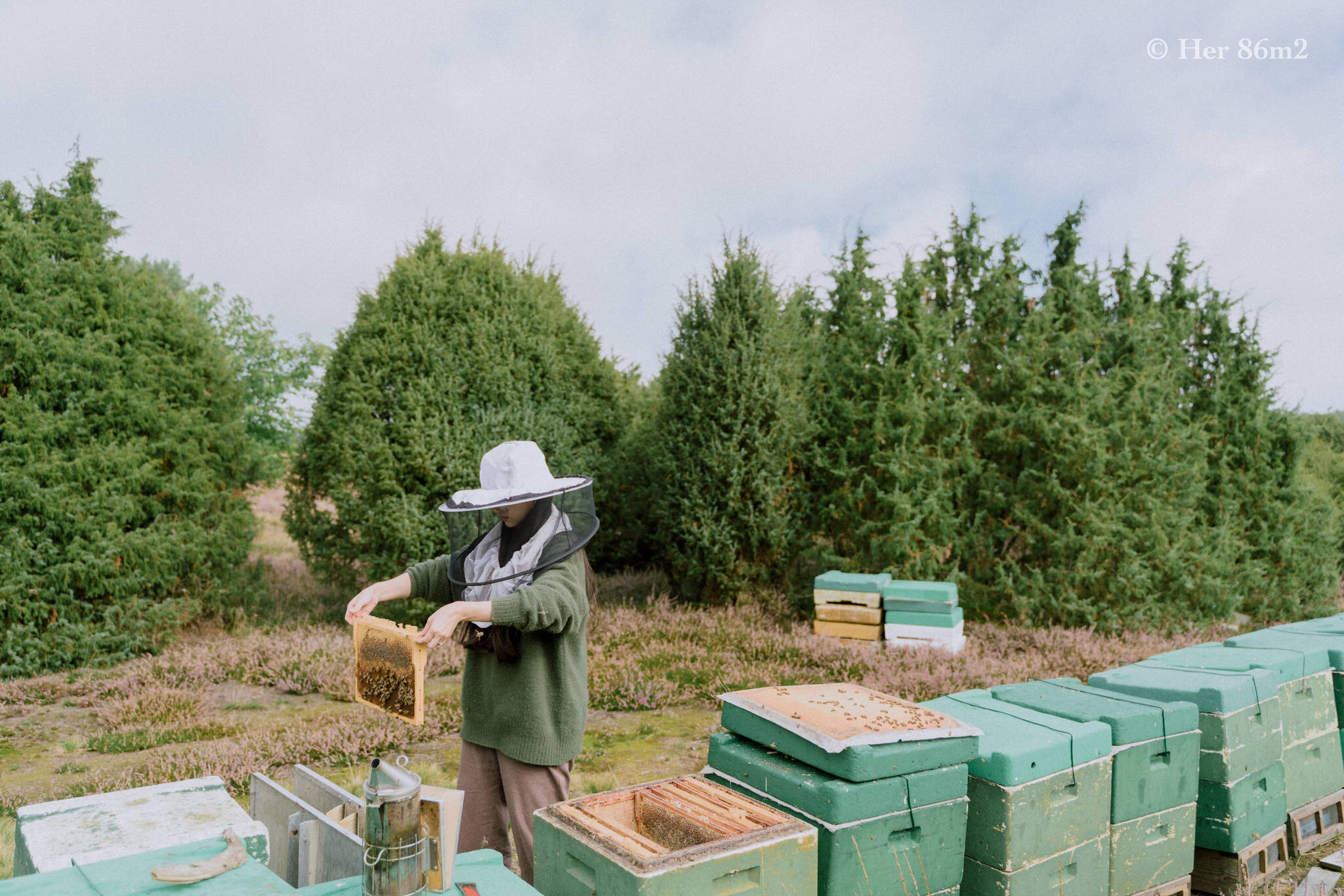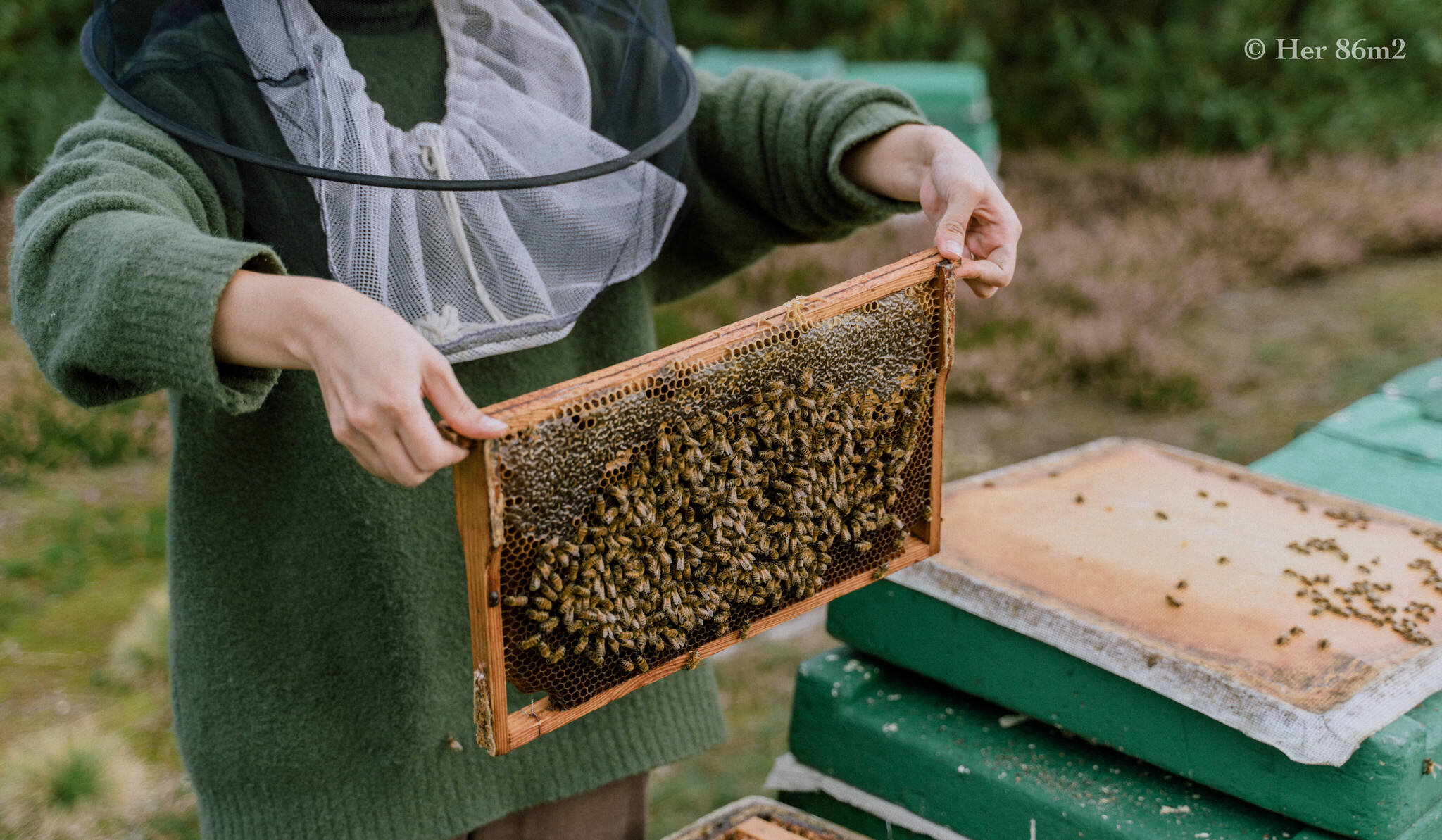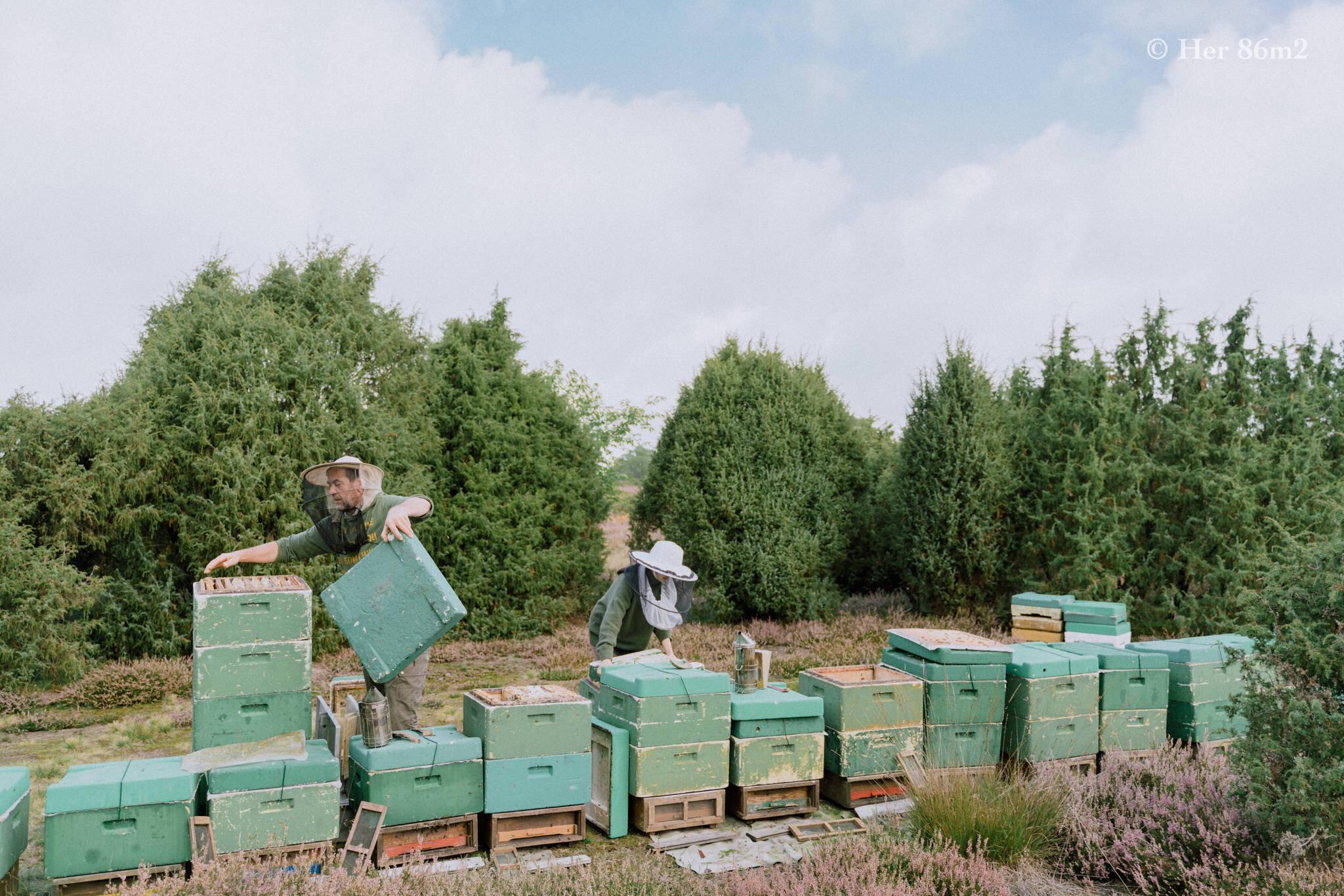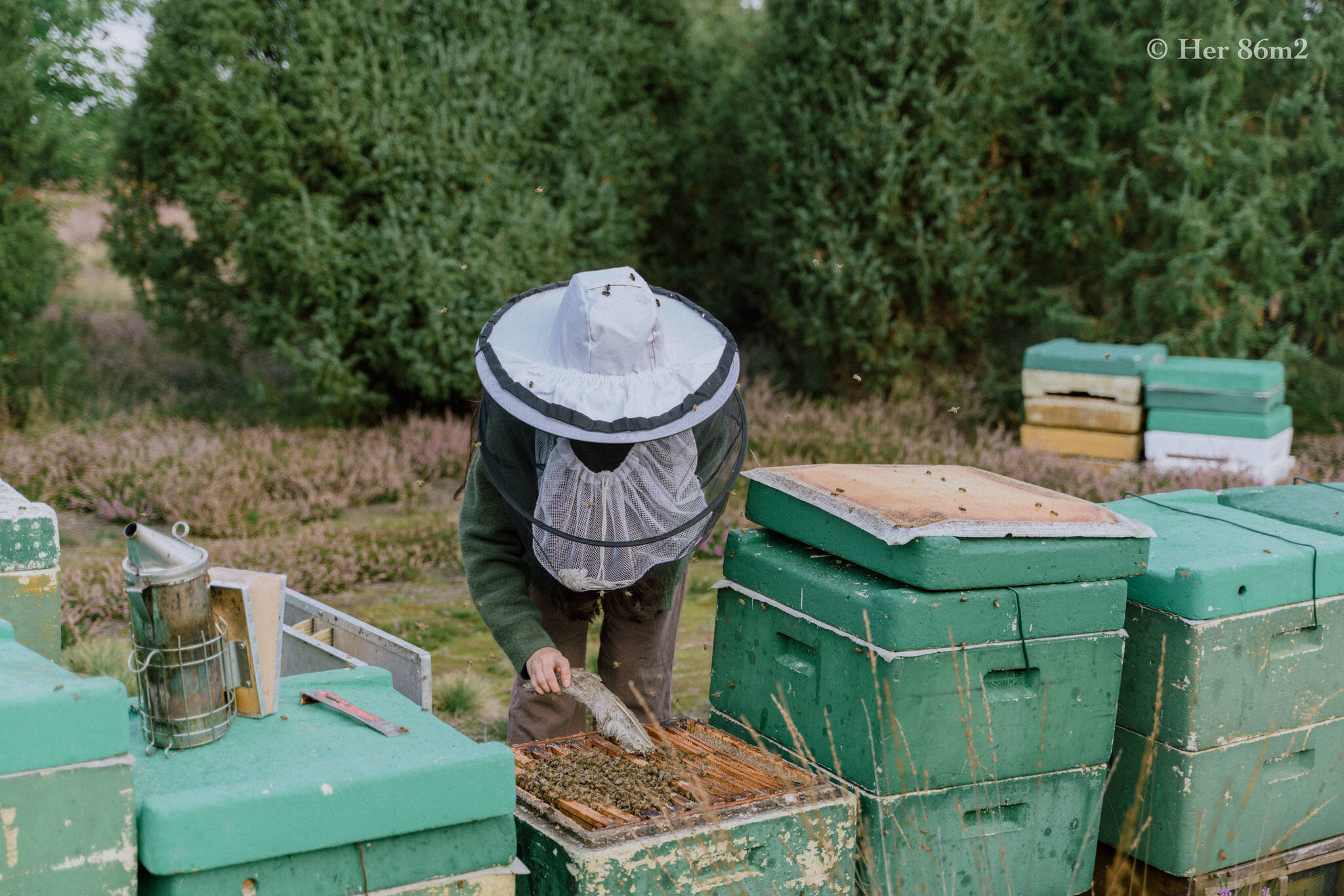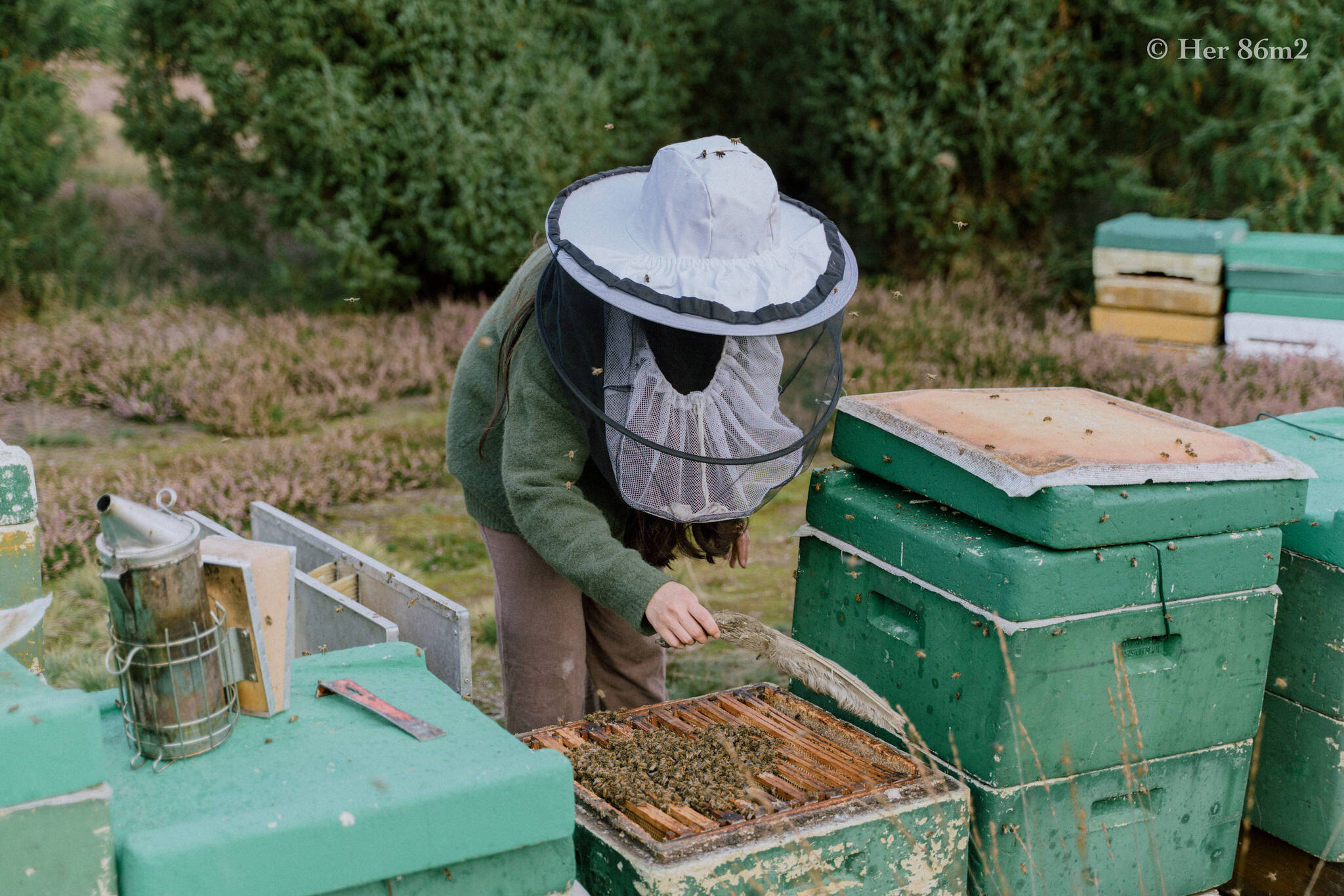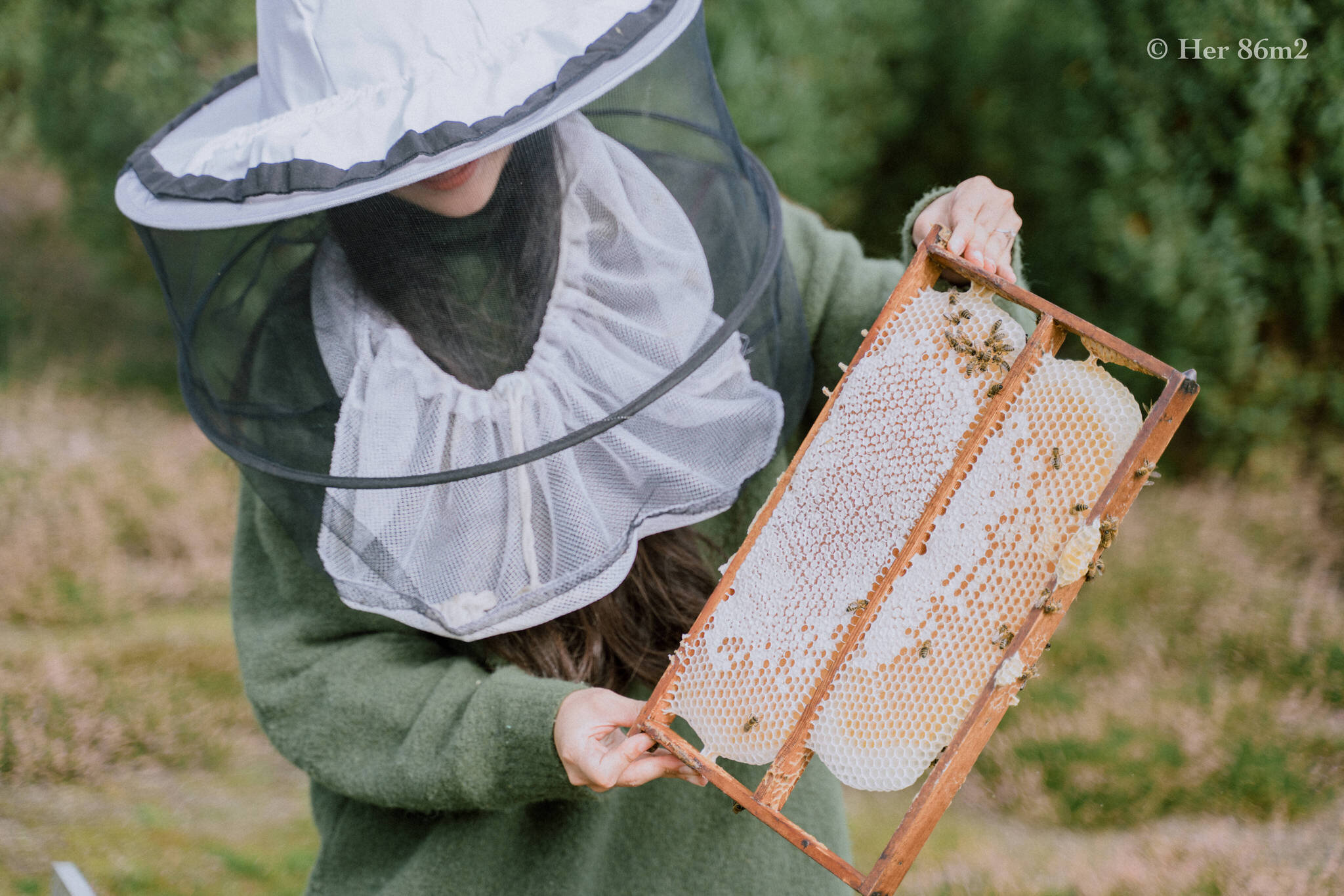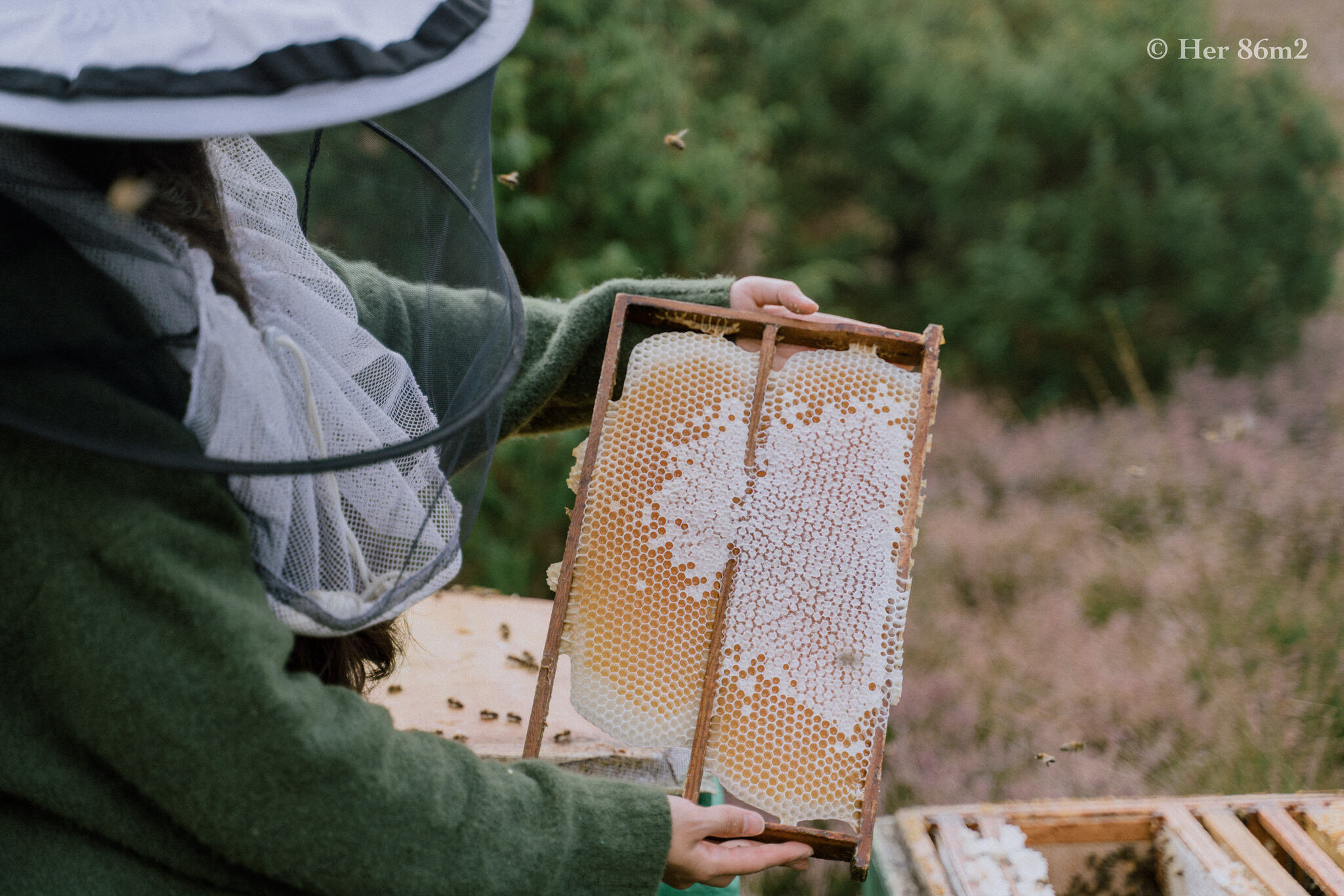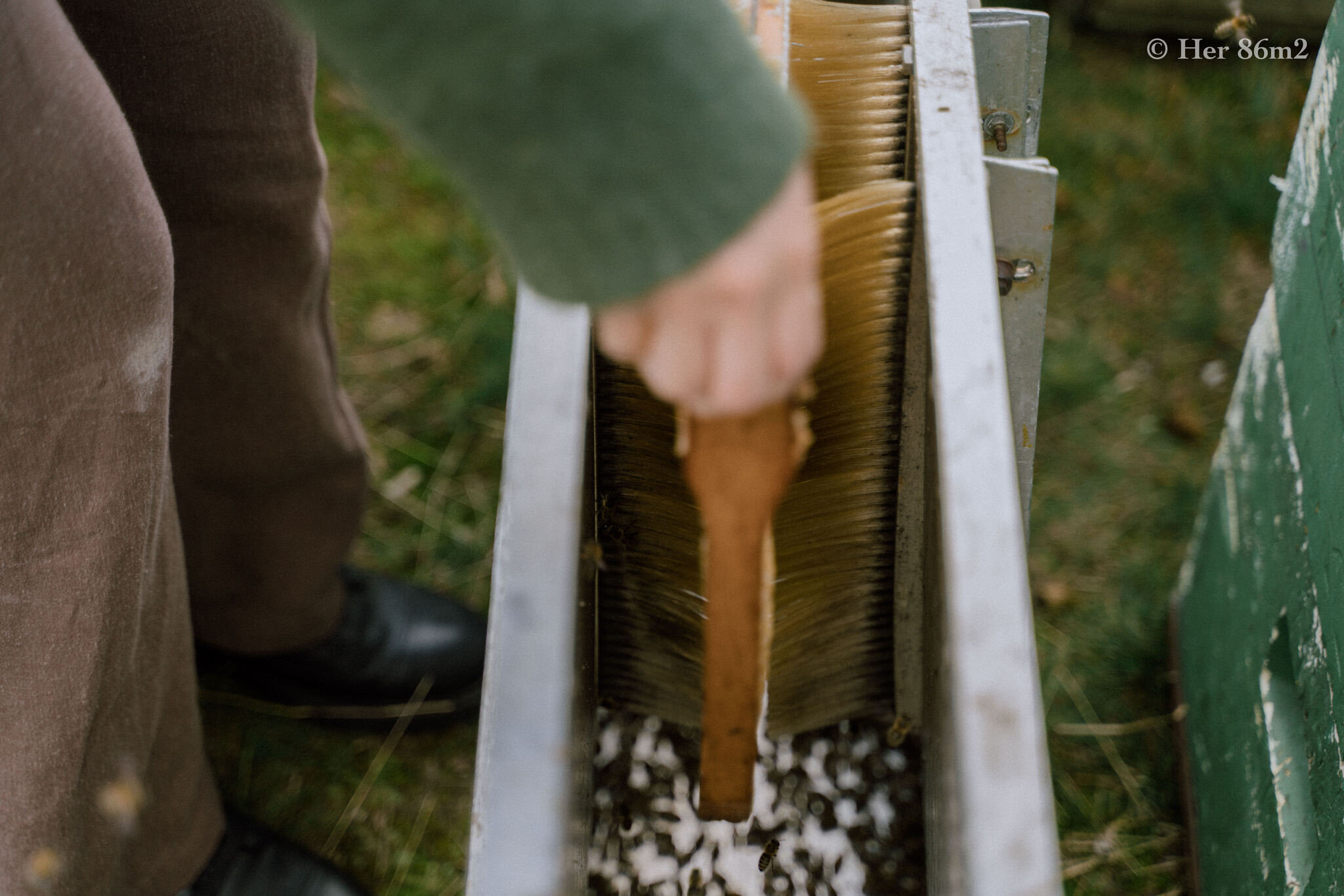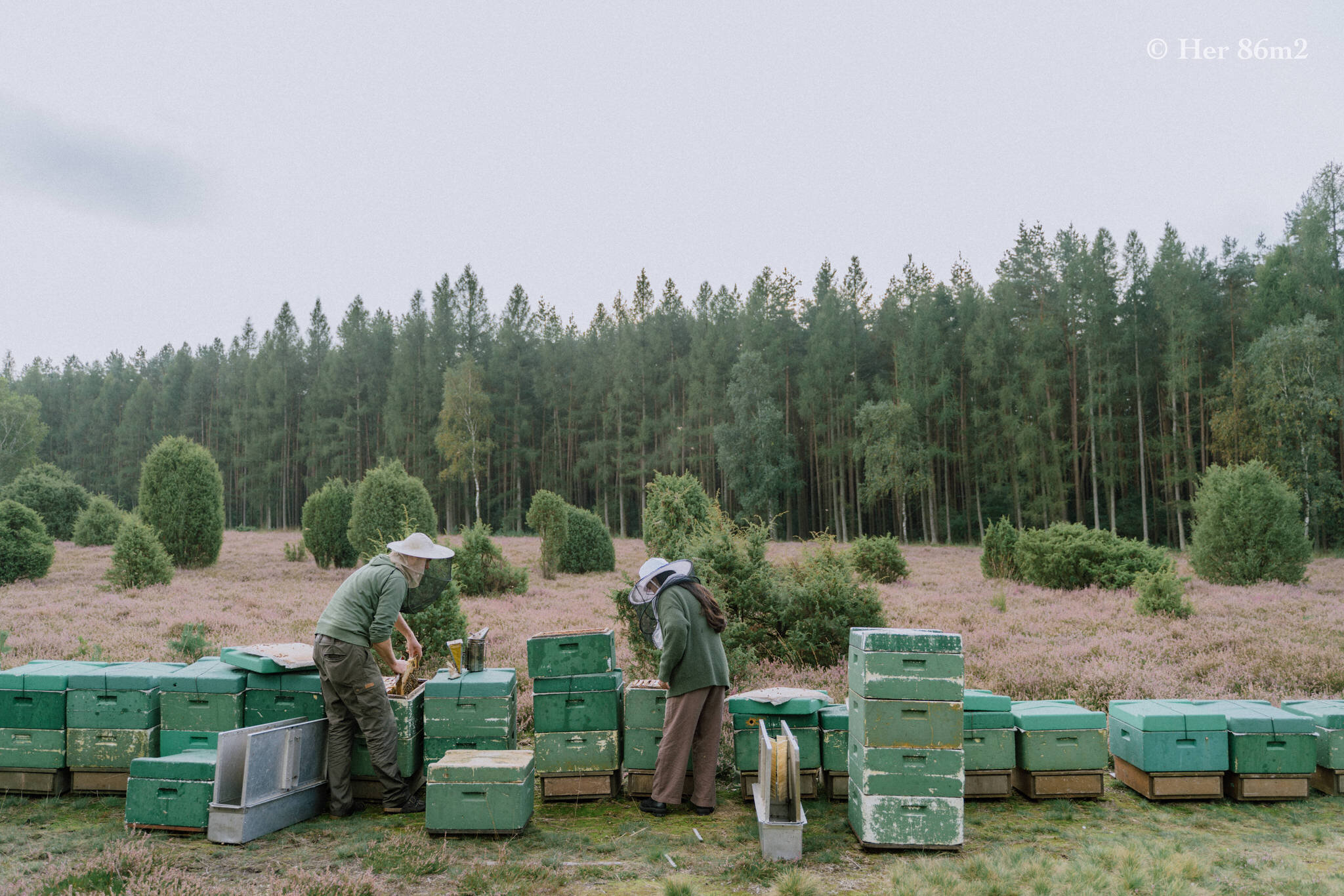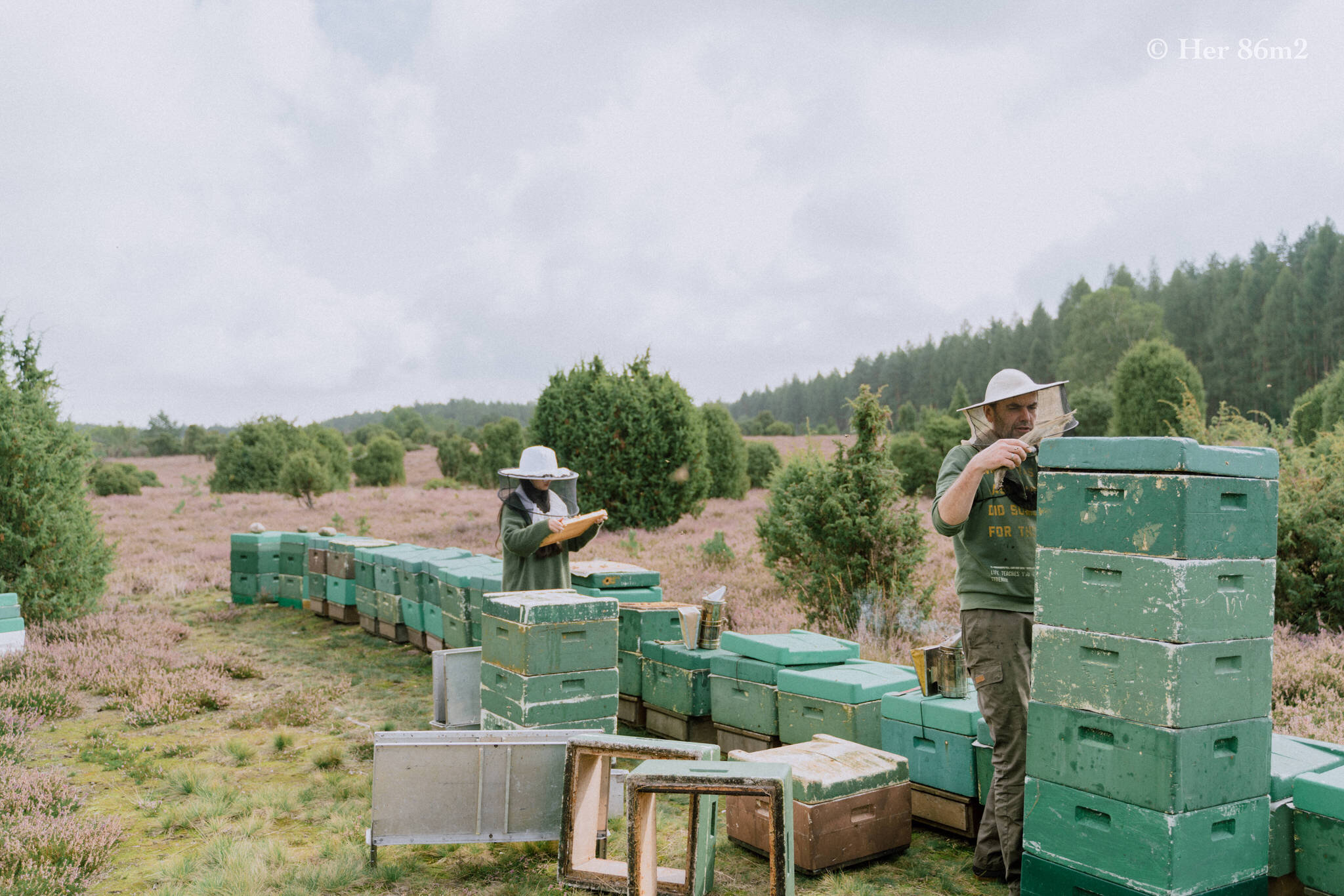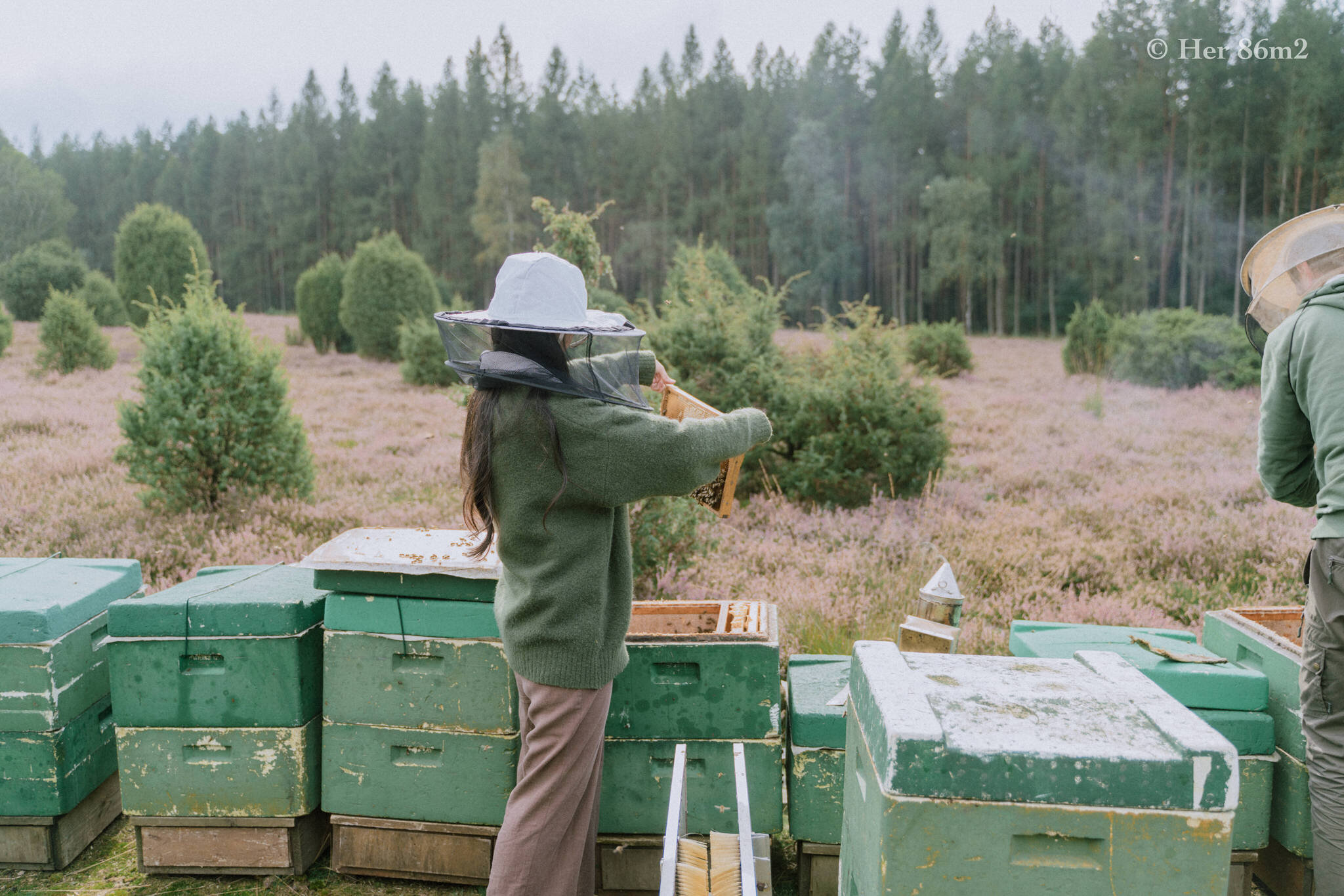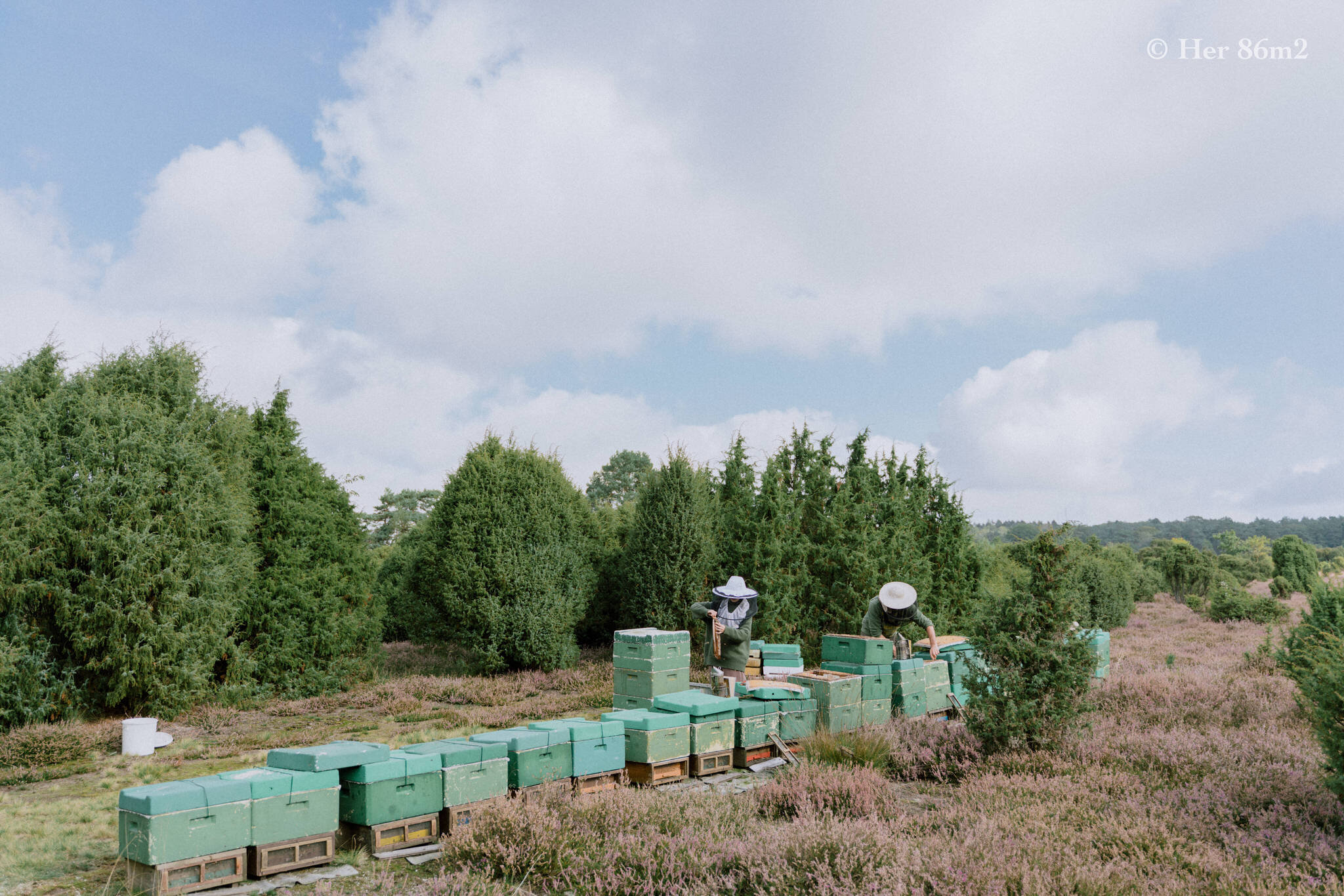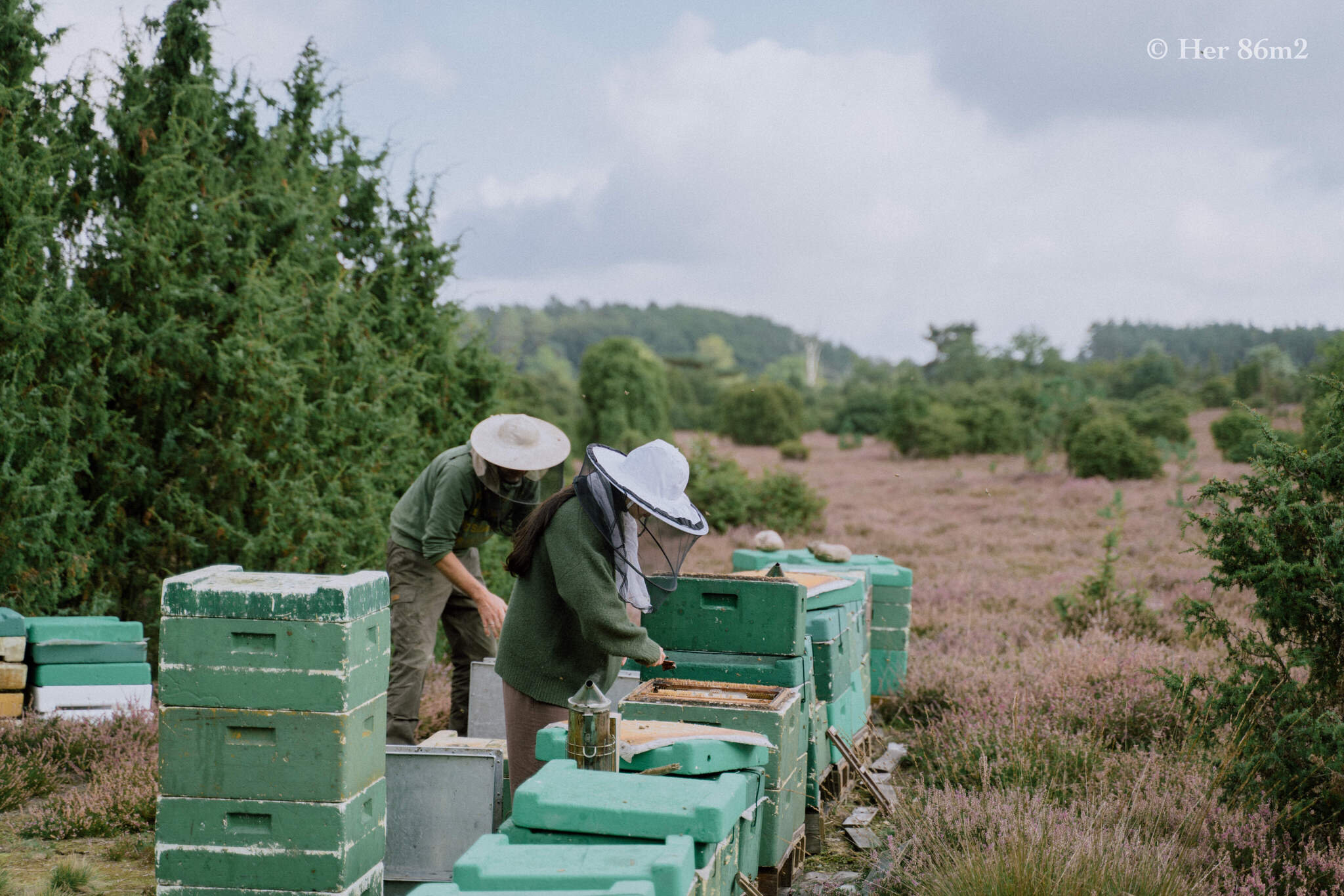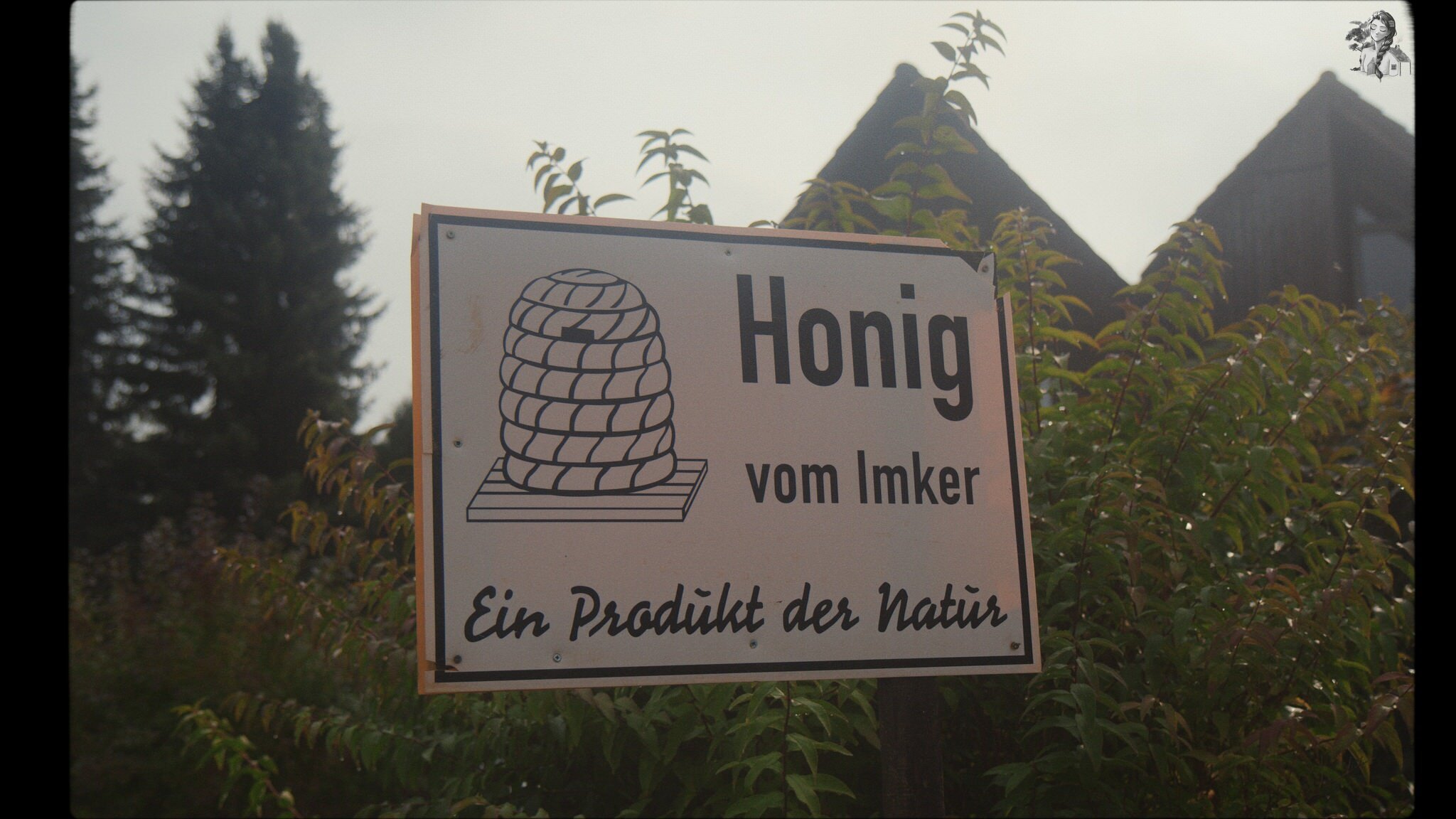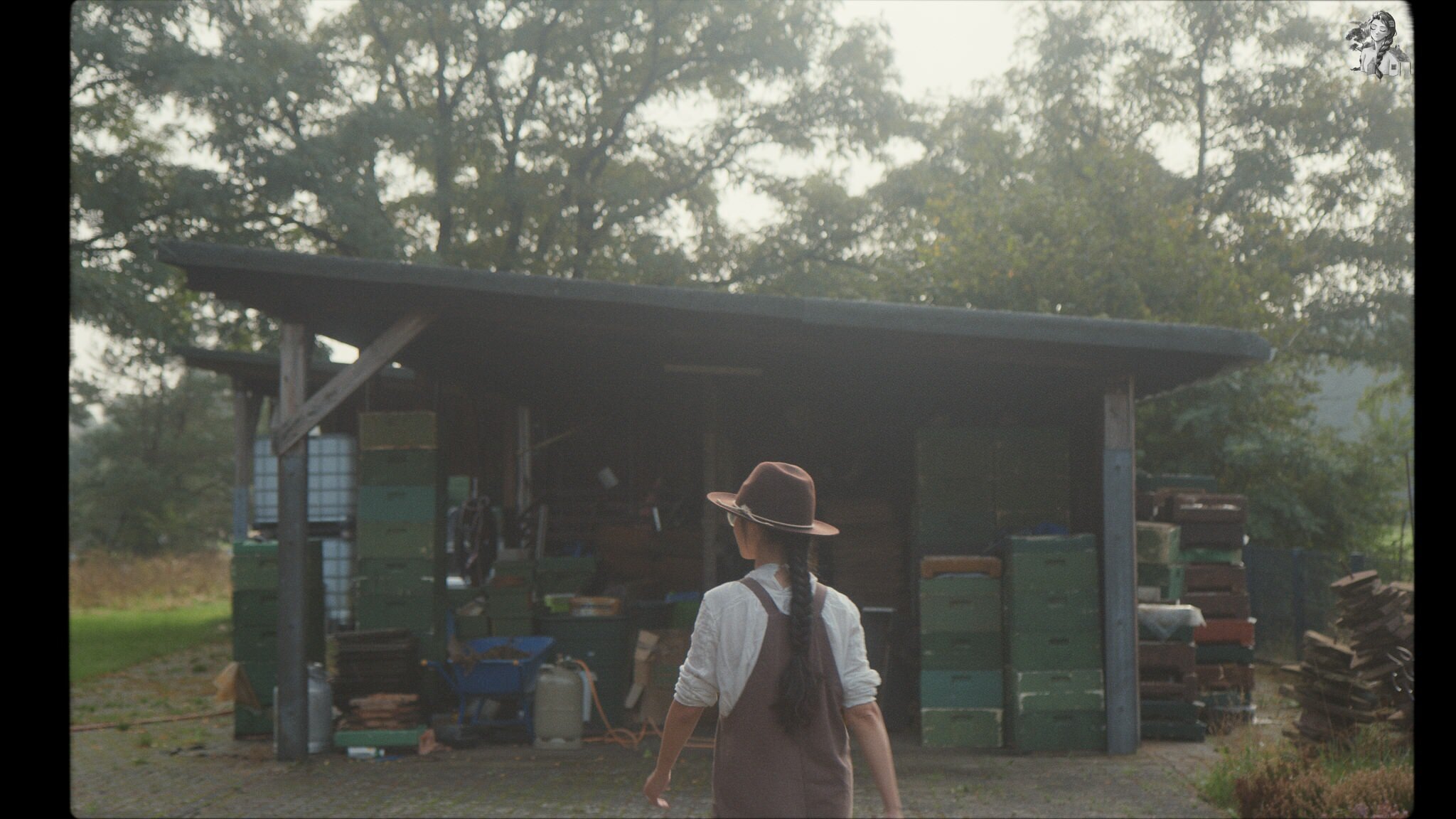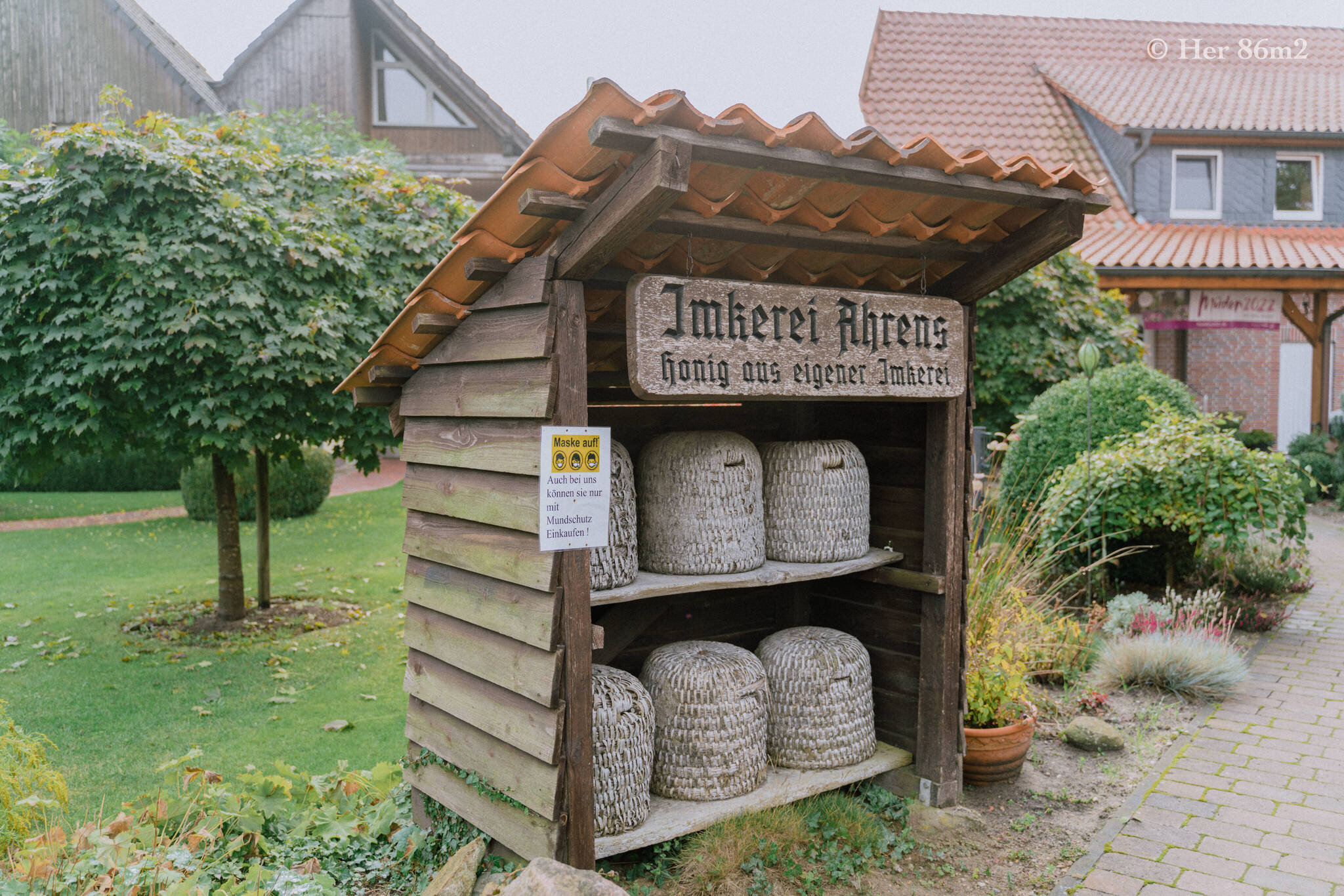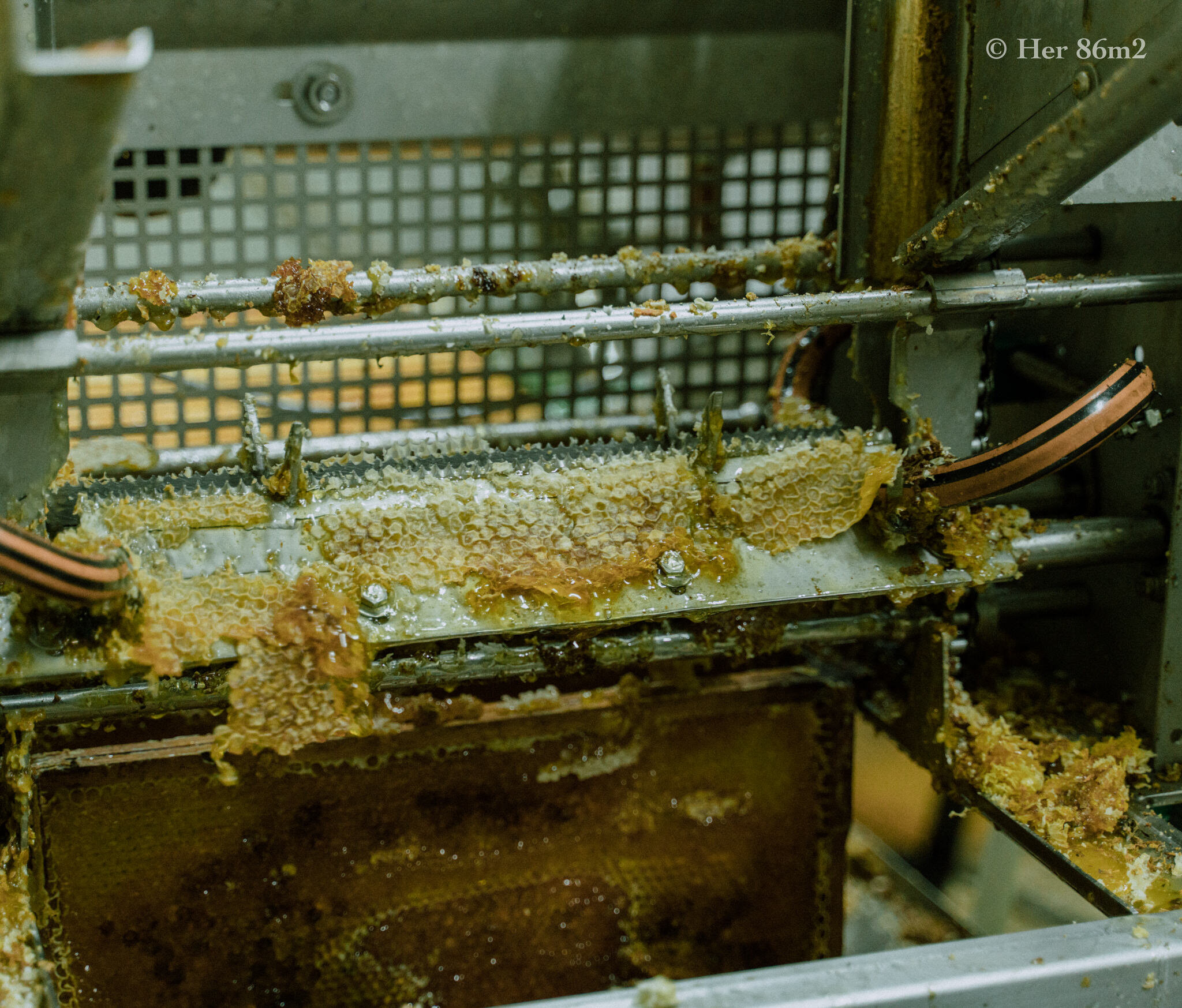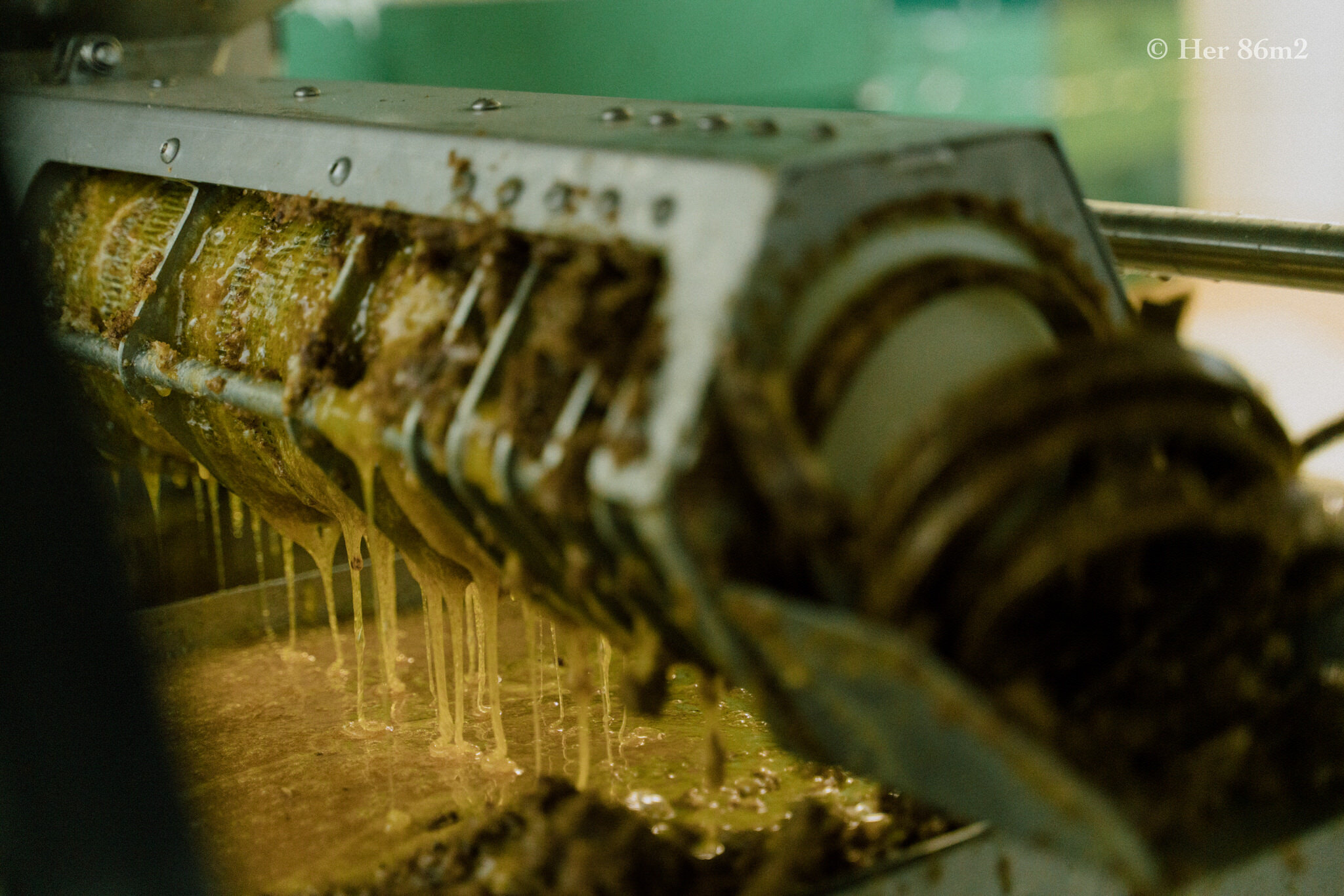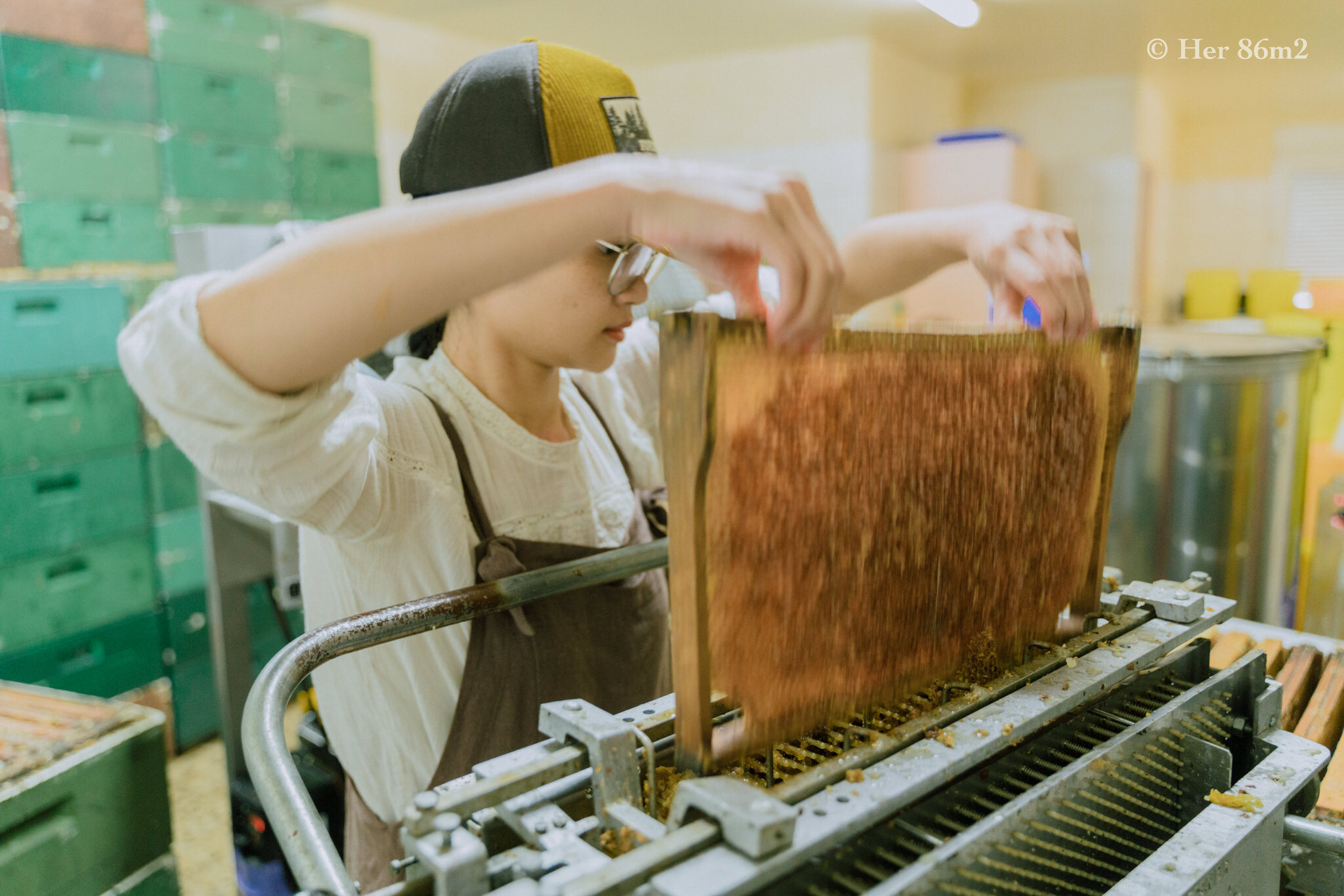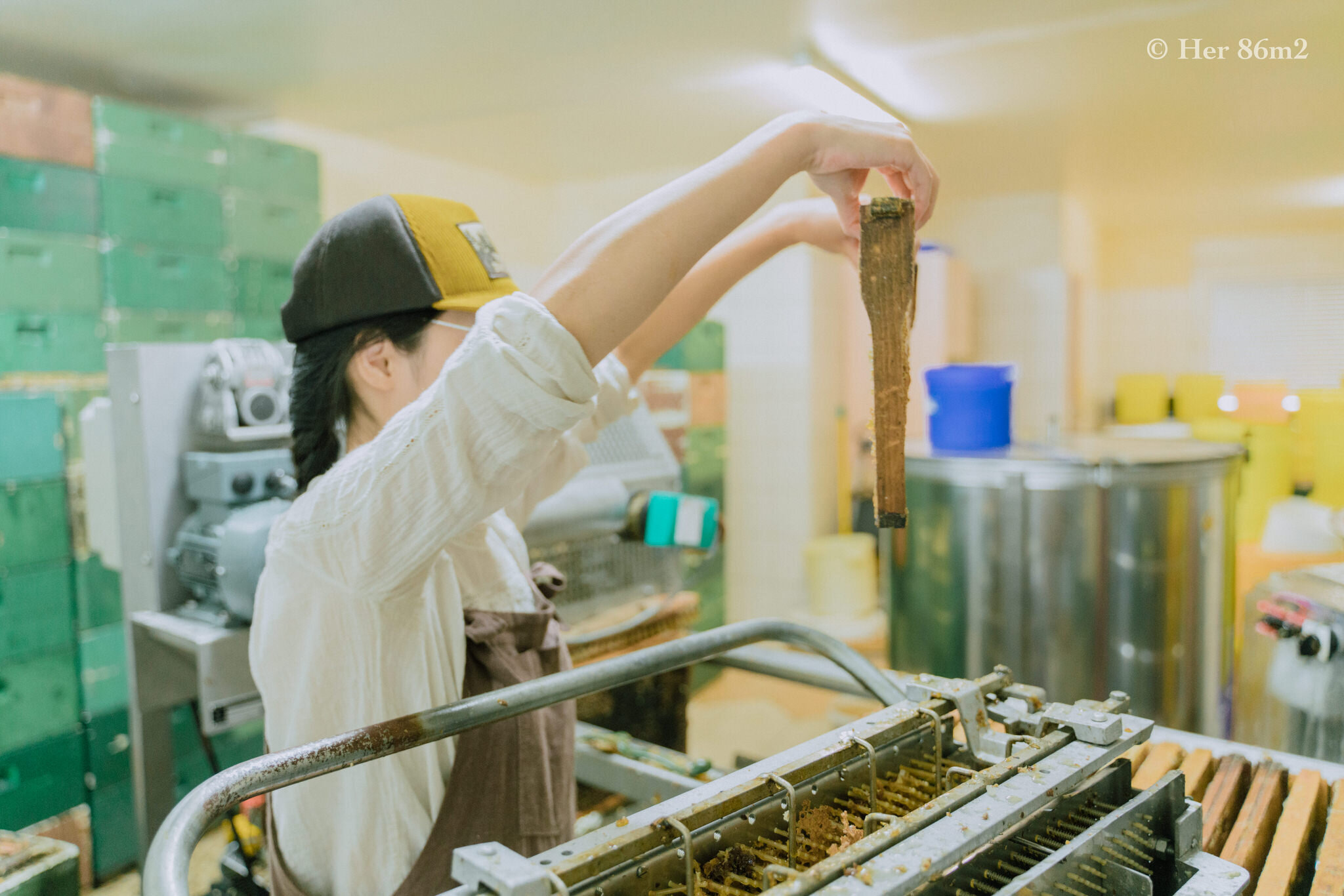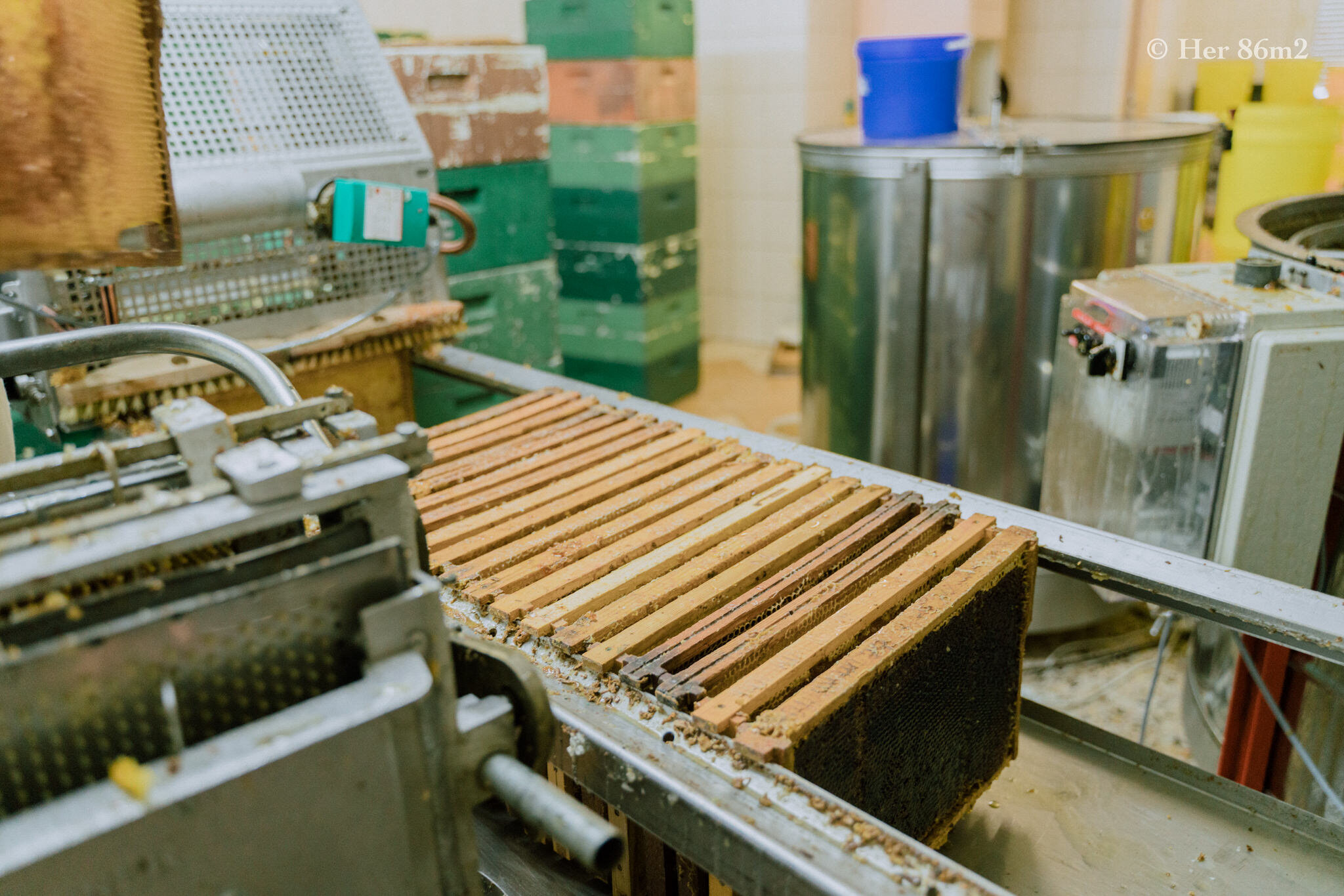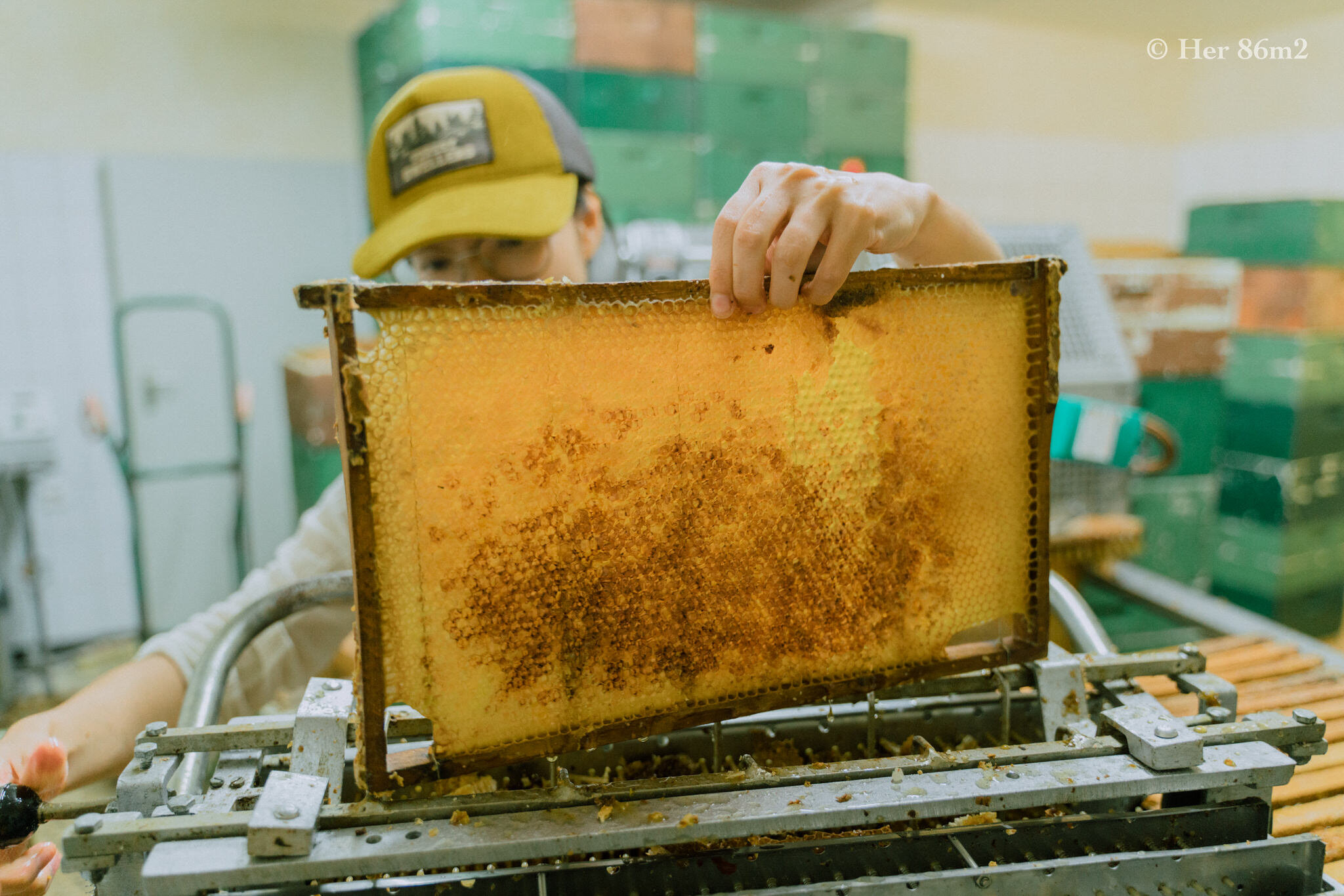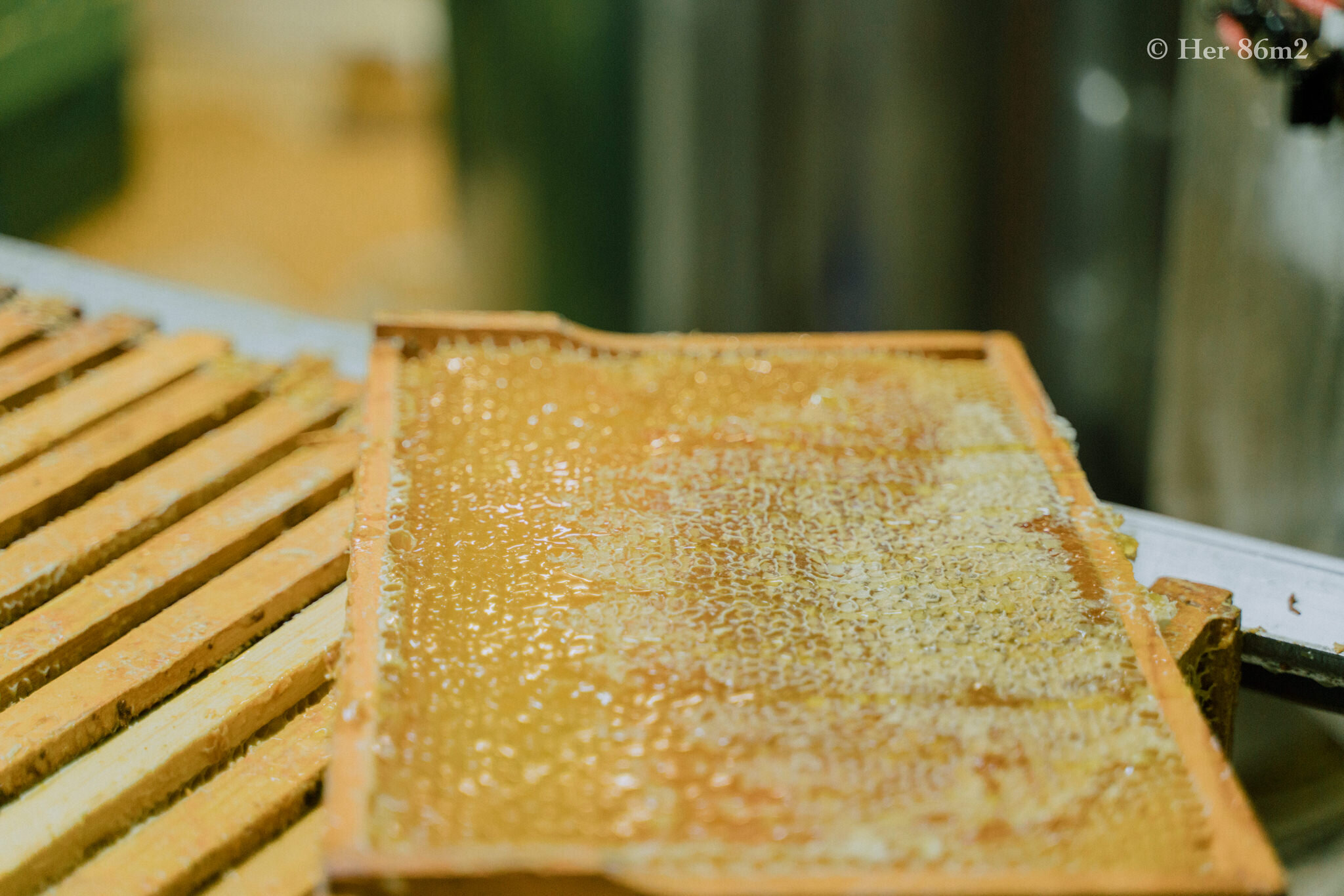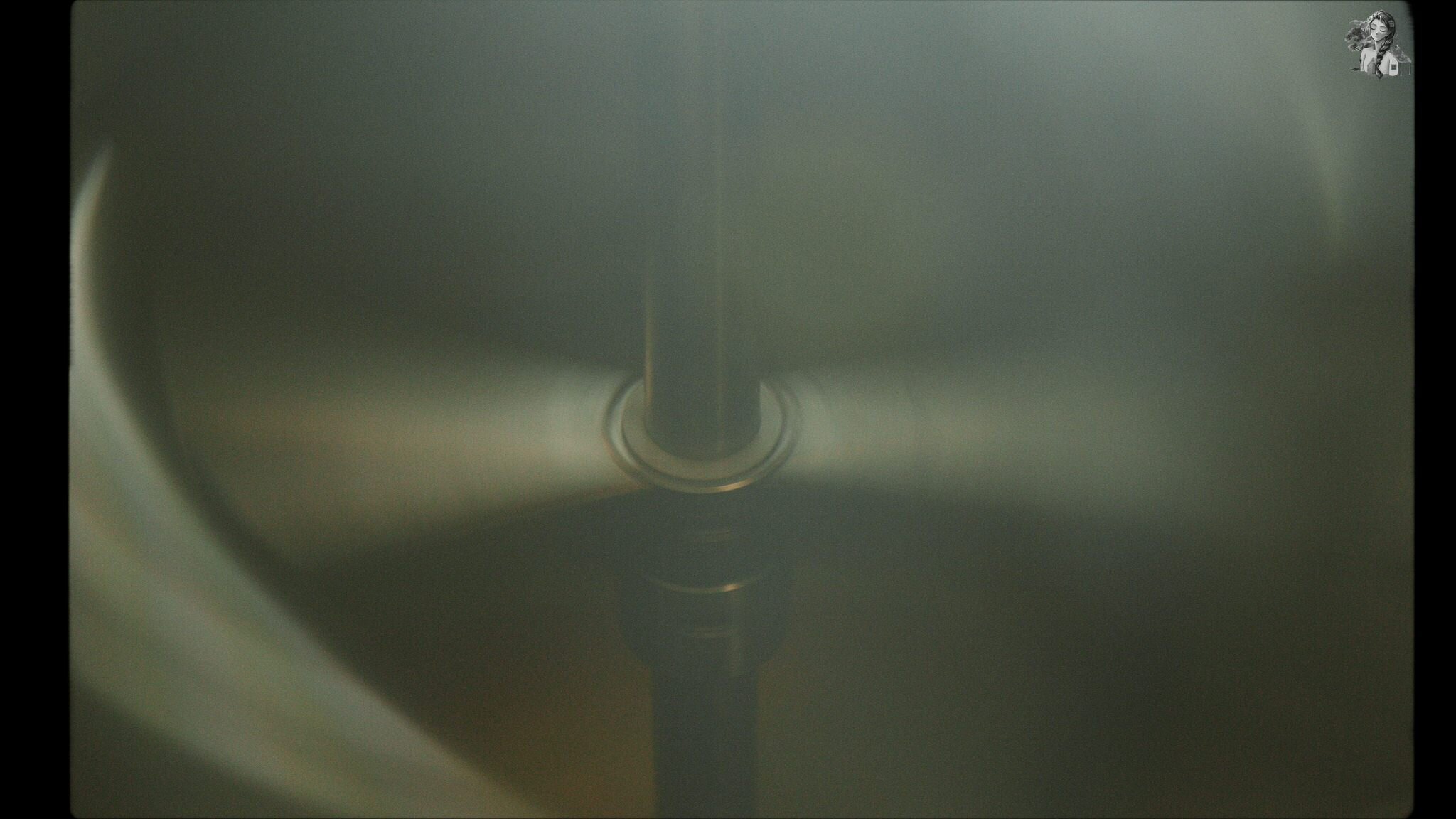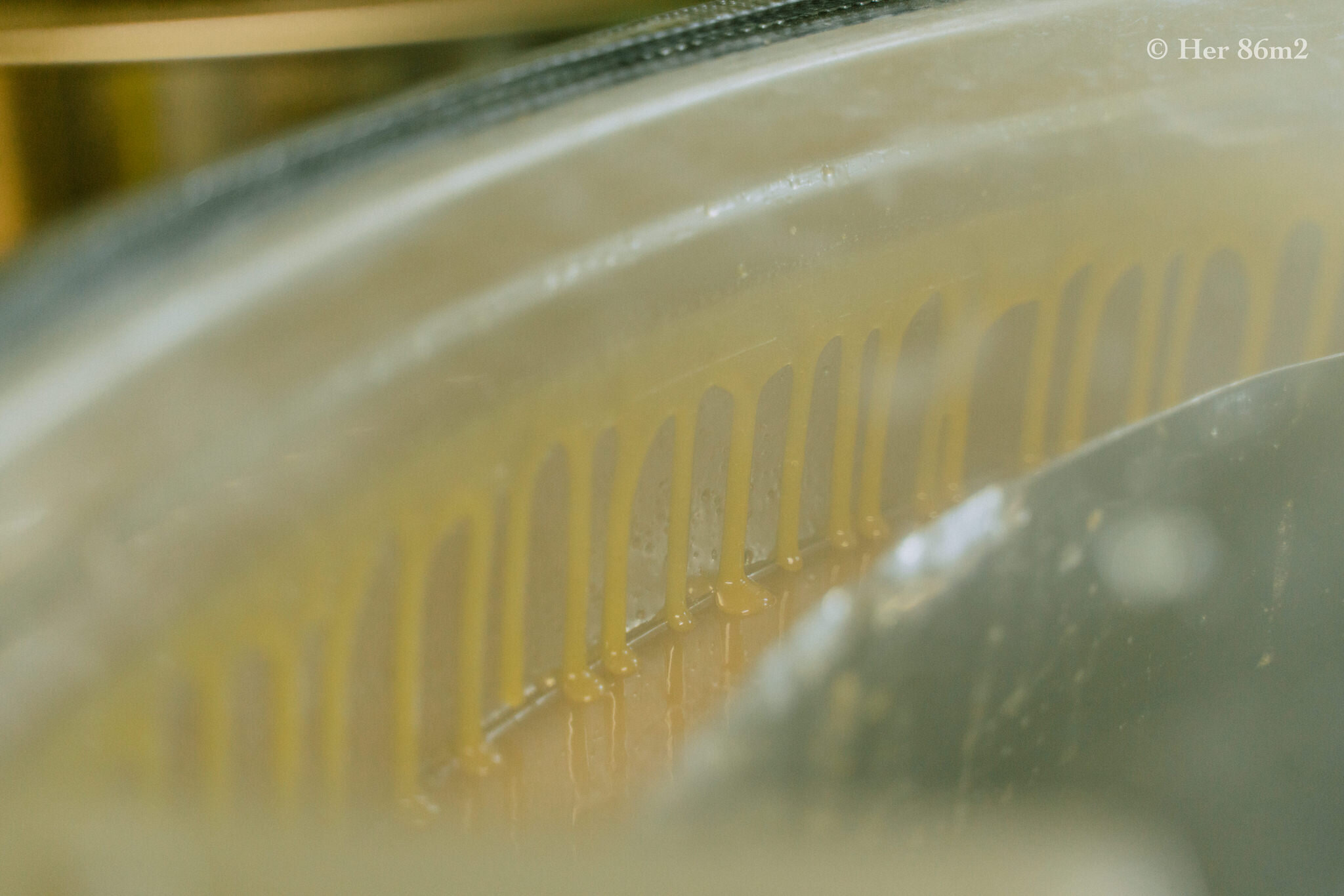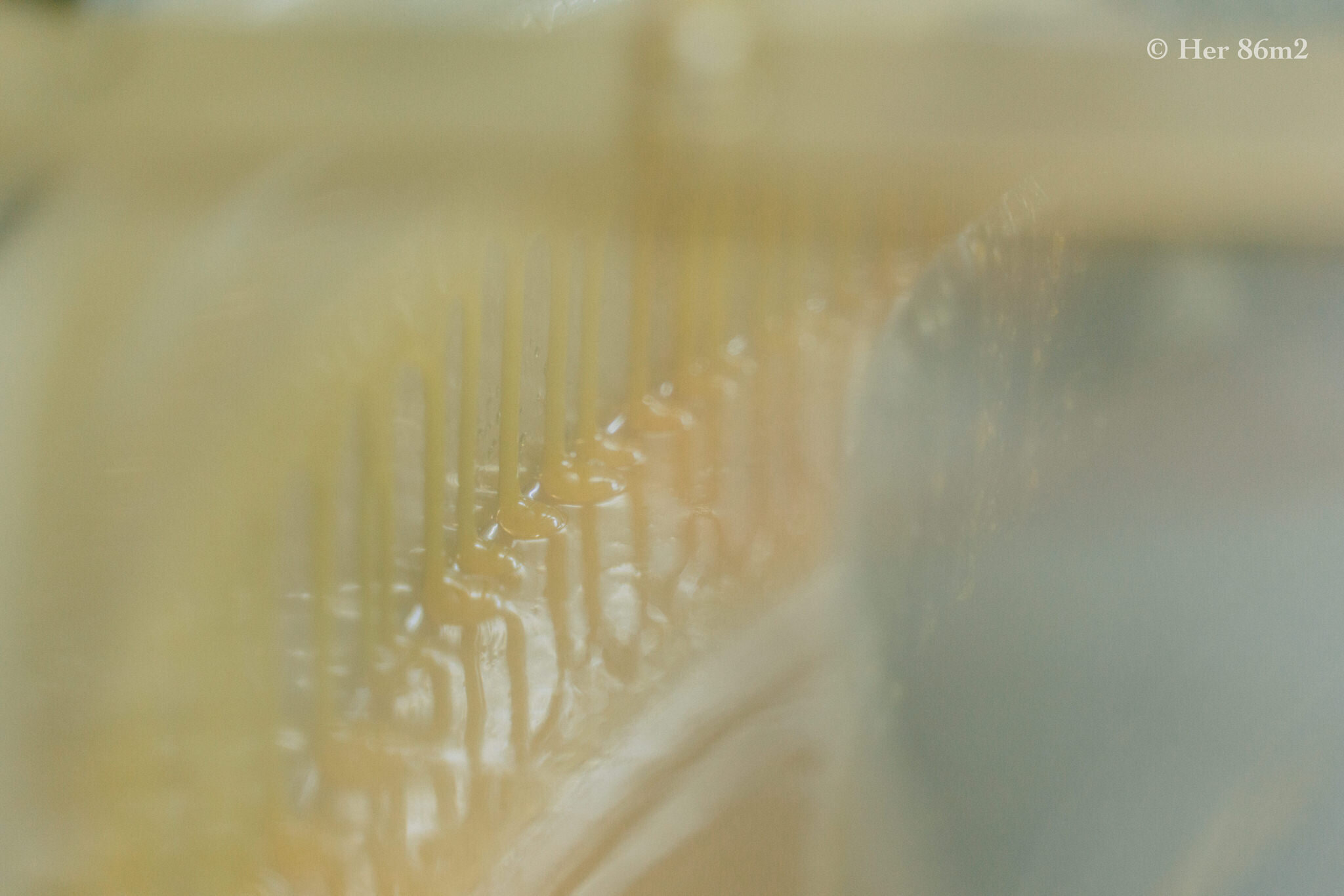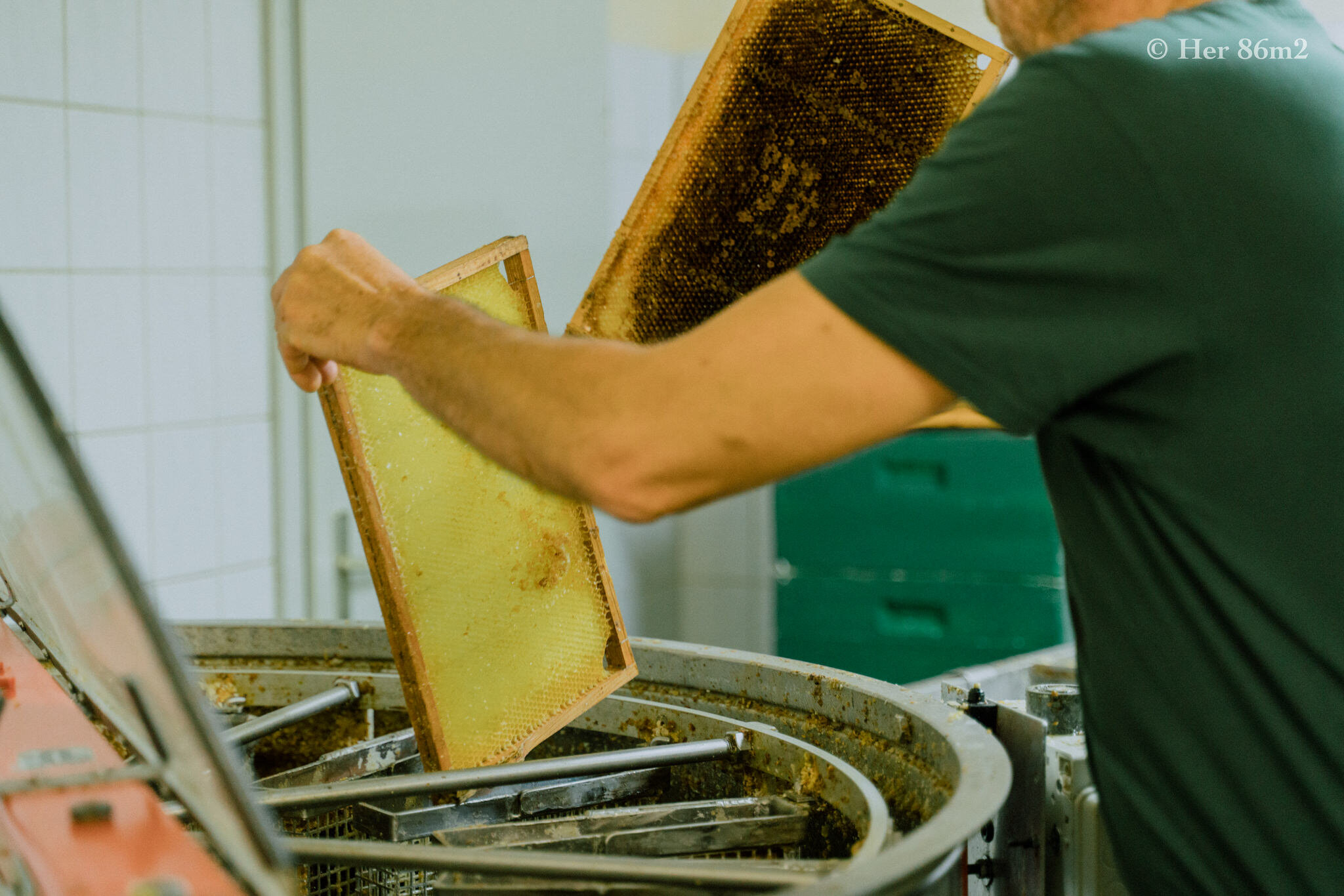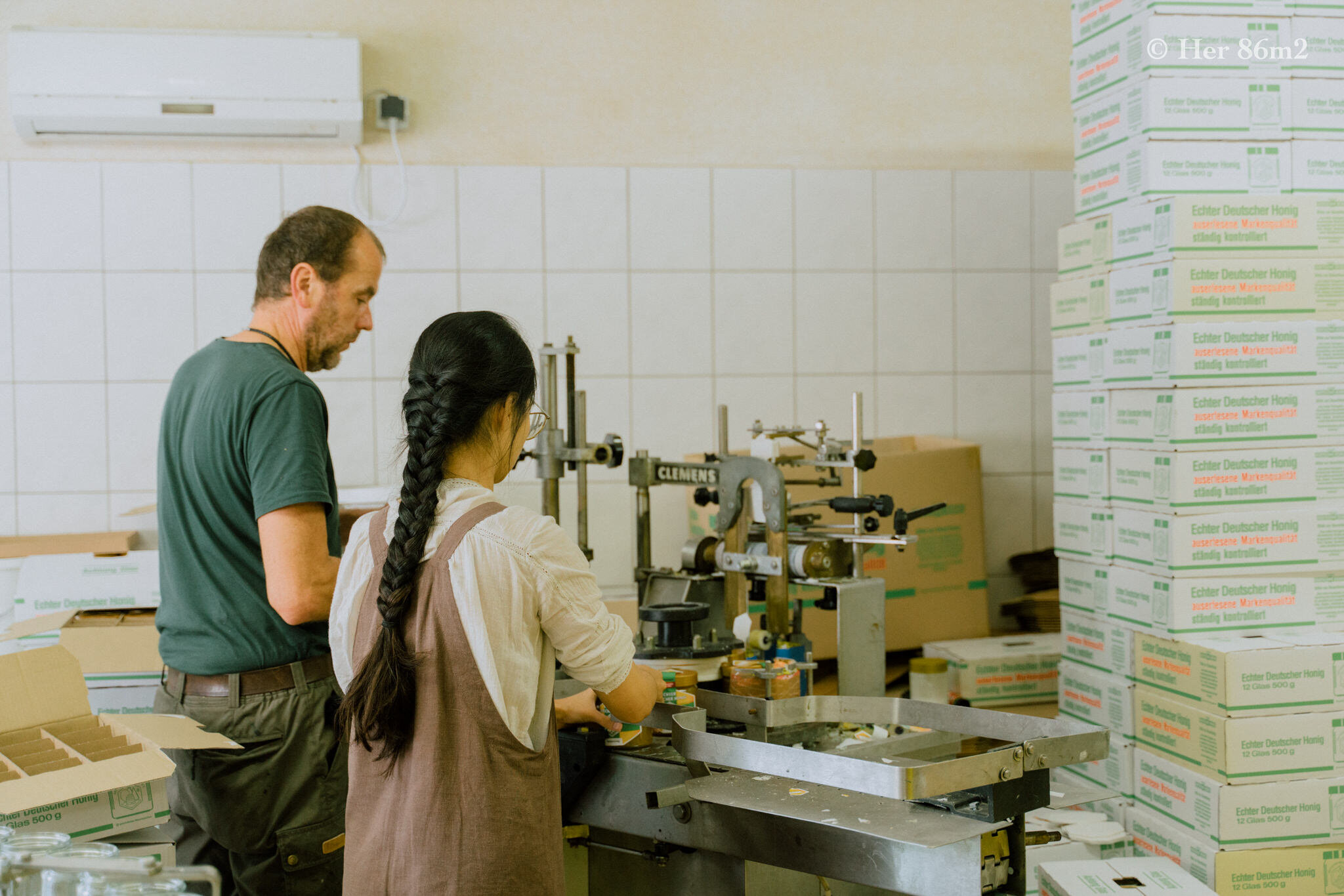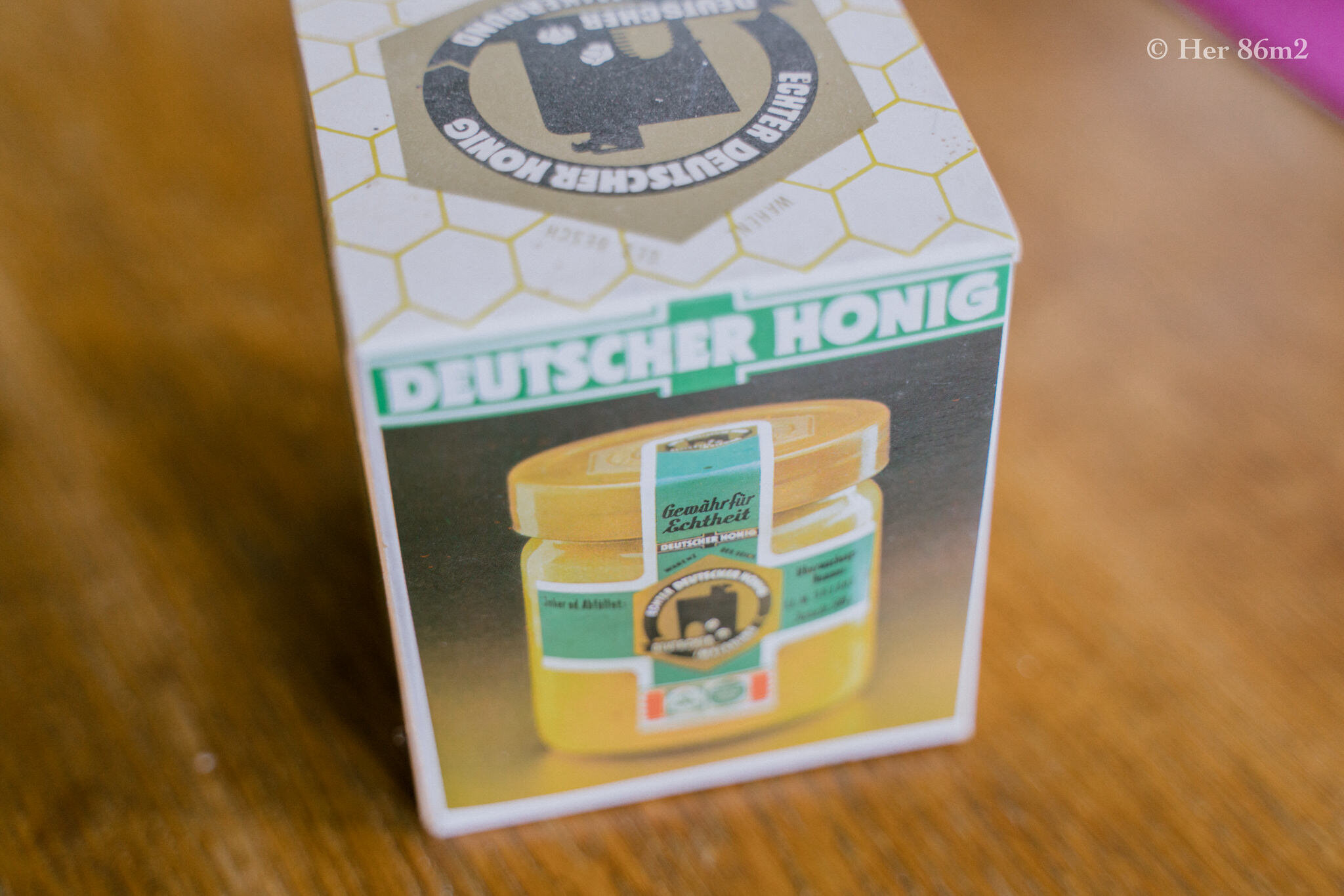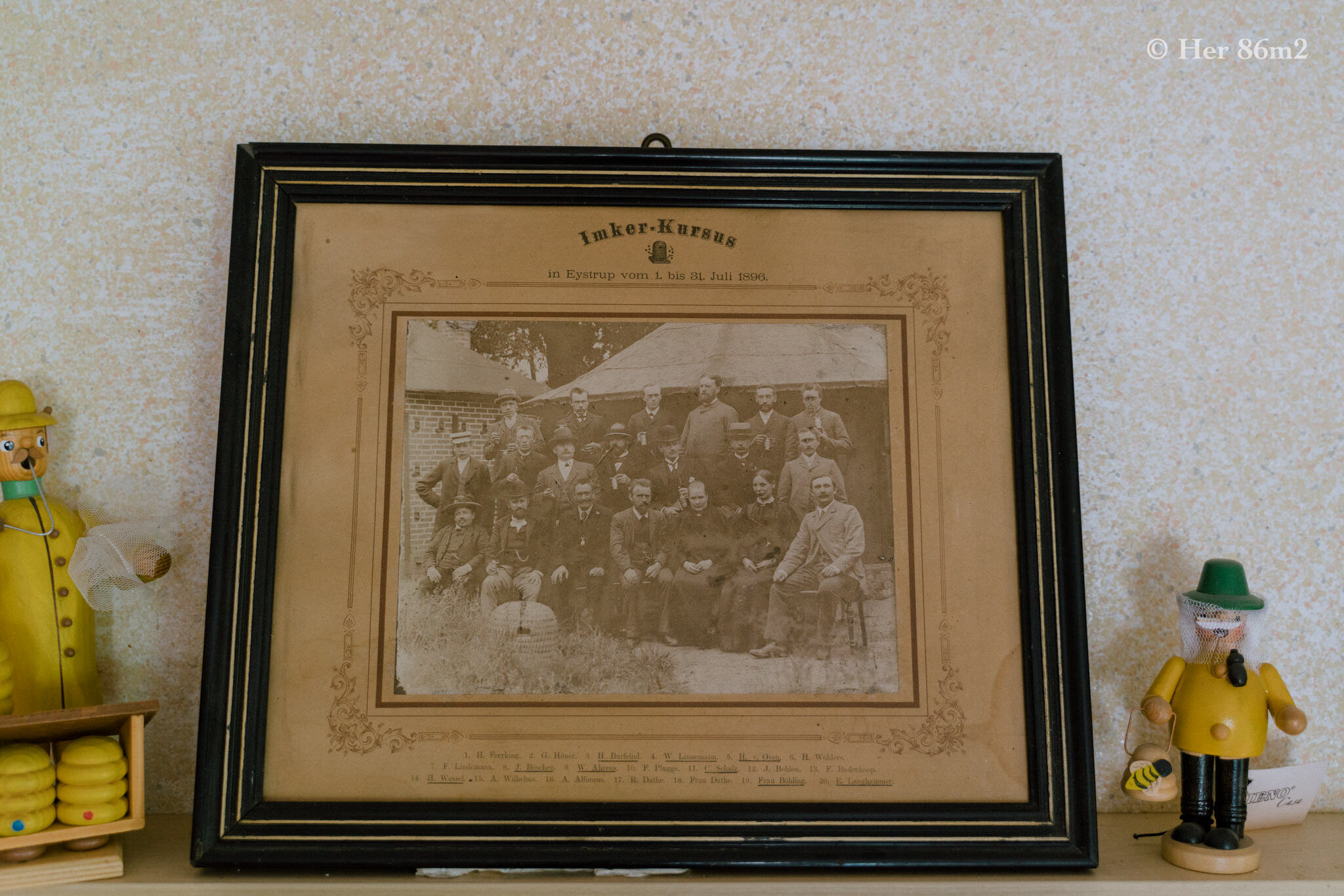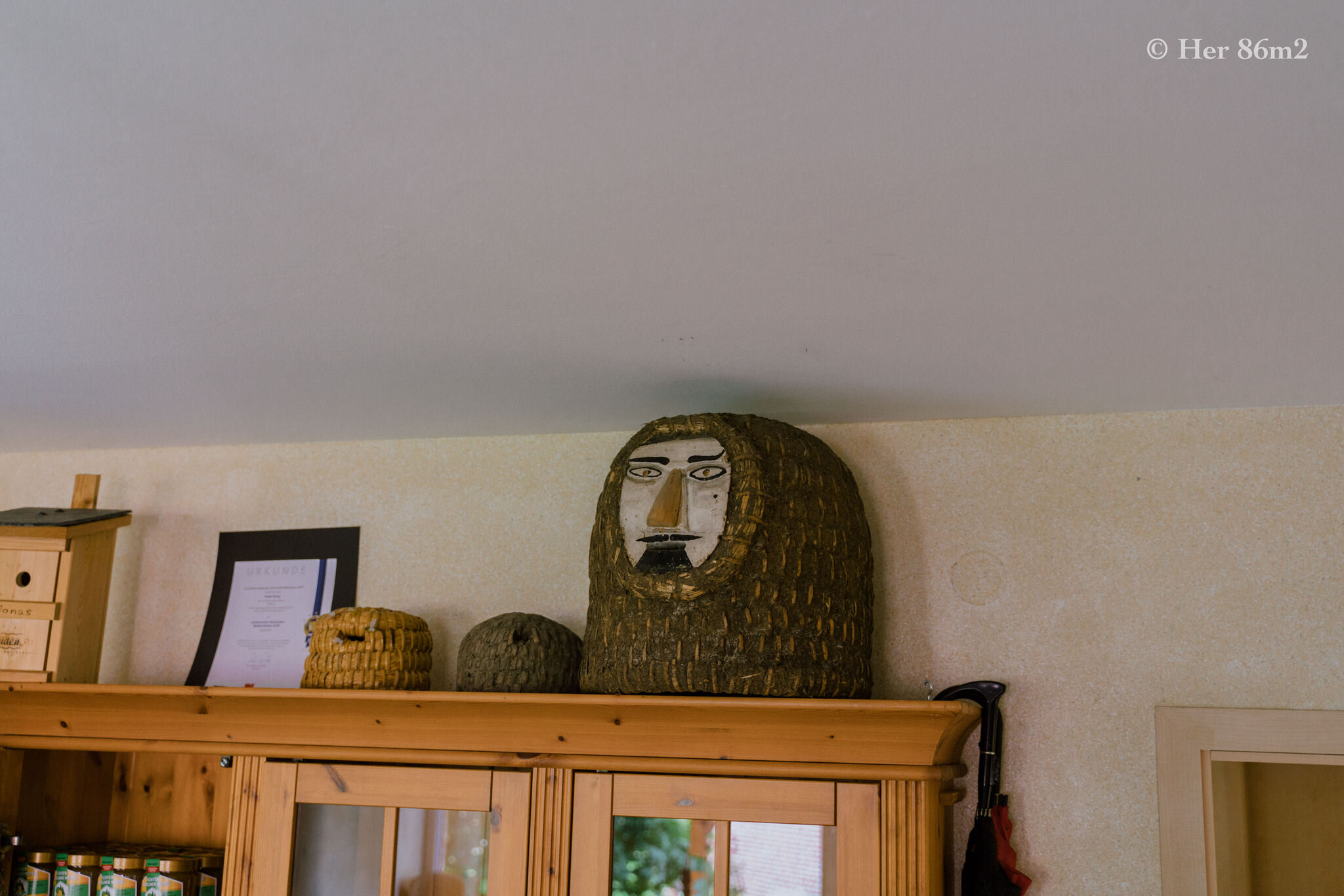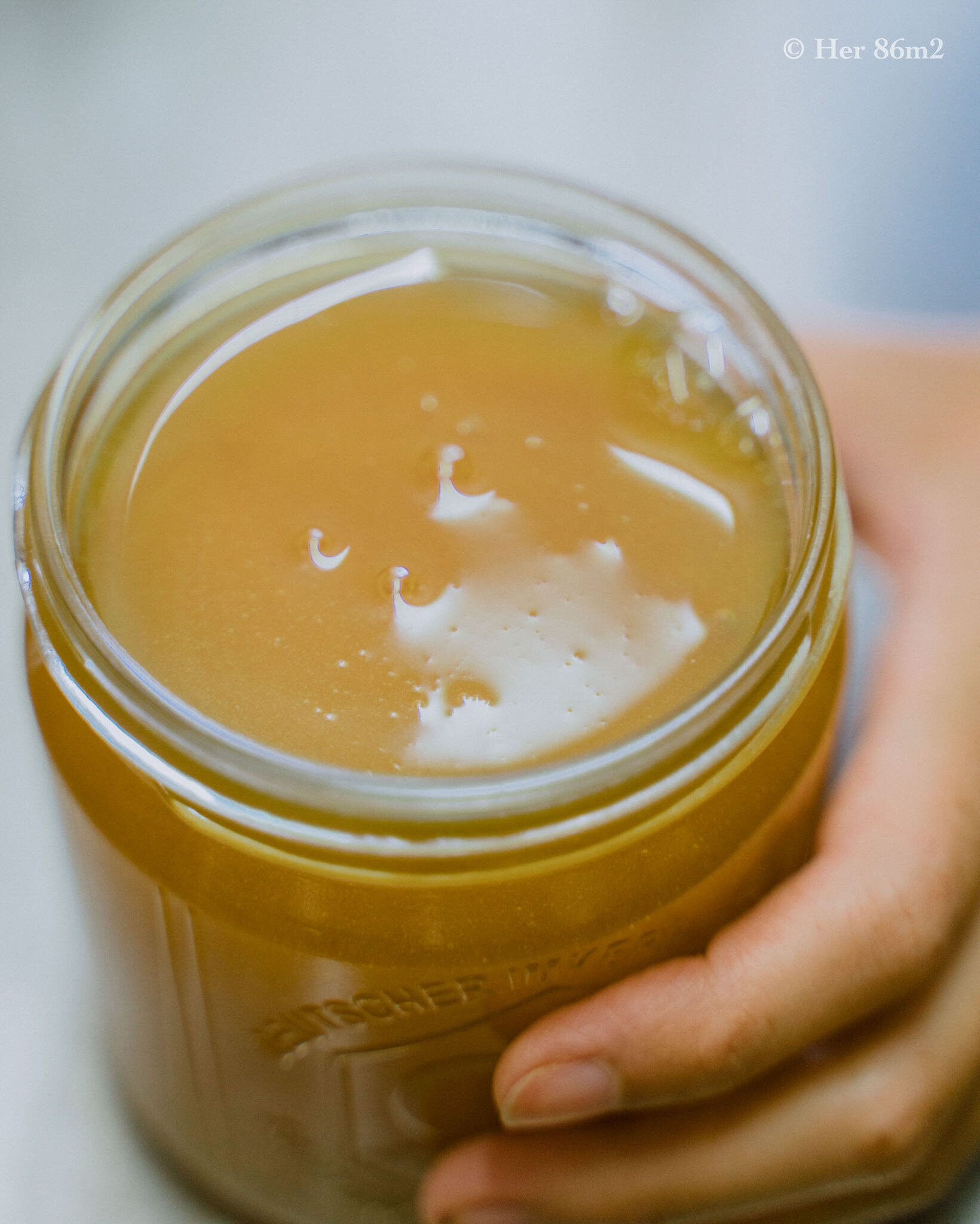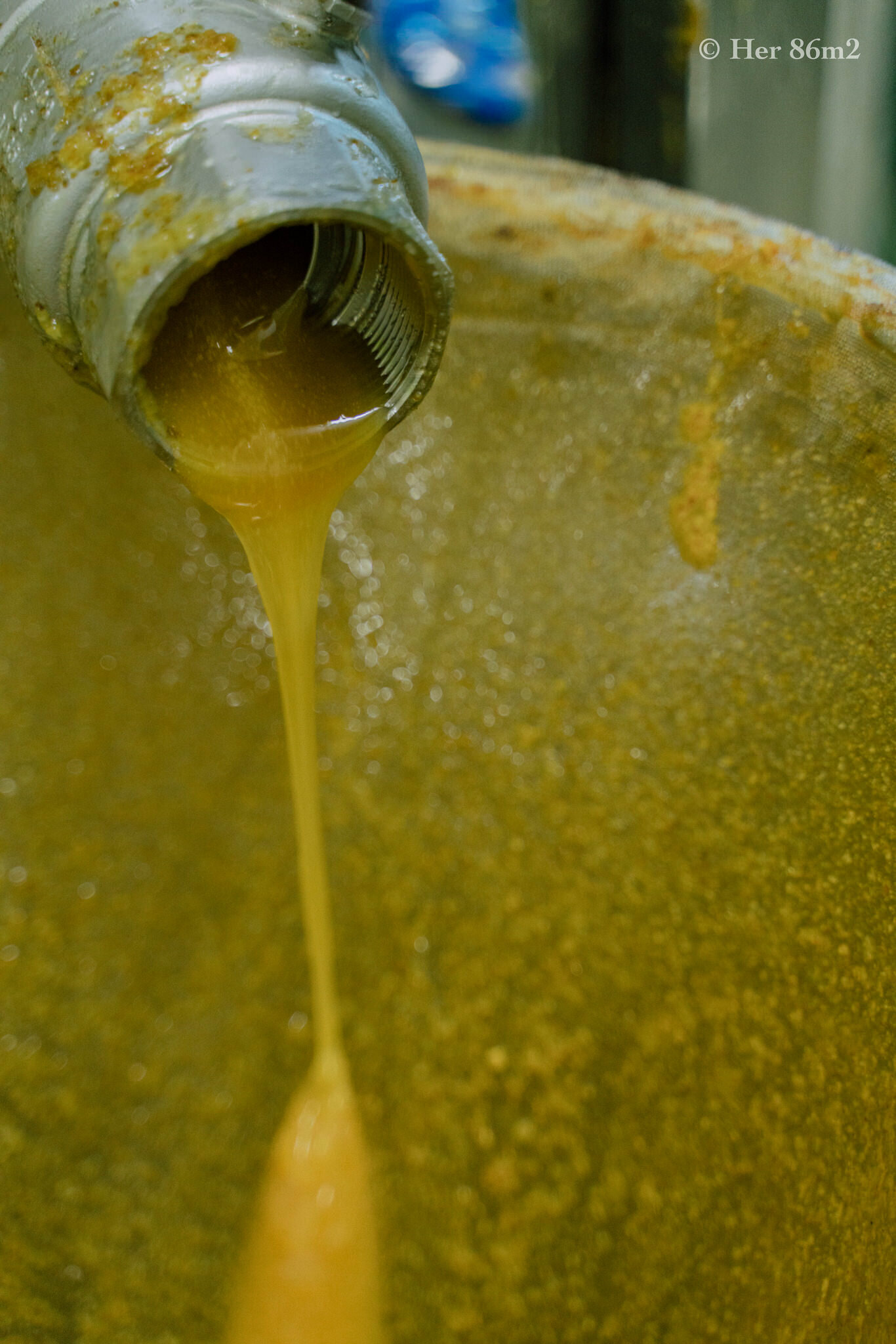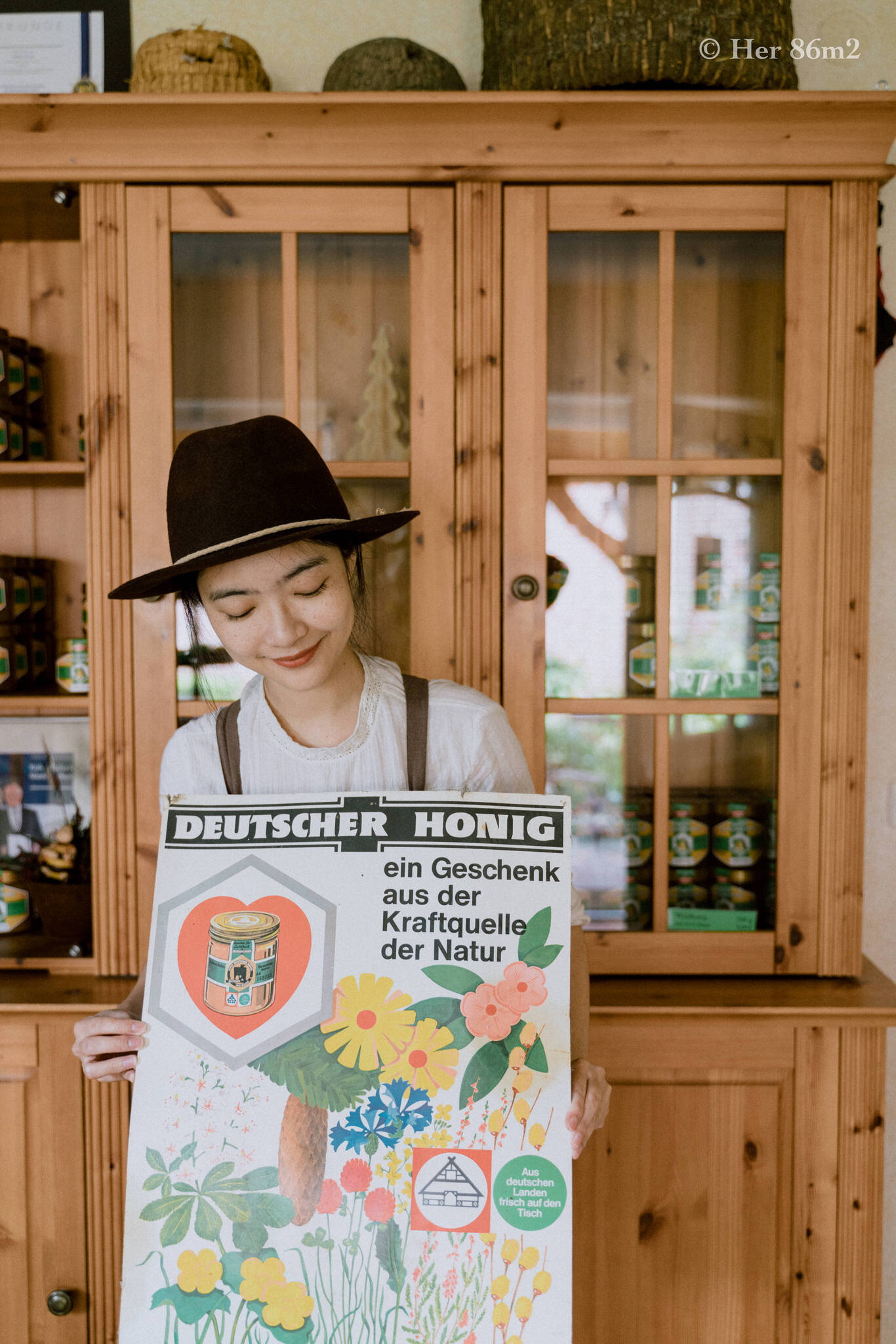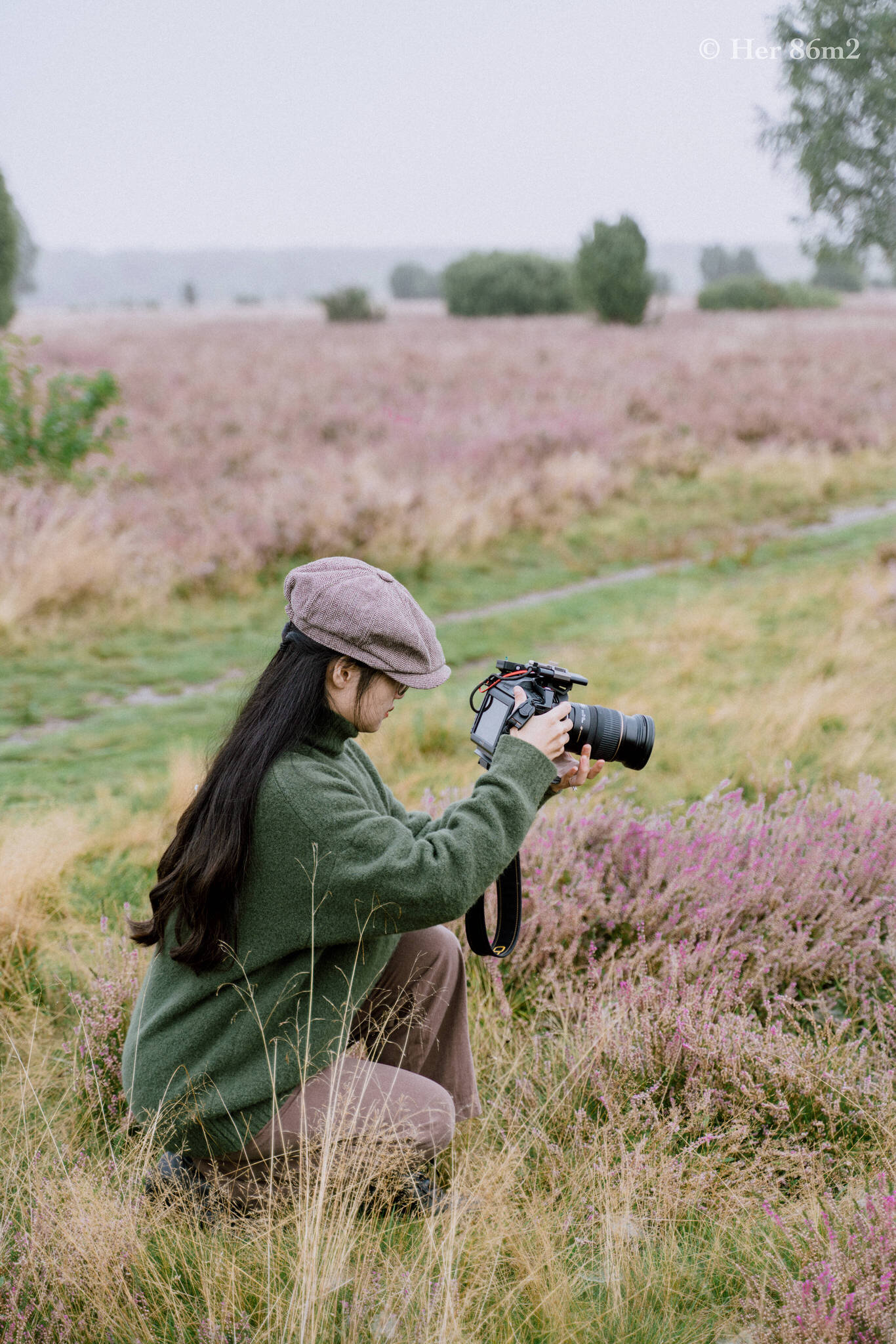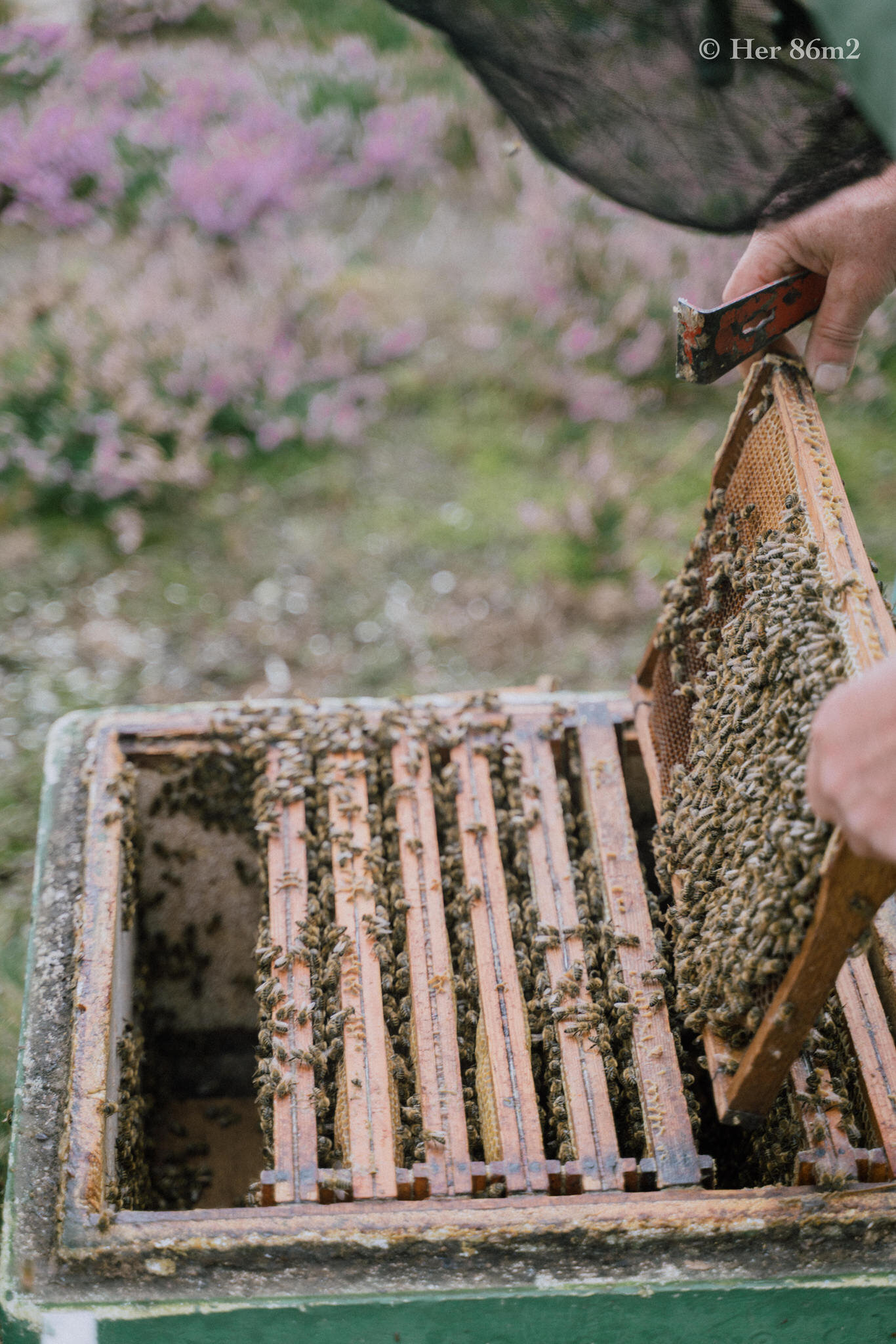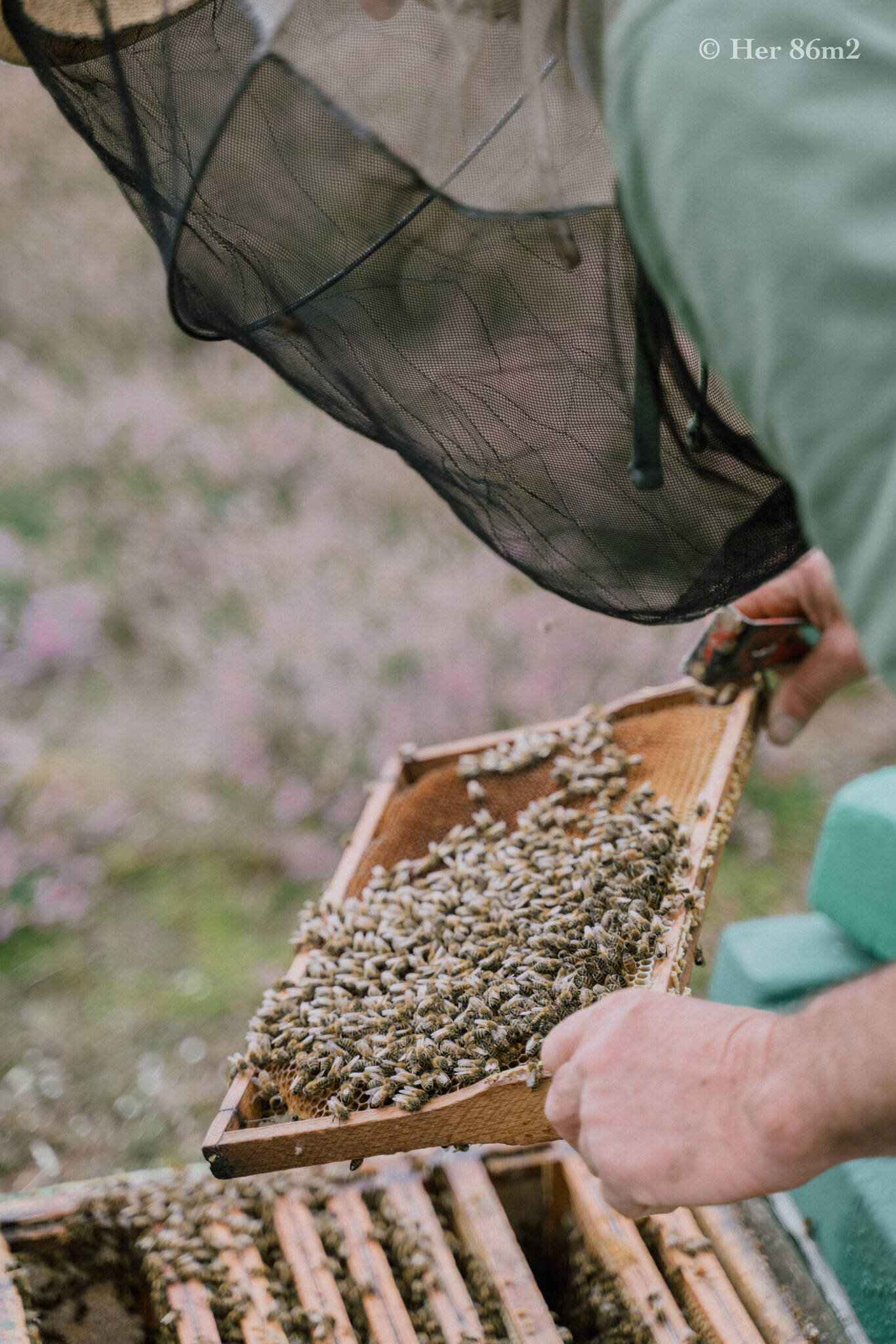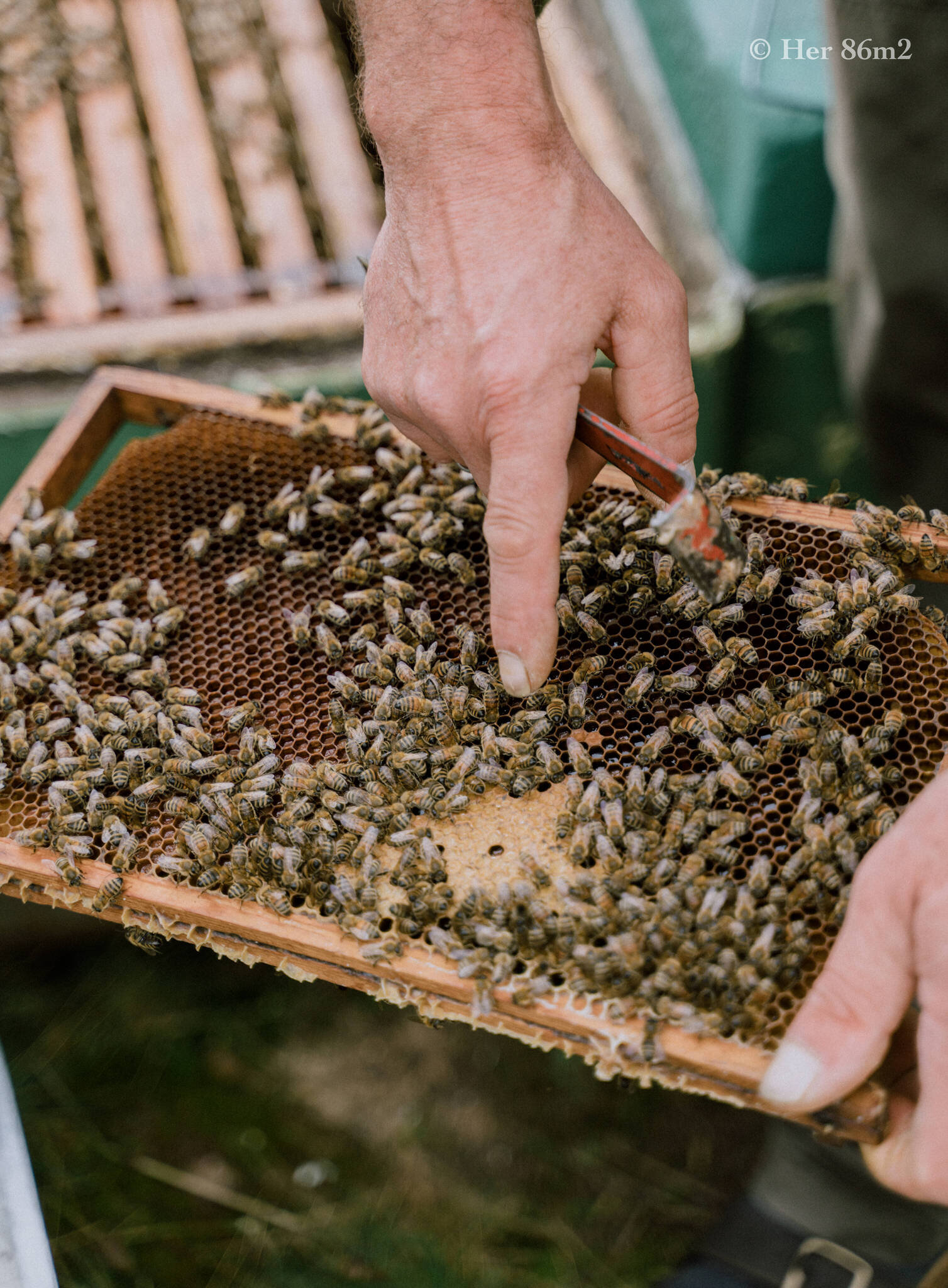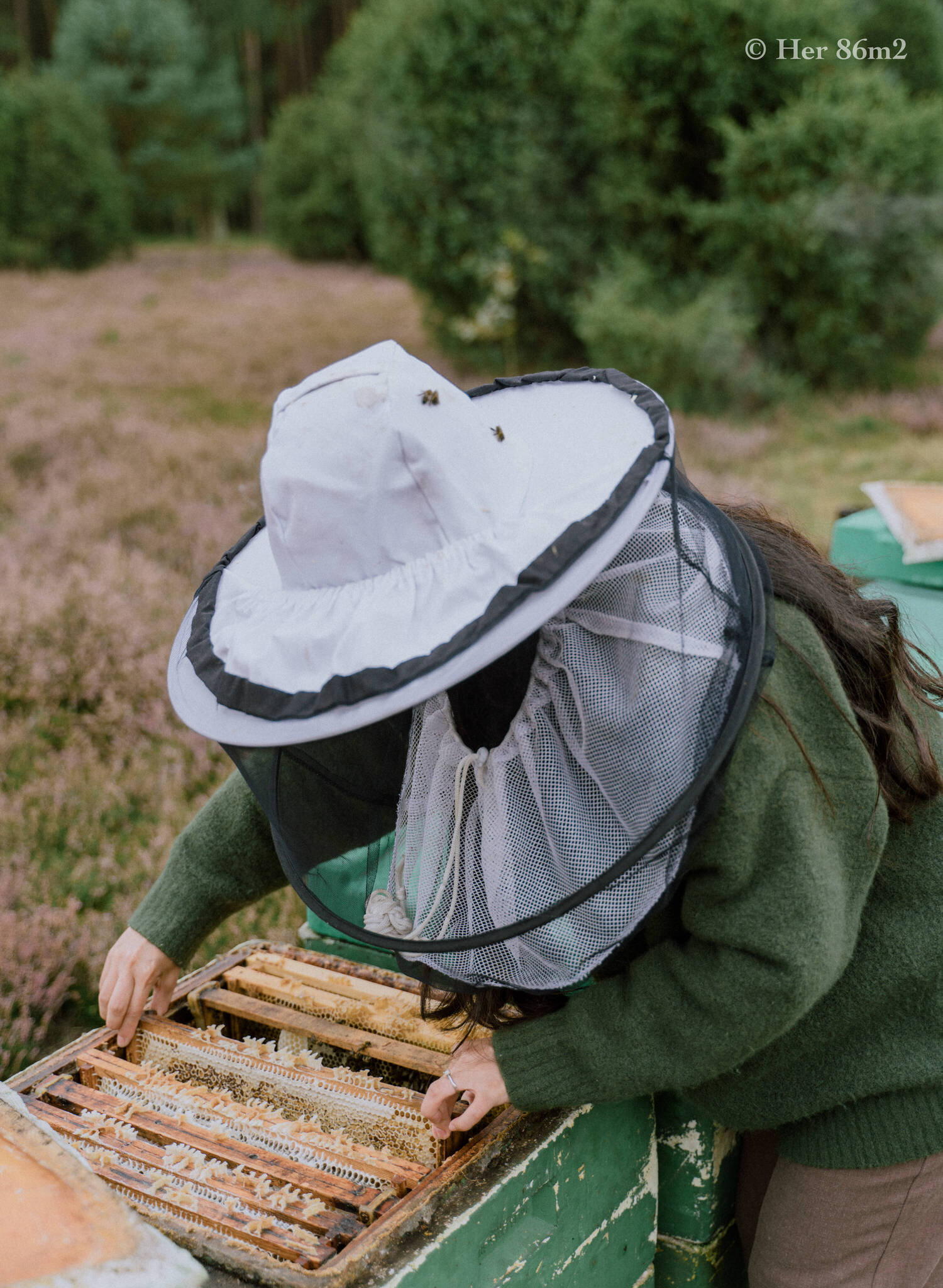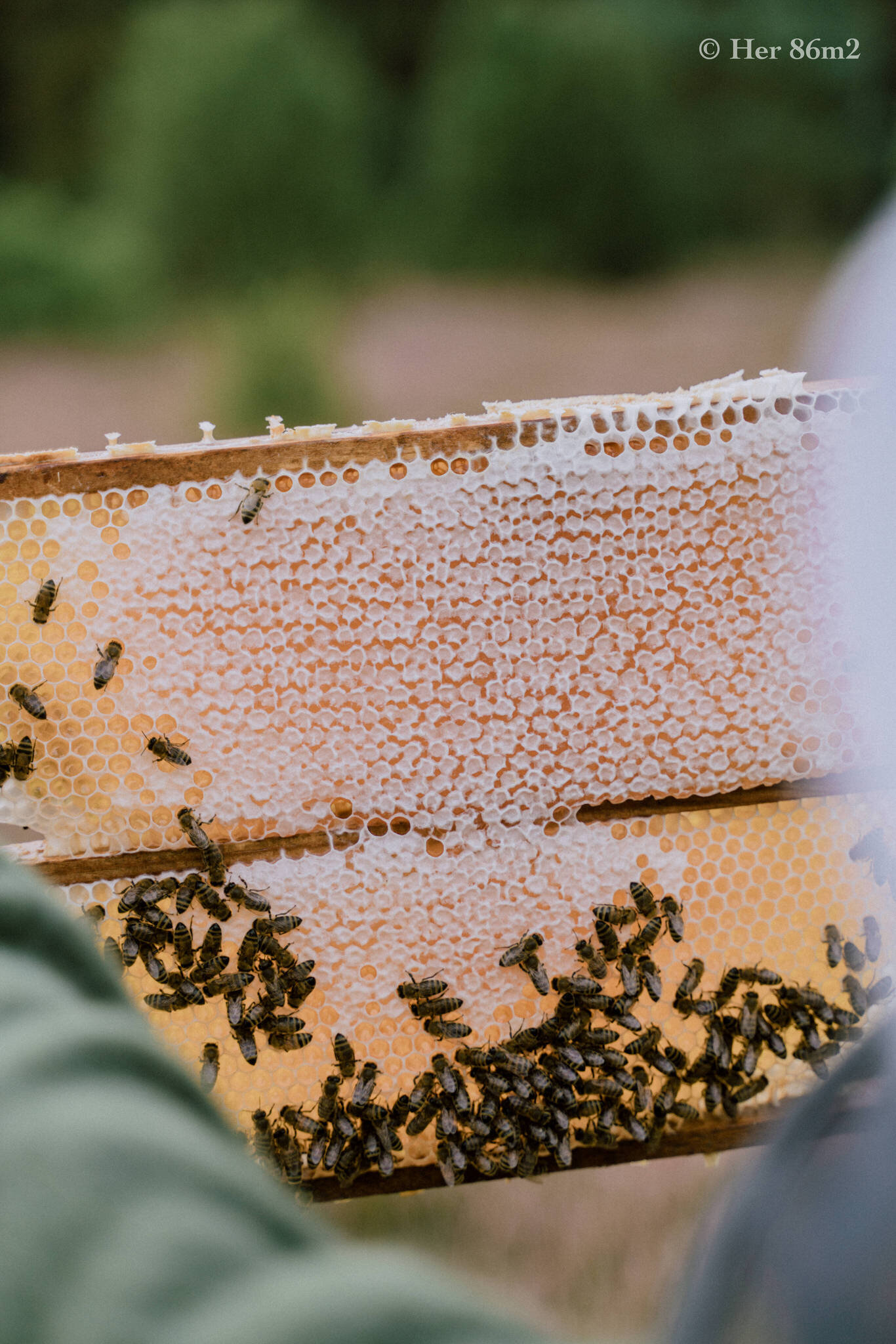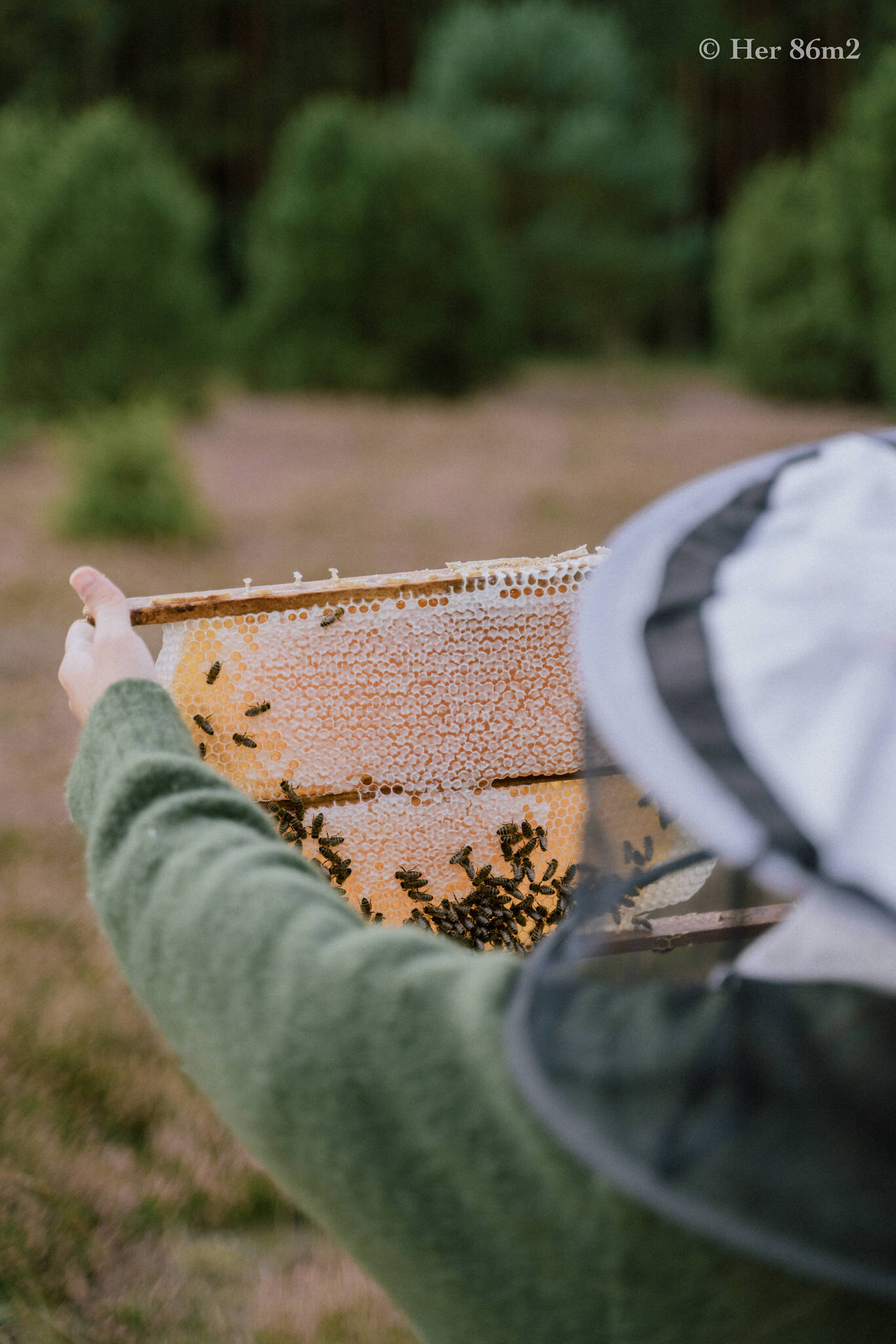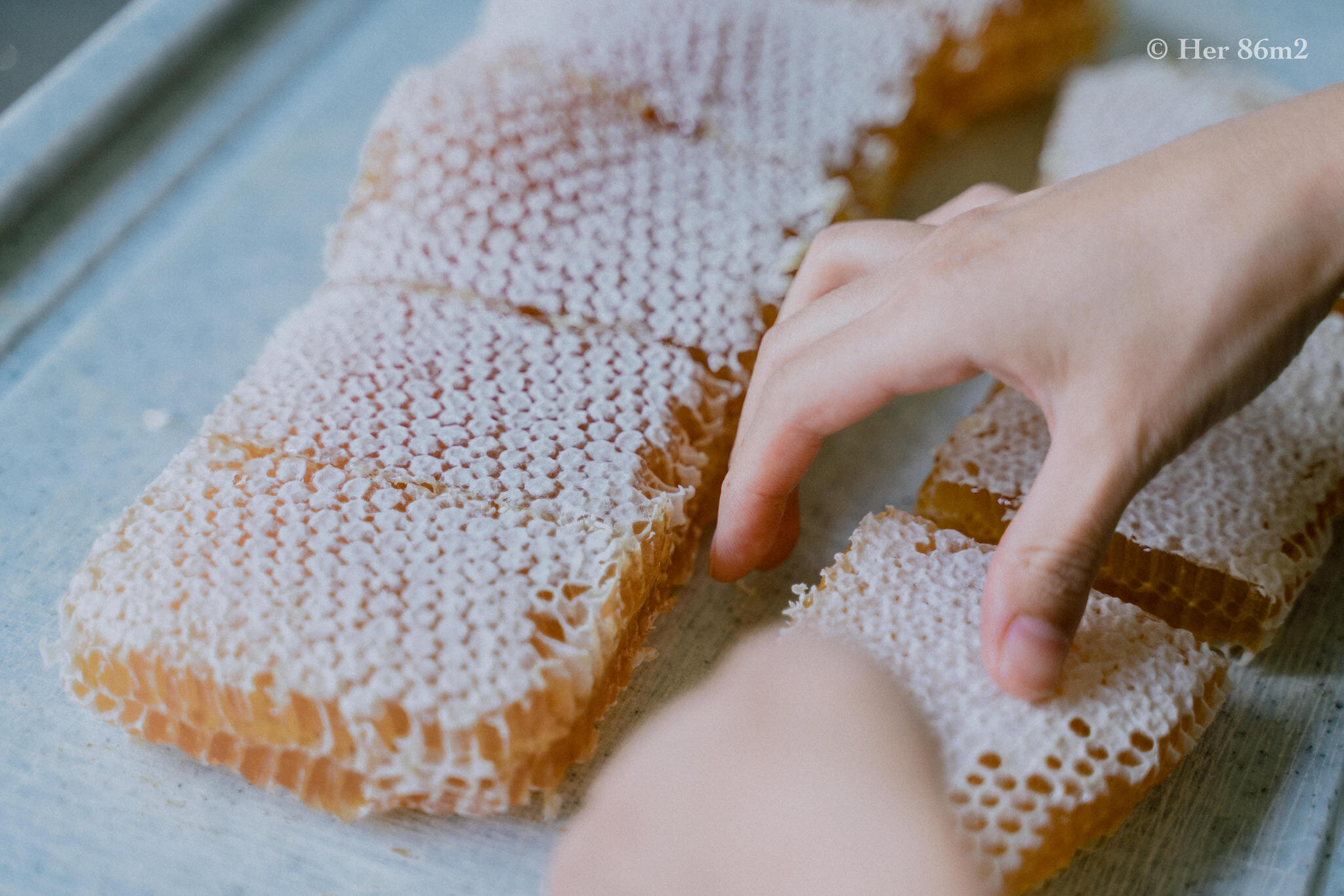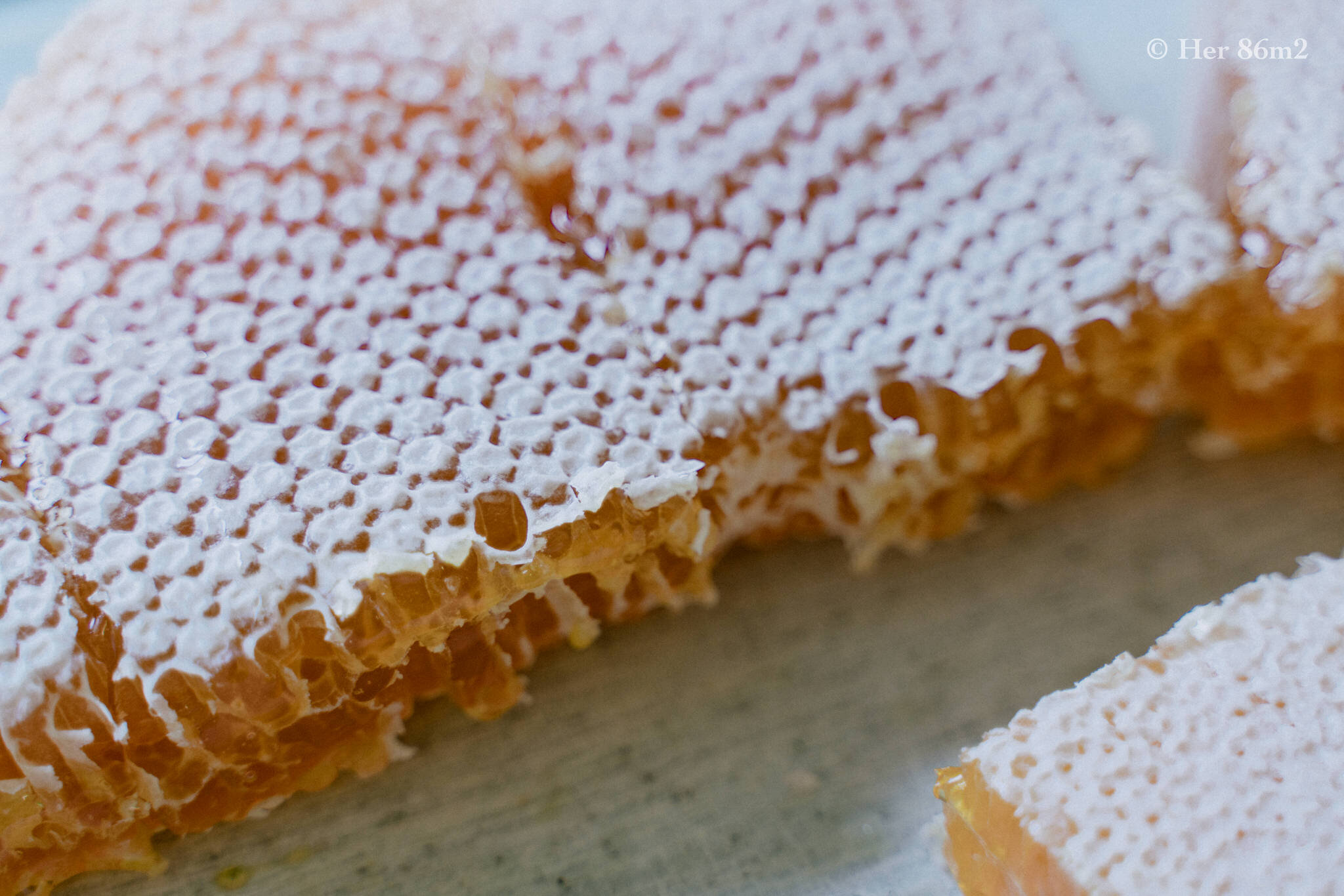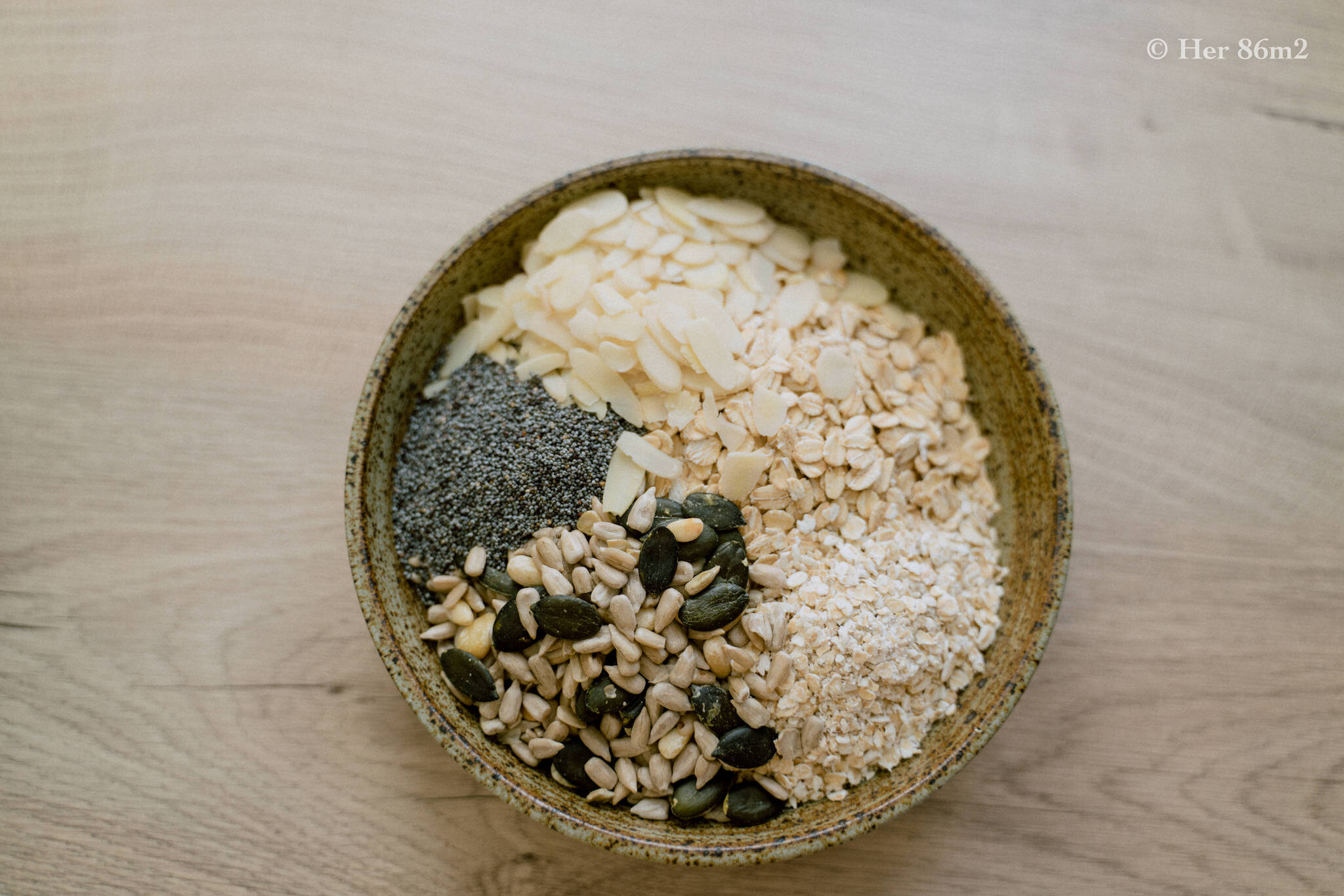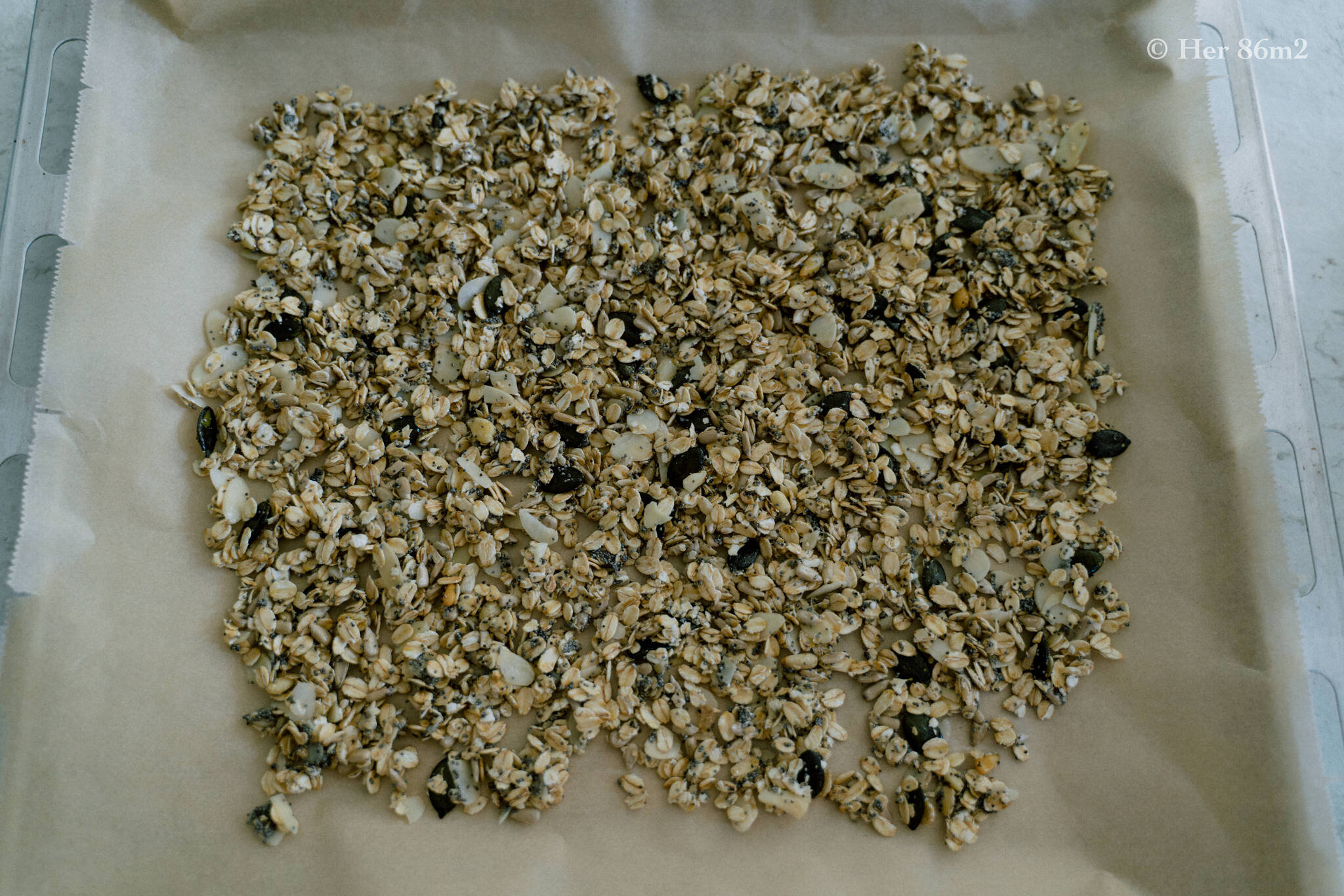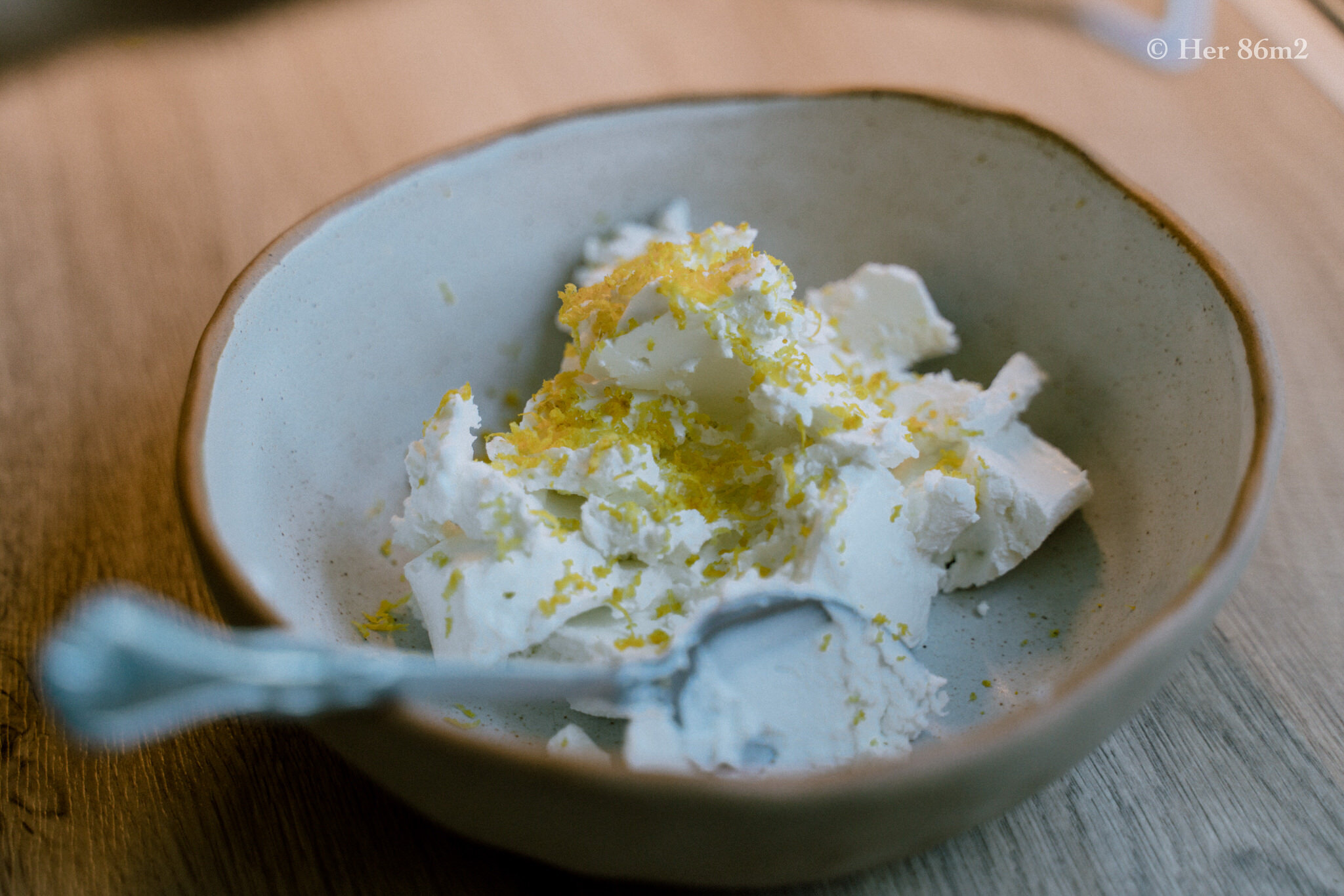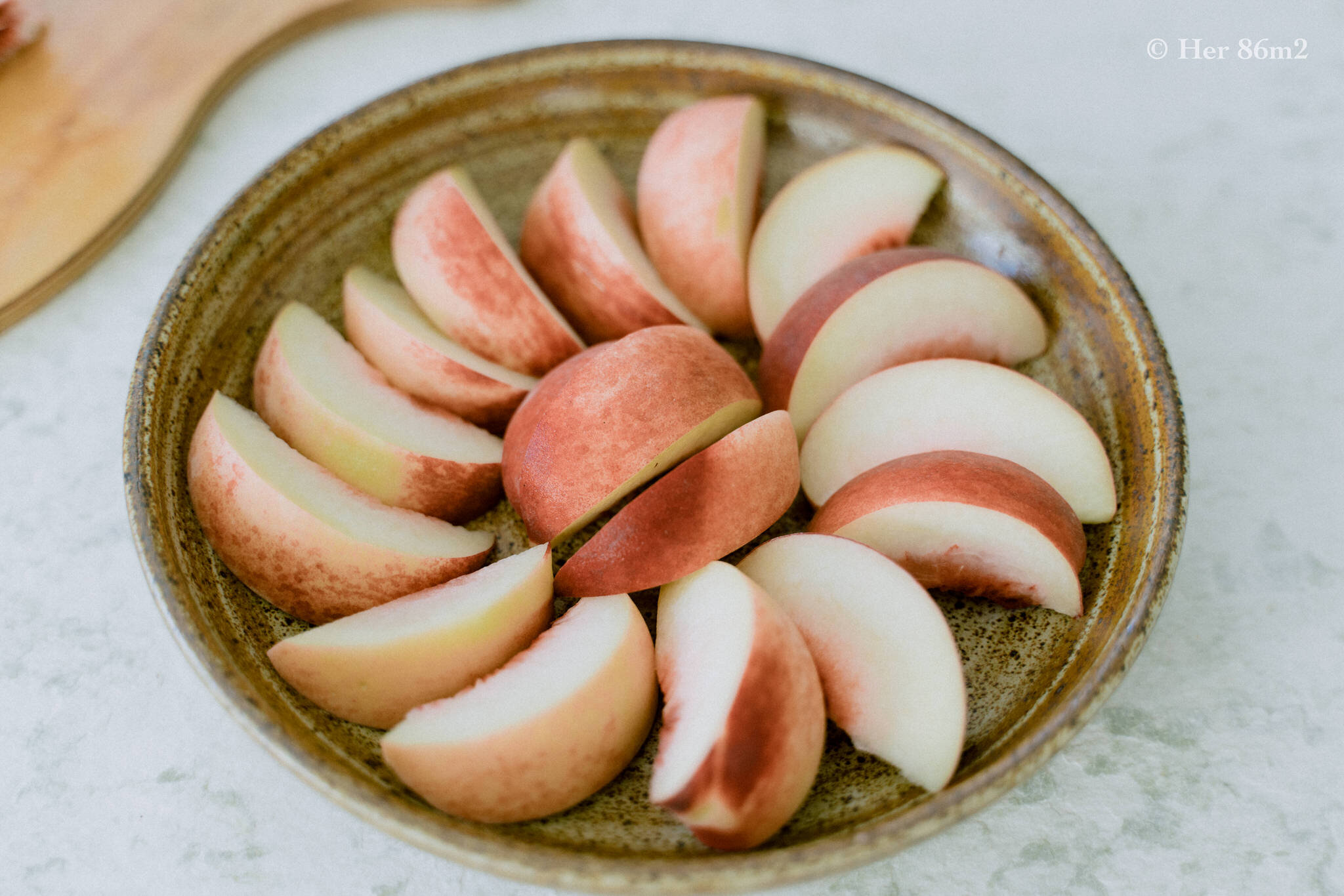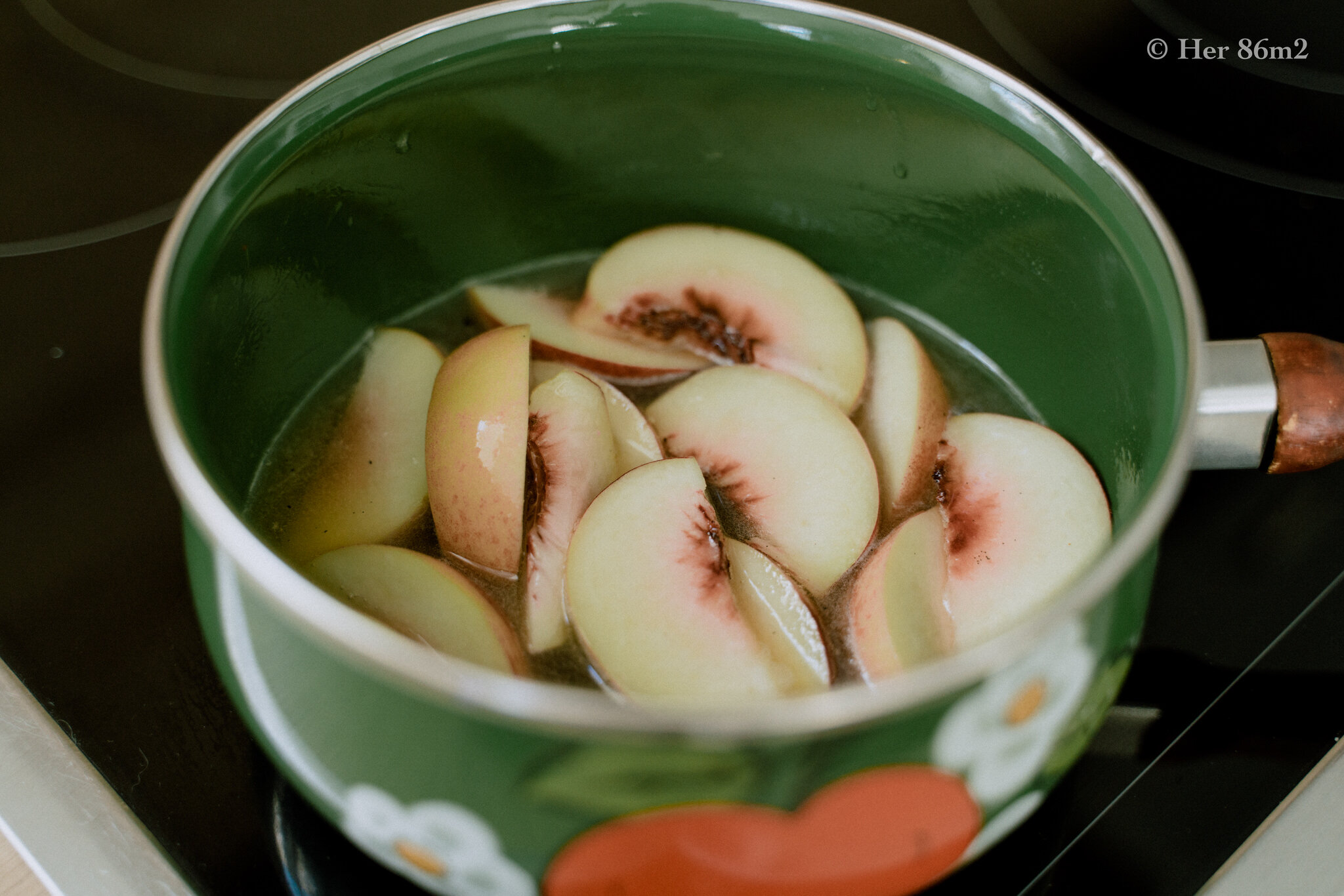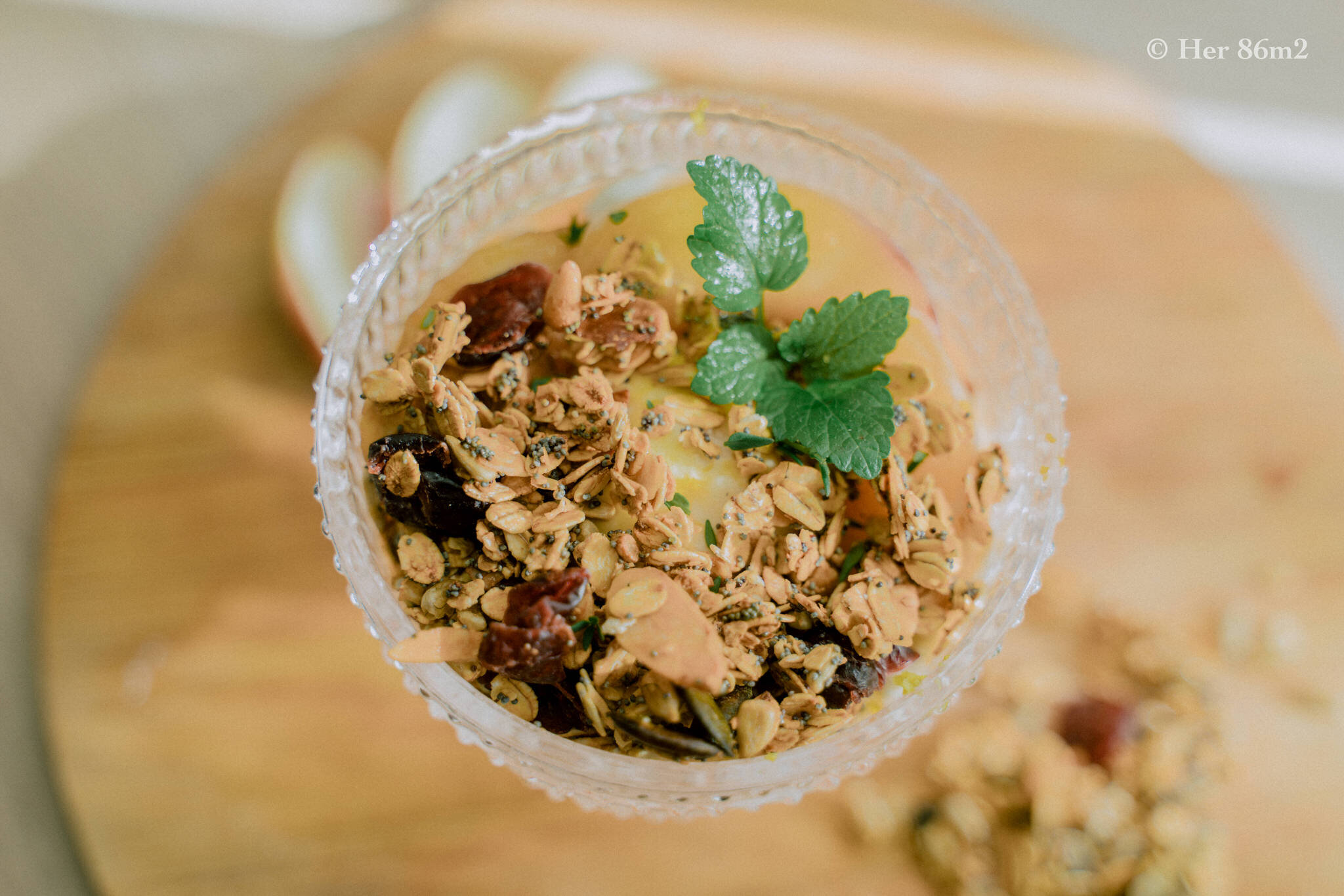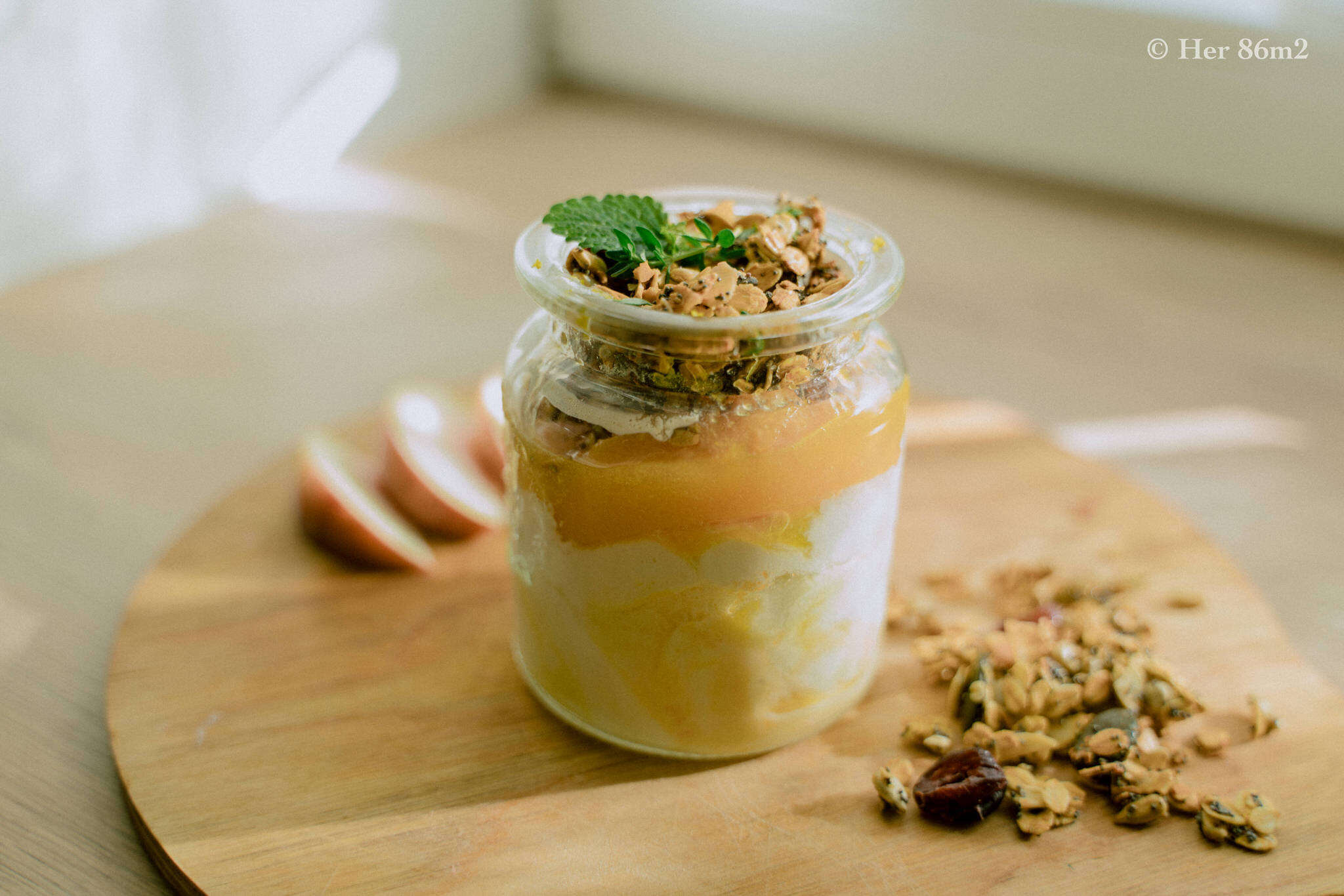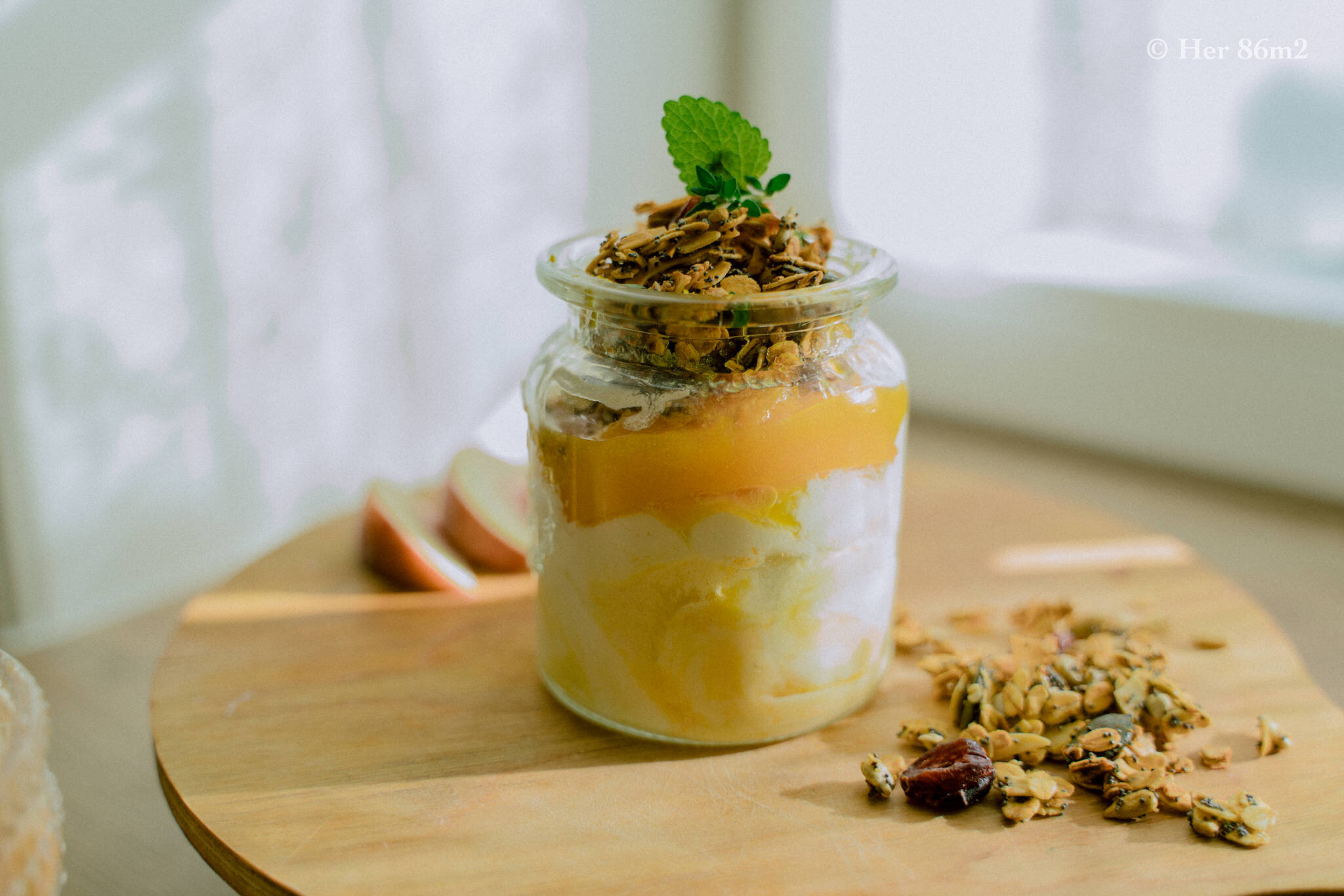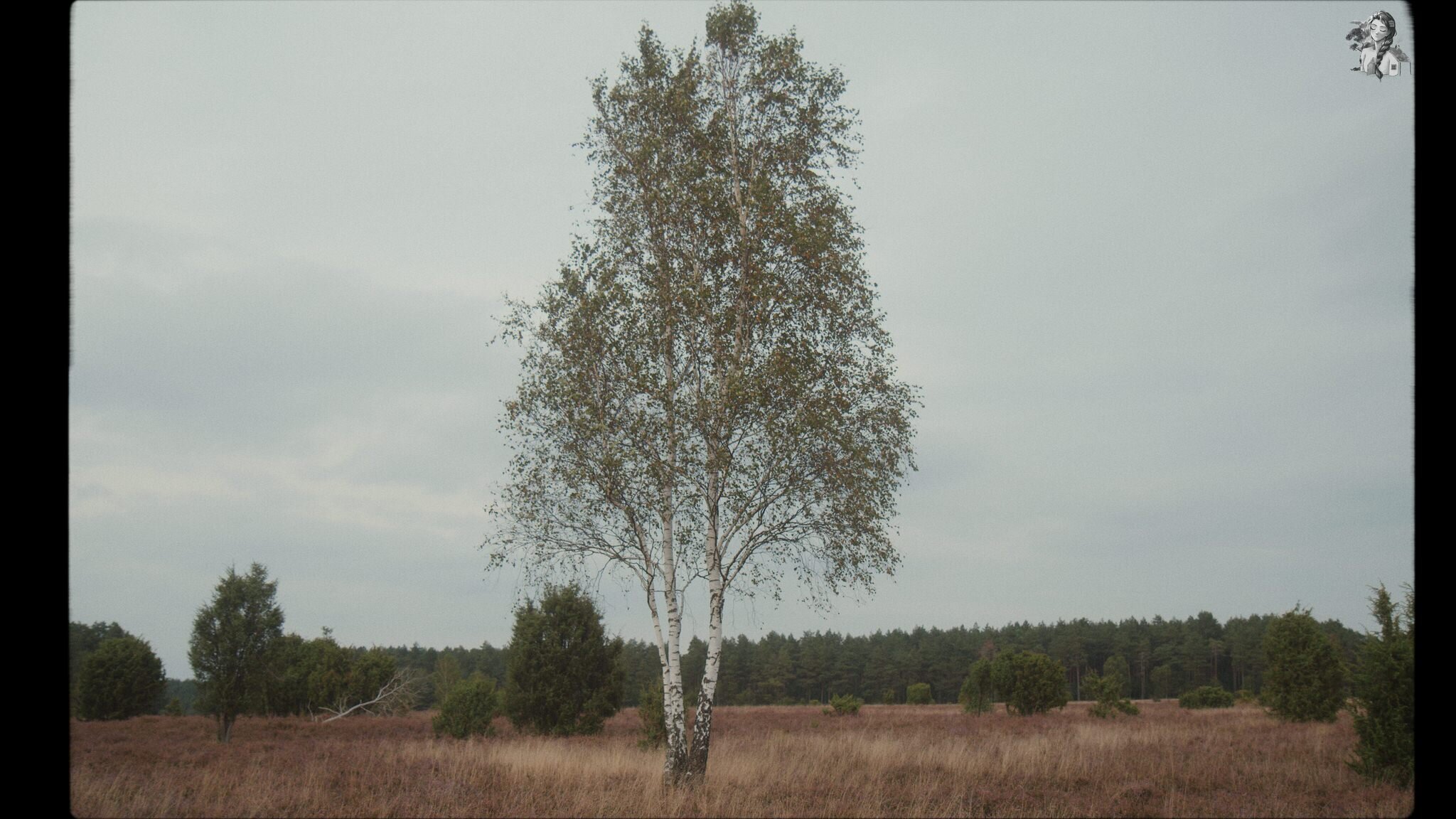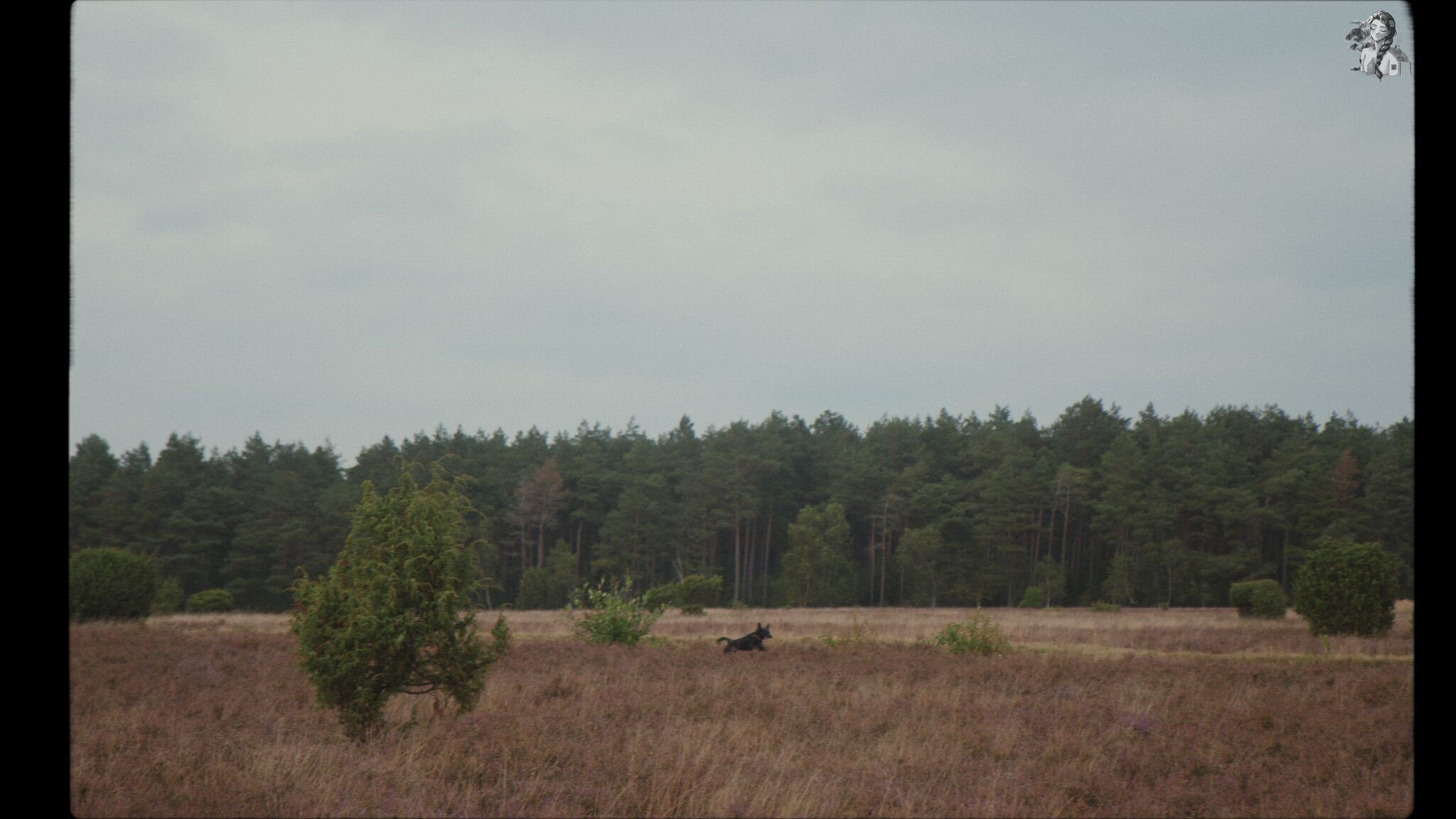Harvesting Honey! My Days Learning from a Master Beekeeper
I did something exciting the other days!
Got a chance to tag along with Klaus Ahrens - a master beekeeper.
Klaus is a third-generation beekeeper who carries on the 130 year old family tradition.
The production of heather honey is complex.
A hell of a job, so to speak.
But what fun days was learning the art of beekeeping and making honey.
So join in have some fun :)
After that we will make some delicious dessert from the honey we just harvested.
Lüneburg Heath - where we're living at the moment was once a dense oak forest.
But as early as 3,000 BC, man began to move sheep through the region. They were only too happy to eat the lush green oak saplings. Intensive grazing lead to the constant clearing of the forests and thus the spreading of wide open spaces, in which a plant species resistant to grazing settled – heather. A particularly resistant sheep species developed, which did well on the sandy soil and the nutrient-poor plants – the grey horned Heidschnucke.
What has the cute Heidschnucke to do with heather honey?
The heather sheep eat all the saplings in the heather and trample the cobwebs in which the bees would otherwise be trapped when they wander through the heather. Thus, they pave the way for a worry-free harvest.
I license a lot of music for my videos here - Sign up using the link below to get 2 extra months free :)
One hundred and thirty-five million years ago almost all plants scattered their pollen on the wind and hoped against hope that a tiny proportion of it would, by chance, land on a female flower. This is, as you might imagine, a very inefficient and wasteful system, with perhaps 99.99 per cent of the pollen going to waste – falling on the ground or blowing out to sea. As a result they had to produce an awful lot.
Nature abhors waste, and it was only a matter of time before the blind stumbling of evolution arrived at a better solution in the form of insects.
Pollen is very nutritious. Some winged insects now began to feed upon it and before long some became specialists in eating pollen.
Flying from plant to plant in search of their food, these insects accidentally carried pollen grains upon their bodies, trapped amongst hairs or in the joints between their segments. When the occasional pollen grain fell off the insect on to the female parts of a flower, that flower was pollinated, and so insects became the first pollinators, sex facilitators for plants. A mutualistic relationship had begun which was to change the appearance of the earth.
Heather honey was in great demand in the Middle Ages. The heather honey was traded particularly in Celle, where a large trading center was established. But the introduction of mineral fertilizers in the second half of the 19th century caused problems for the heathland. With the shrinking of the heather area due to agriculture, the decline of heather beekeeping went hand in hand.
Today there are only some beekeepers in the Lüneburg Heath who produce the classic heather honey which is known across the country!
In August and September, when the weather is appropriate and the heather flowers are in full bloom, they turns purple, the bees swarm out and prepare the famous heather honey from the nectar.
Also, the production of heather honey is complex.
A hell of a job, so to speak.
Work of bees
From spring to autumn, bees fly through nature to collect nectar and pollen.
They are traveling at approx. 20 km / h and move in a radius of approx. 3 km around the stick.
When the flowers fly towards the bees, pollen gets stuck on the bees. She transports this to the next flower, which is then pollinated. In addition, the bee sucks out the sweet nectar of the plant with each flowering, which later becomes honey.
After the bee has flown to around 200 flowers, it returns to its colony. There the bees pass on the collected nectar to each other and add ingredients that kill germs and make the honey durable. The honey is then stored in cells of the honeycomb to mature and dry.
When enough water has been removed from the honey by evaporation, the honeycomb is covered with a thin layer of wax to protect it.
This completes the work of the bees.
Work of the beekeeper
The work of the beekeeper does start long before the harvest. Throughout the year he has to regularly check the bees, feed them and, in an emergency, treat them against pests such as the varroa mite.
Since not all flowering plants can always be found in their home area, many beekeepers drive their bee colonies several 100 km to suitable regions.
If the bees have done a good job and the boxes are full of honey, it is time for harvest.
The beekeeper must first open the boxes and remove the honeycombs. Since the bees do not want to give away the honey - without further ado, the beekeeper uses a so-called smoker. This is fired with sawdust, tansy, straw or the like and generates smoke. This simulates a fire threat to the bees and rushes on their supplies to prepare for an escape. The bees are so distracted that the beekeeper can now work calmly and without stinging.
Once all the honeycombs have been removed from the beehive, the beekeeper takes them to his apiary, where he can start processing the honey.
PHOTO EDITING PRESETS FOR LIGHTROOM / PRESETS CHỈNH ẢNH:
BUYING PRINTS / MUA ẢNH IN MÌNH CHỤP:
https://www.her86m2.com/print-shop
STAY CONNECTED / KẾT NỐI VỚI MÌNH:
Website: https://www.her86m2.com
Facebook: https://www.facebook.com/her86m2
Instagram: https://www.instagram.com/thuydao__/
The consistency of the heather honey is gel-like and so you need a special process to remove the honey from the honeycomb. Simple spinning, as with other types, does not work here. A spiked roller is used to loosen the honey before it is centrifuged. The needles must be preheated. Because the production is so laborious and only limited during this 6-8 weeks, the heather honey also has a certain value.
Heather honey has a strong, spicy aroma and is amber in color. It has a slightly bitter, tangy, pungent, smoky, mildly sweet taste that persists for a long time. It has a strong distinctive woody, warm, floral, fresh fruit aroma reminiscent of heather flowers.
It remains thick for a long time (this is due to the high proportion of protein compounds and colloids).
In order to hold a jar full of delicious honey in your hand, the bees - and the beekeeper too - have to perform at their best.
In the first step, the honeycombs are freed from the thin layer of wax that the bees have produced to protect the honey. The sweet honey is already underneath. In the past, this step had to be done by hand with special decapping forks. Today there are fully automatic machines that can remove the entire layer of wax in one step.
This is followed by the flinging of the honeycombs. With the help of centrifugal force, the honey is thrown out of the honeycomb and caught.
Then the centrifuged honey is filtered to remove any foreign bodies or remnants of the honeycomb. The honey can then be poured into large buckets for storage.
Due to the consistency of the honey, small, lighter substances migrate to the surface during storage, so that they can be easily skimmed off. So honey has a self-cleaning effect.
To make the honey creamy, it has to be stirred before filling into the jar. This will avoid crystals and the honey will be a real treat.
When the honey is nice and smooth, it can be filled into jars, labeled and enjoyed.
These steps are carried out to perfection by professional beekeepers. Hobby beekeepers can also produce their own honey. However, buying bees should be carefully considered. It is advisable to have a beekeeper who supports you in the correct handling and is available to answer any questions.
PHOTO EDITING PRESETS FOR LIGHTROOM / PRESETS CHỈNH ẢNH:
BUYING PRINTS / MUA ẢNH IN MÌNH CHỤP:
https://www.her86m2.com/print-shop
STAY CONNECTED / KẾT NỐI VỚI MÌNH:
Website: https://www.her86m2.com
Facebook: https://www.facebook.com/her86m2
Instagram: https://www.instagram.com/thuydao__/

